Forums
- Forums
- Axis And Allies Forum
- General Discussion
- Aviation News
Aviation News
Post a reply
- Go to Previous topic
- Go to Next topic
- Go to Welcome
- Go to Introduce Yourself
- Go to General Discussion
- Go to Screenshots, Images and Videos
- Go to Off topic
- Go to Works in Progress
- Go to Skinning Tips / Tutorials
- Go to Skin Requests
- Go to IJAAF Library
- Go to Luftwaffe Library
- Go to RAF Library
- Go to USAAF / USN Library
- Go to Misc Library
- Go to The Ops Room
- Go to Made in Germany
- Go to Campaigns and Missions
- Go to Works in Progress
- Go to Juri's Air-Raid Shelter
- Go to Campaigns and Missions
- Go to Works in Progress
- Go to Skinpacks
- Go to External Projects Discussion
- Go to Books & Resources
-
7 years agoSun Oct 08 2017, 12:53pm
 Main AdminA C-130 Hercules assigned to the 130th Airlift Wing, McLaughlin Air National Guard Base, Charleston, W.Va. awaits takeoff to deliver supplies to Puerto Rico, Oct. 5, 2017, at Savannah Air National Guard Base, Savannah, Georgia. Guard units from across the country delivered supplies and evacuated families in support of recovery operations after Hurricane Maria caused widespread damage to the island. (U.S. Air National Guard photo's by Tech. Sgt. De-Juan Haley)
Main AdminA C-130 Hercules assigned to the 130th Airlift Wing, McLaughlin Air National Guard Base, Charleston, W.Va. awaits takeoff to deliver supplies to Puerto Rico, Oct. 5, 2017, at Savannah Air National Guard Base, Savannah, Georgia. Guard units from across the country delivered supplies and evacuated families in support of recovery operations after Hurricane Maria caused widespread damage to the island. (U.S. Air National Guard photo's by Tech. Sgt. De-Juan Haley)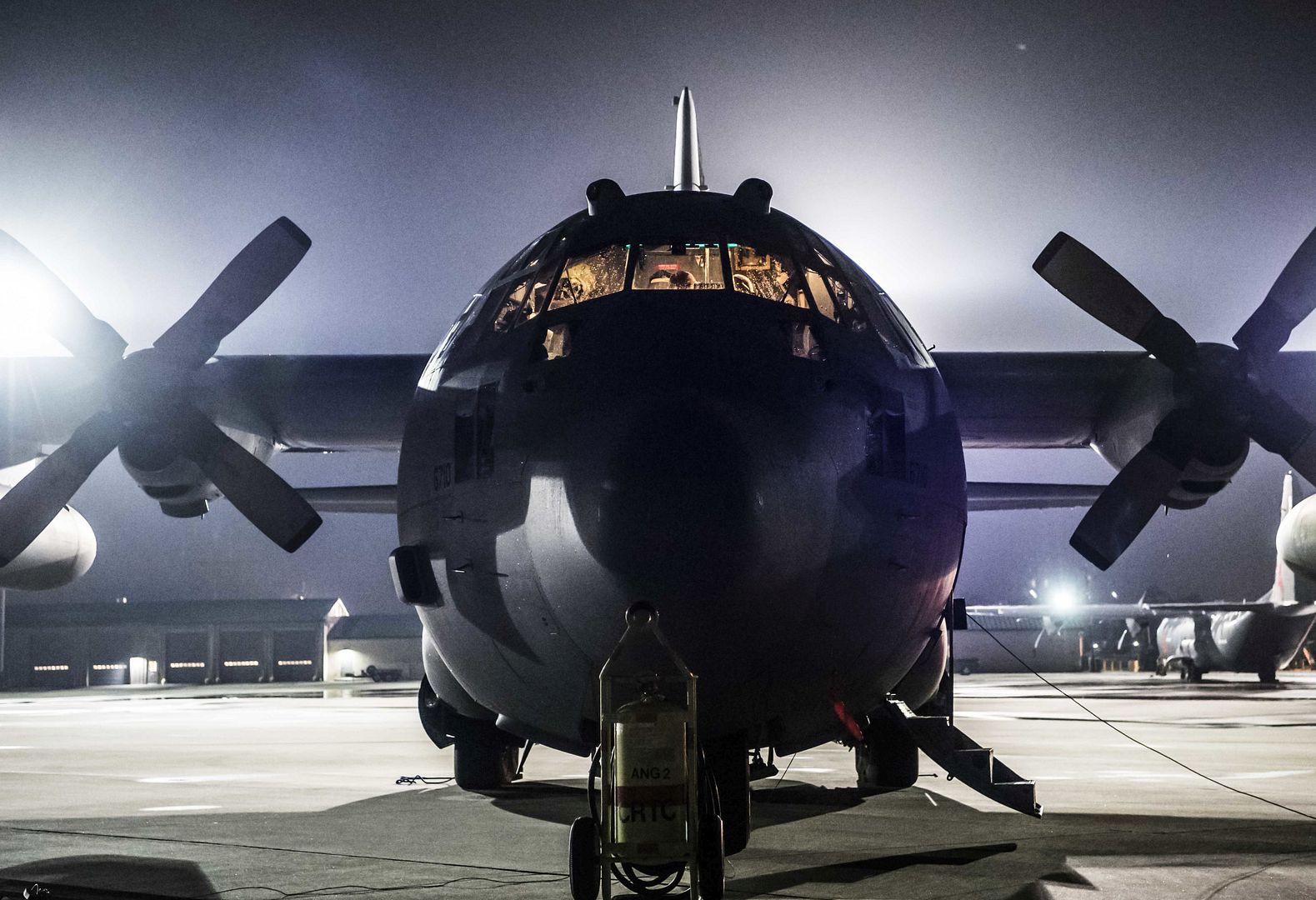
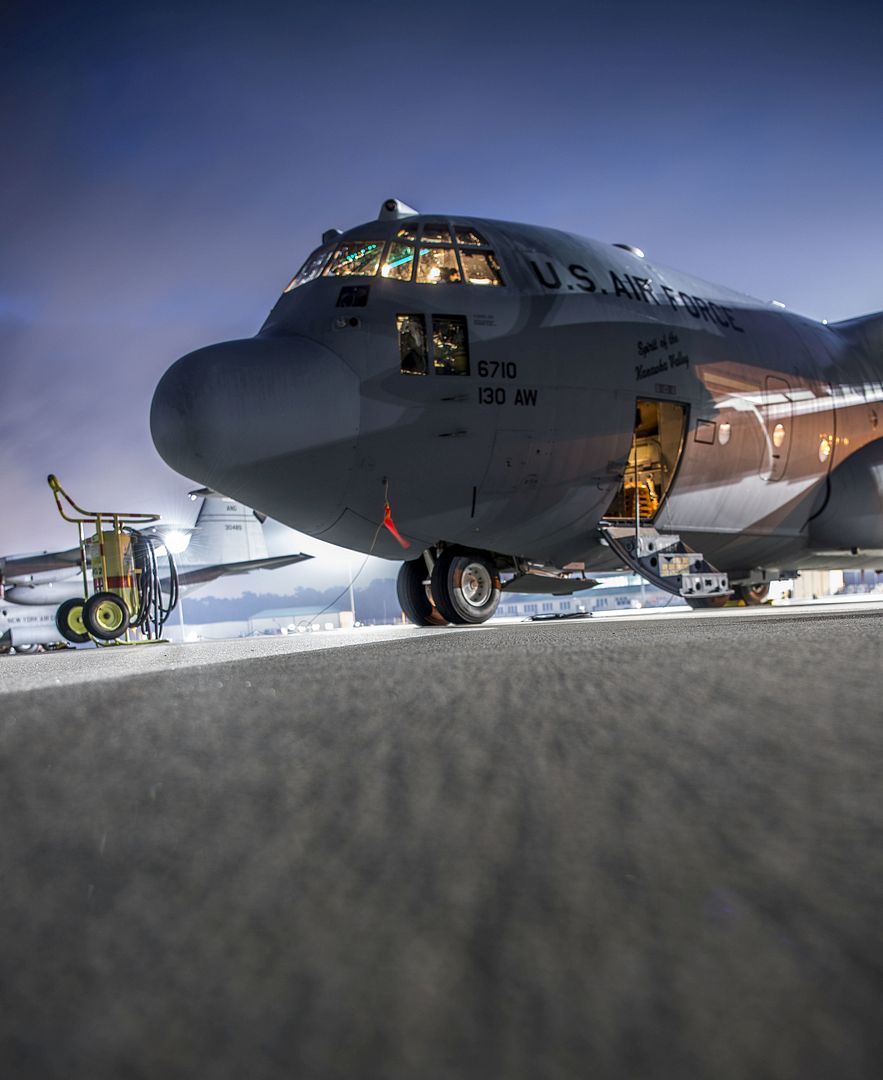
A C-5M Super Galaxy assigned to the 436th Airlift Wing, Dover Air Force Base, Delaware, taxis in at Luis Mu?oz Mar?n International Airport, Puerto Rico, Oct. 6, 2017. The C-5M transported towers from AT&T, to provide telecommunication coverage to the areas in Puerto Rico affected most from Hurricane Maria. The initiative is one of President Donald Trump's priorities for the recovery efforts in Puerto Rico.
(U.S. Air Force photo by Tech. Sgt. Larry E. Reid Jr., Released)
A U.S. Marine Corps V-22 Osprey flies over rural Puerto Rico, Oct. 7, 2017, as it carries members of a congressional delegation and its staff. The delegation toured Puerto Rico to see the damage caused by Hurricane Maria and to speak with leaders from FEMA and its federal partners. (U.S. Air Force photo by Master Sgt. Joshua L. DeMotts)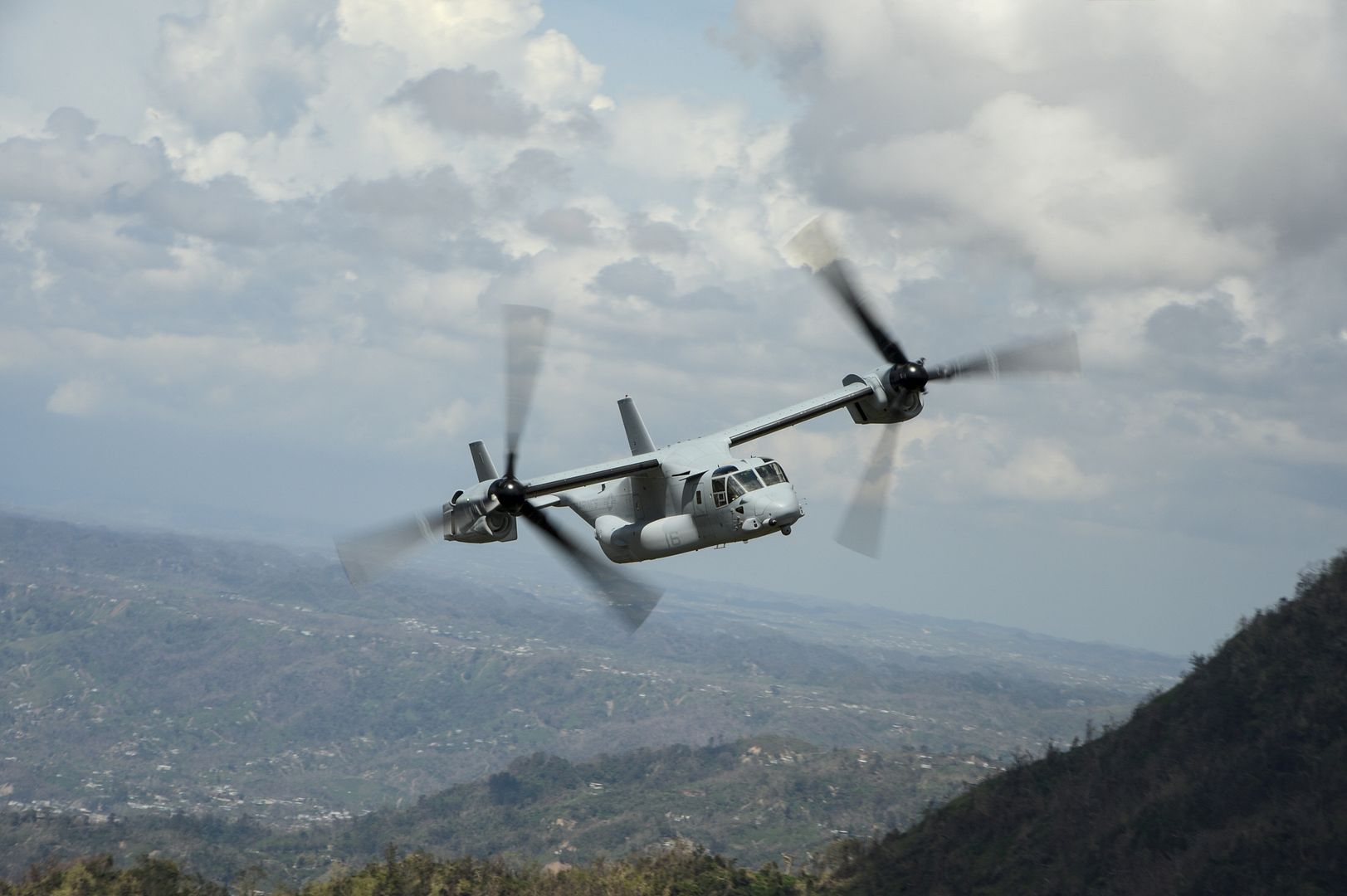
-
 Main AdminAn Afghan Air Force UH-60 Black Hawk helicopter hovers over Kandahar Airfield, Afghanistan, Oct. 7, 2017. Afghan President Ashraf Ghani cuts a ribbon inaugurating the UH-60 Black Hawk helicopter into the Afghan Air Force during a ceremony at Kandahar Airfield, Afghanistan, Oct. 7, 2017. The AAF received several Black Hawks from the U.S. to bolster their air power capabilities. The helicopters provide sustainable, capable replacements for aging aircraft currently in use. The modern aircraft will help the AAF and Afghan National Defense and Security Forces combat insurgent groups and will also bolster the AAF's manpower by 50 percent, providing almost 4,000 new jobs for Afghans. (U.S. Air Force photo by Staff Sgt. Benjamin Gonsier)
Main AdminAn Afghan Air Force UH-60 Black Hawk helicopter hovers over Kandahar Airfield, Afghanistan, Oct. 7, 2017. Afghan President Ashraf Ghani cuts a ribbon inaugurating the UH-60 Black Hawk helicopter into the Afghan Air Force during a ceremony at Kandahar Airfield, Afghanistan, Oct. 7, 2017. The AAF received several Black Hawks from the U.S. to bolster their air power capabilities. The helicopters provide sustainable, capable replacements for aging aircraft currently in use. The modern aircraft will help the AAF and Afghan National Defense and Security Forces combat insurgent groups and will also bolster the AAF's manpower by 50 percent, providing almost 4,000 new jobs for Afghans. (U.S. Air Force photo by Staff Sgt. Benjamin Gonsier)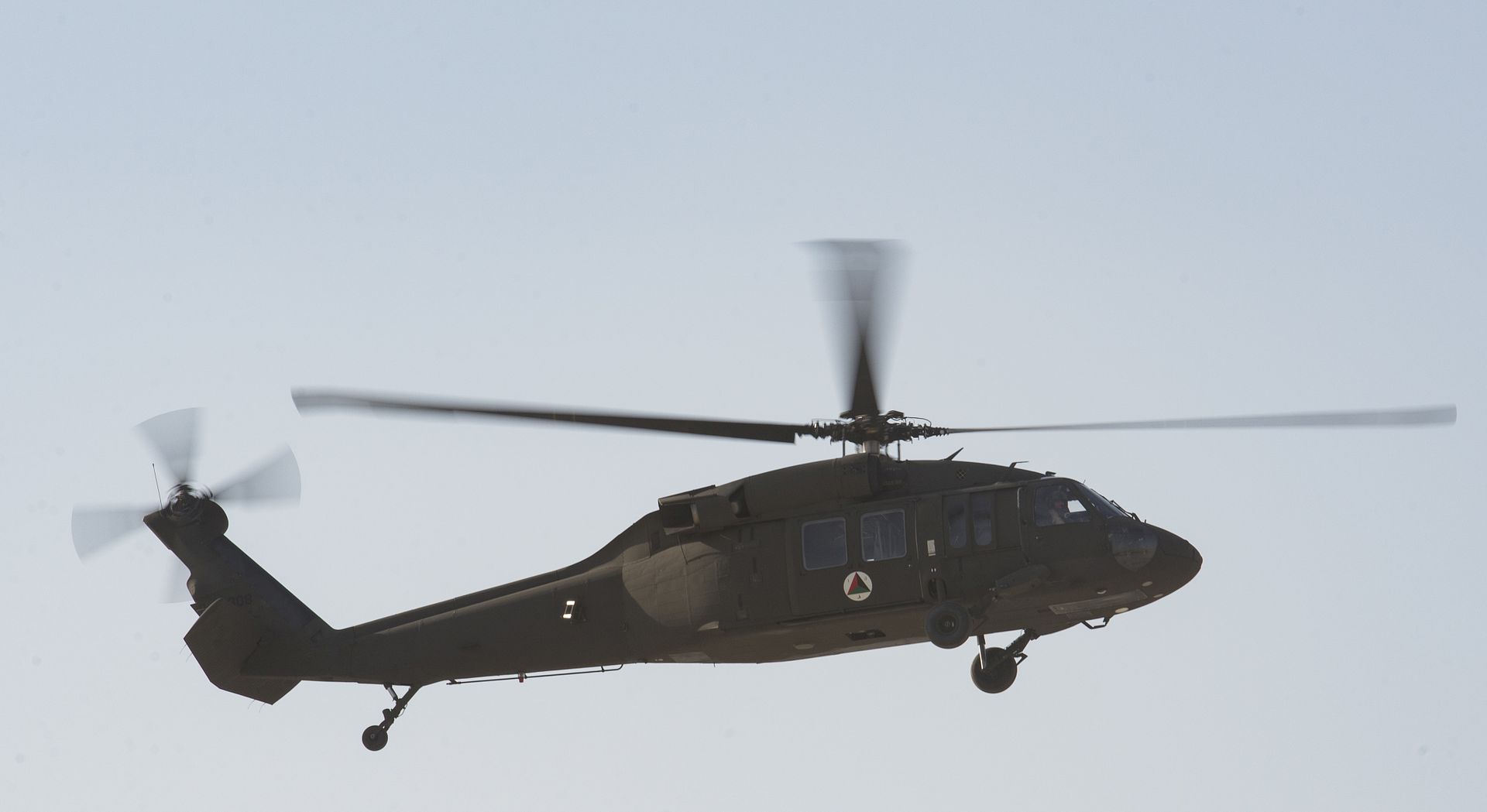
The Coast Guard launched assets in response to Hurricane Nate in New Orleans, October 8, 2017. Coast Guard Air Station New Orleans MH-65 Dolphin helicopter aircrews launched to complete Hurricane Nate damage assessment flights Sunday morning.. (U.S. Coast Guard photo by Petty Officer 3rd Class Brandon Giles)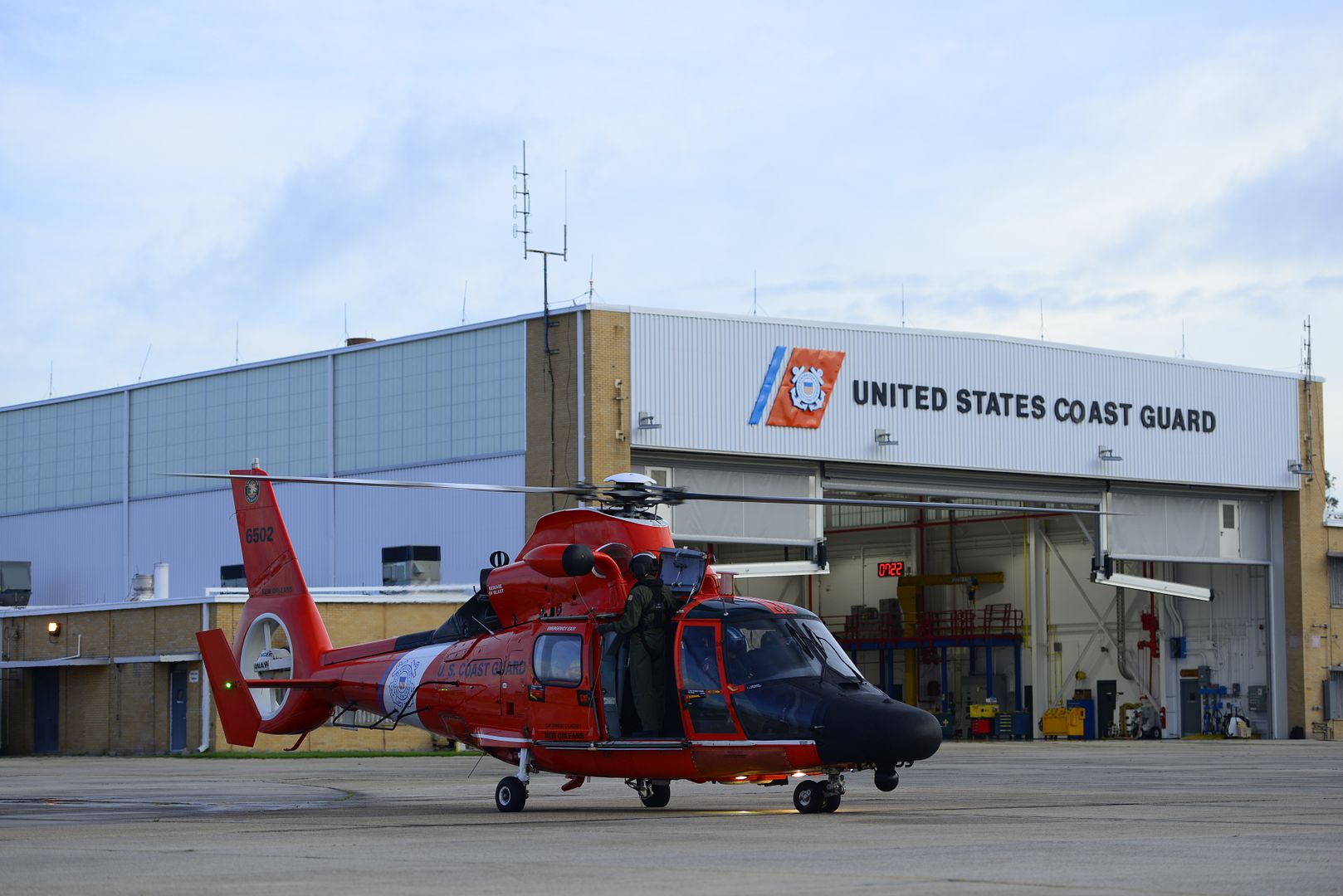
QUEBRADILLAS, Puerto Rico (Oct. 7, 2017) An MH-53E Sea Dragon from the "Vanguard" of Helicopter Mine Countermeasures Squadron (HM) 14 embarked aboard the amphibious assault ship USS Wasp (LHD 1), prepares to transport concrete barriers to help repair the Guajataca Dam in Quebradillas, Puerto Rico. Wasp is assisting with relief efforts in the aftermath of Hurricane Maria. The Department of Defense is supporting the Federal Emergency Management Agency, the lead federal agency, in helping those affected by Hurricane Maria to minimize suffering and is one component of the overall whole-of-government response effort. (U.S. Navy photo by Mass Communication Specialist 3rd Class Levingston Lewis/Released)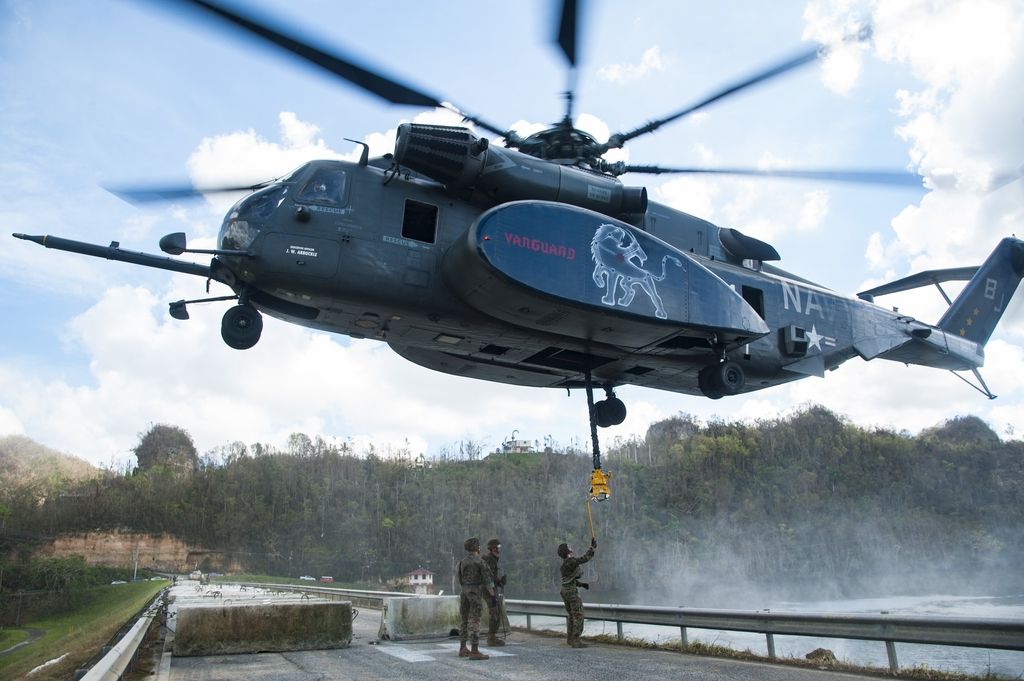
An F-22 Raptor from the 1st Fighter Wing, Joint Base Langley-Eustis, Virginia arrives at Royal Air Force Lakenheath, England Oct. 8, 2017. This flying training deployment is an opportunity for the F-22s to fly alongside Europe-based U.S. and allied air force aircraft in a realistic training environment. (U.S. Air Force photo/Senior Airman Malcolm Mayfield)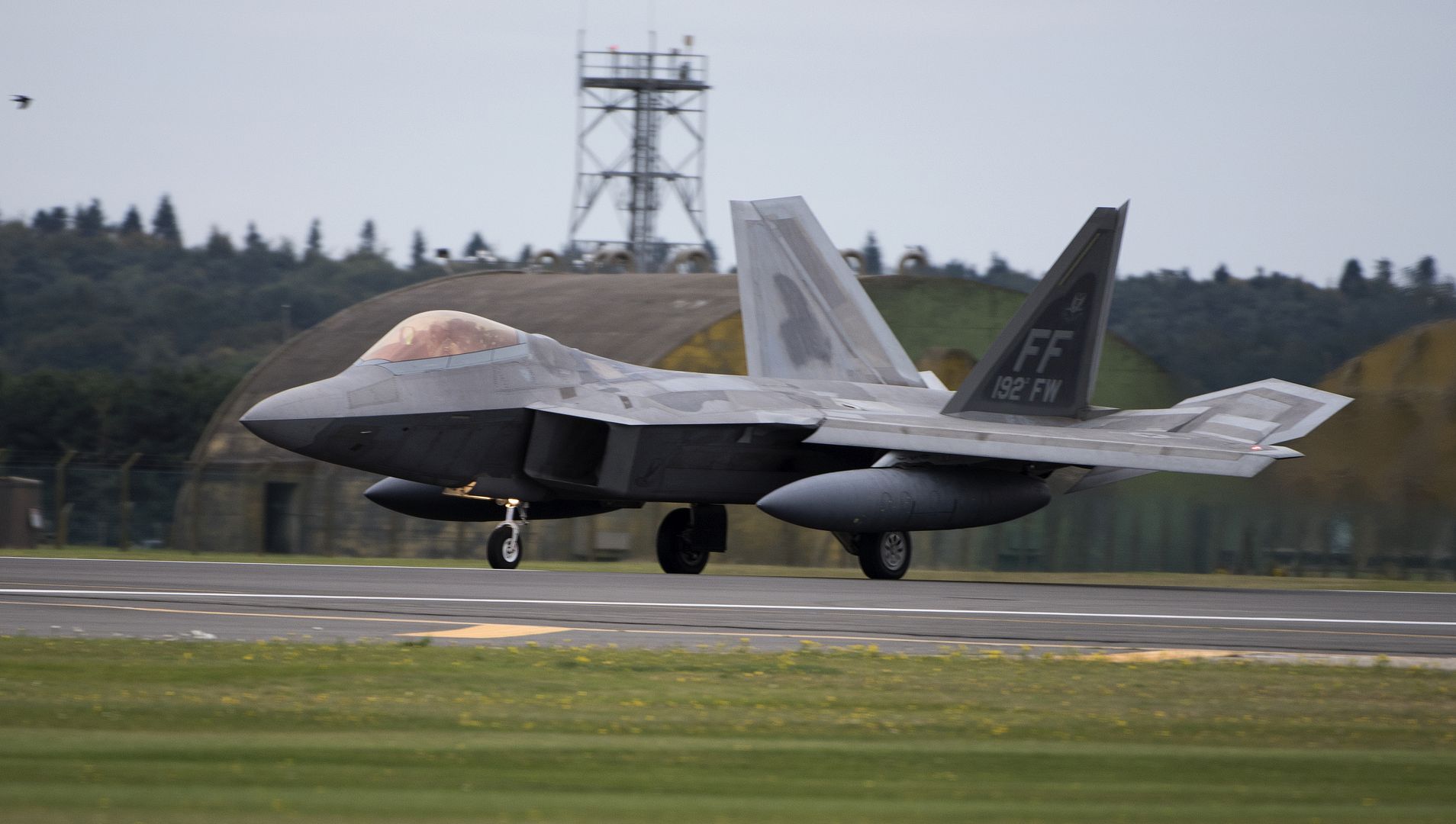
A U.S. Navy F/A-18E Super Hornet departs after receiving fuel from a 340th Expeditionary Air Refueling Squadron KC-135 Stratotanker during a mission over Iraq in support of Operation Inherent Resolve, on Oct. 2, 2017. The F/A-18E is capable across the full mission spectrum: air superiority, fighter escort, reconnaissance, aerial refueling, close air support, air defense suppression and precision strikes. (U.S. Air Force photo by Staff Sgt. Michael Battles)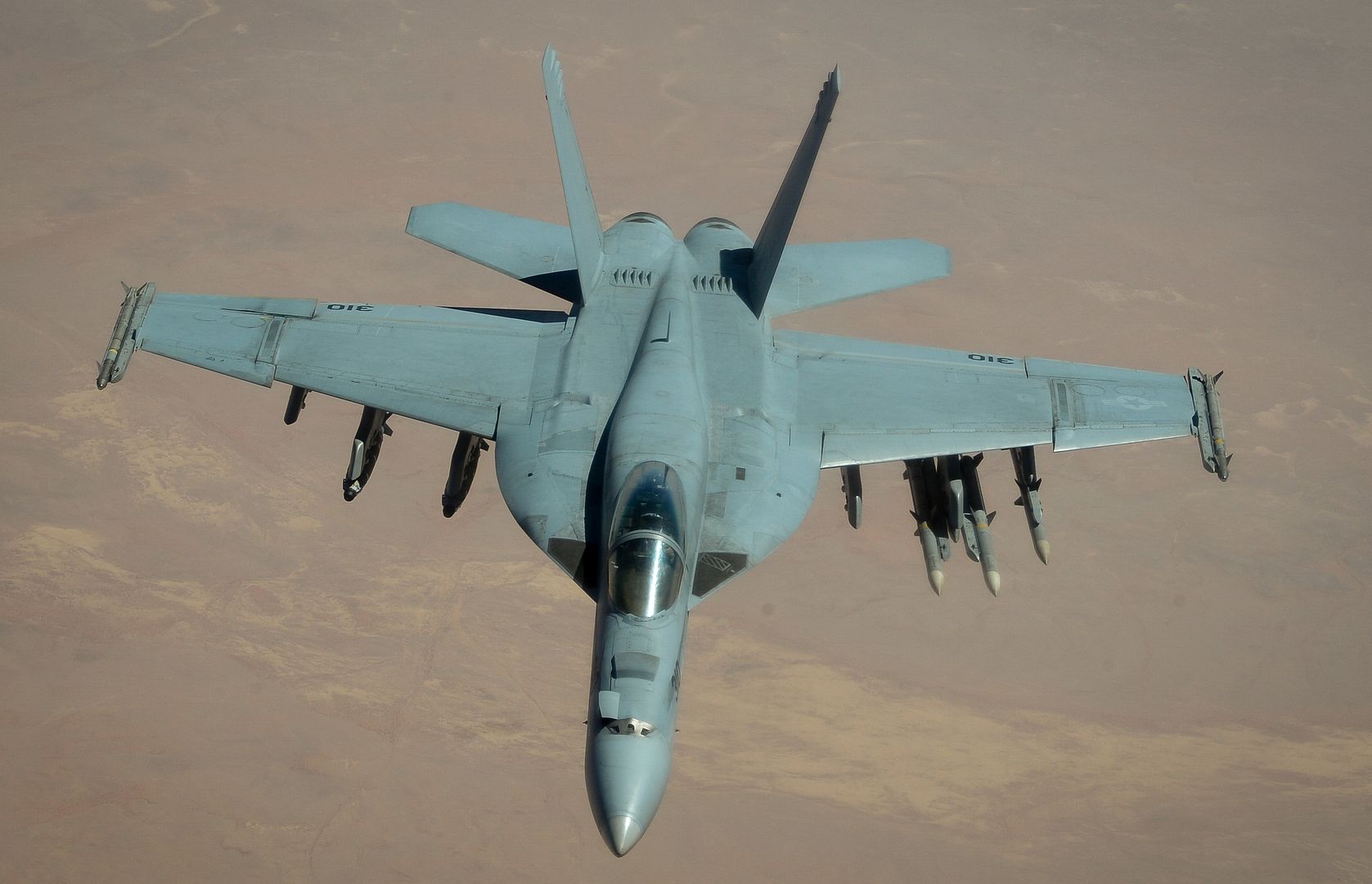
WASHINGTON, Oct. 9, 2017 /PRNewswire/ -- Lockheed Martin (NYSE: LMT) received $337 million in orders to supply Apache
Modernized Target Acquisition Designation Sight/Pilot Night Vision Sensor (M?TADS/PNVS) systems and services to the United States, United Kingdom and the Kingdom of Saudi Arabia.
The awards are part of an initial task order under a new indefinite-delivery/indefinite-quantity (ID/IQ) contract signed with the U.S. Army. The ID/IQ, with at least $2 billion in potential orders and a five-year period of performance, serves as the contracting vehicle to provide M?TADS/PNVS systems and services to U.S. and international customers.
"Lockheed Martin is committed to a strong and sustained partnership with our customers in the United States and around the world," said Paul Lemmo, vice president of Fire Control/Special Operations Forces Contractor Logistics Support Services at Lockheed Martin Missiles and Fire Control. "This contract enables us to respond rapidly to their emerging defense needs, including requirements for new M-TADS/PNVS systems and upgrades."
Under an order for the U.S. Army, Lockheed Martin is providing upgrade kits for the M?TADS/PNVS Modernized Day Sensor Assembly (M-DSA) and Modernized Laser Range Finder Designator. For the U.K. Ministry of Defence, it is delivering M-DSA upgrade kits for M-TADS/PNVS refurbishment as part of a remanufacture effort to upgrade D-model Apaches to E models. For the Saudi Ministry of National Guard, it is providing M?TADS/PNVS systems for new E-model Apaches.
M-TADS/PNVS, known as the "eyes of the Apache," provides pilots with long-range, precision engagement and pilotage capabilities for safe flight during day, night and adverse weather missions. M-DSA increases M-TADS/PNVS designation and ranging capabilities to fully accommodate current weapons and those planned for the future. The upgraded sensor enables Apache pilots to see high-resolution, high-definition, near-infrared and color imagery on cockpit displays. M-DSA also provides a new laser pointer marker that improves coordination with ground troops, and an updated multi-mode laser with eye-safe range designation that supports flight in urban environments and critical training exercises.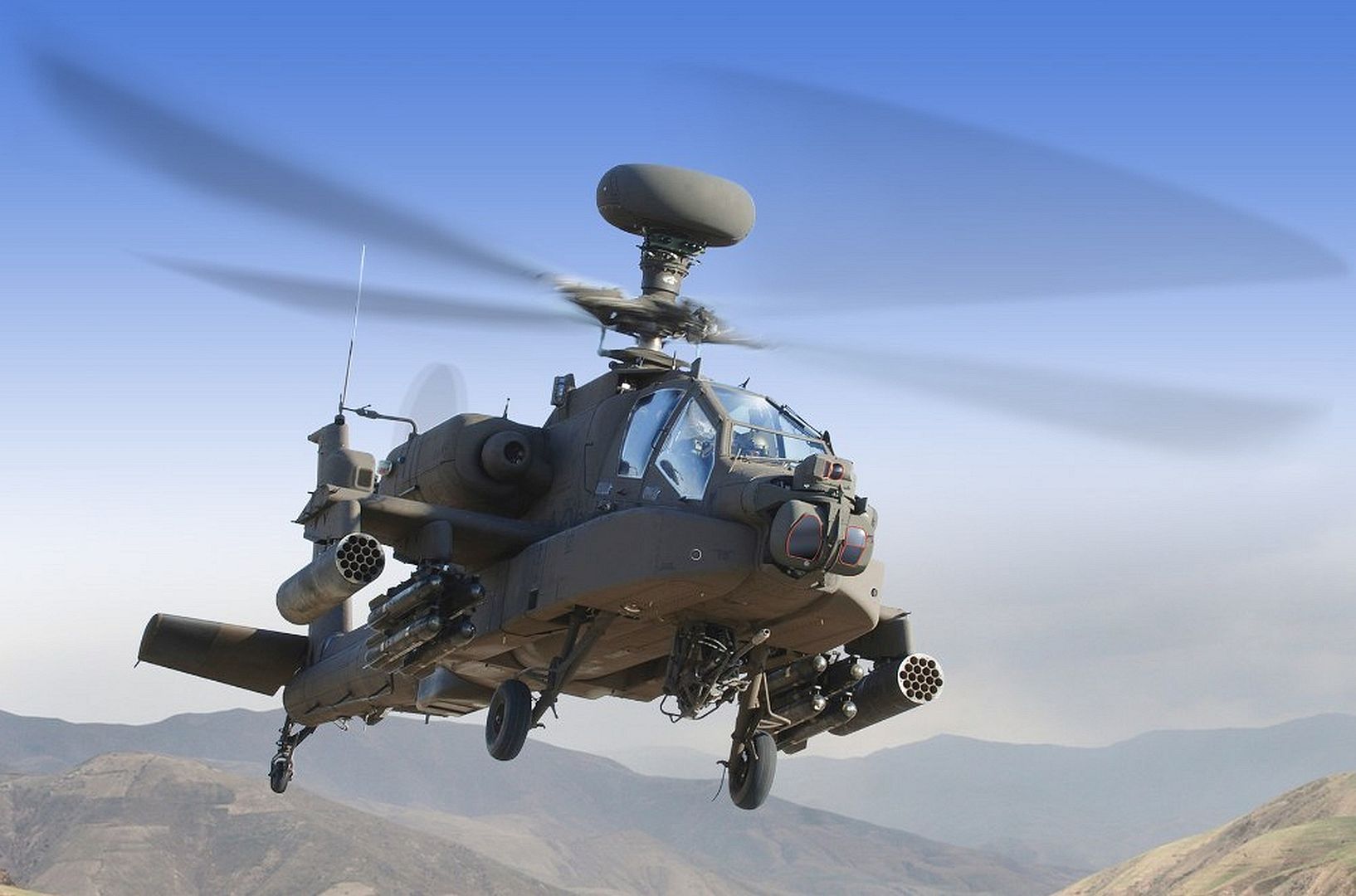
Washington, D.C. ? Airbus Helicopters has delivered the U.S. Army?s 400th UH-72A Lakota helicopter, fulfilling its contract requirements to date by delivering every aircraft on time, on budget and meeting the Army?s rigorous quality standards.
?From the moment when the Army awarded Airbus the contract to produce the UH-72A, our team has strived daily to deliver on our promises to the Army, to the dedicated soldiers who operate these aircraft, to the U.S. government and the taxpayers,? said Chris Emerson, President of Airbus Helicopters Inc. ?We have produced a superb aircraft that meets the Army?s requirements and quality standards, and we have also delivered on our promise to provide outstanding support to keep the Army?s Lakotas flying and ready to perform vital missions.?
The UH-72A is one of the key helicopter models the Army will operate for the foreseeable future. The Lakota platform is a versatile and highly capable twin-engine aircraft with a modern digital glass cockpit, flight controls and navigation systems. Army and Army National Guard units operate the Lakota in a variety of missions including flight training, surveillance and reconnaissance, medical evacuations, border security, VIP transport and disaster response.
The UH-72A is proudly made in America, assembled at the Airbus Helicopters Inc. facility in Columbus, Miss. by a workforce that is more than 40 percent U.S. military veterans.
Selected by the U.S. Army in 2006 following a rigorous evaluation, the UH-72A is the Army?s lowest cost twin-engine helicopter to buy, own and operate. As part of its Aviation Restructuring Initiative, the Army selected the Lakota for its Initial Entry Rotary Wing Training program at Fort Rucker. The U.S. Naval Test Pilot School also operates the Lakota in a training role.
Since the Lakota?s introduction, the Army and National Guard units have flown more than 460,000 hours with Airbus Helicopters Inc. providing materiel support that exceeded all of the contract requirements.
In December 2016 the Army awarded Airbus Helicopters Inc. a five-year Contractor Logistics Support valued at nearly $1 billion. Airbus Helicopters Inc. will provide the support at Army and National Guard bases in 43 states, including Fort Rucker, and in Kwajalein, Guam, Puerto Rico and Germany.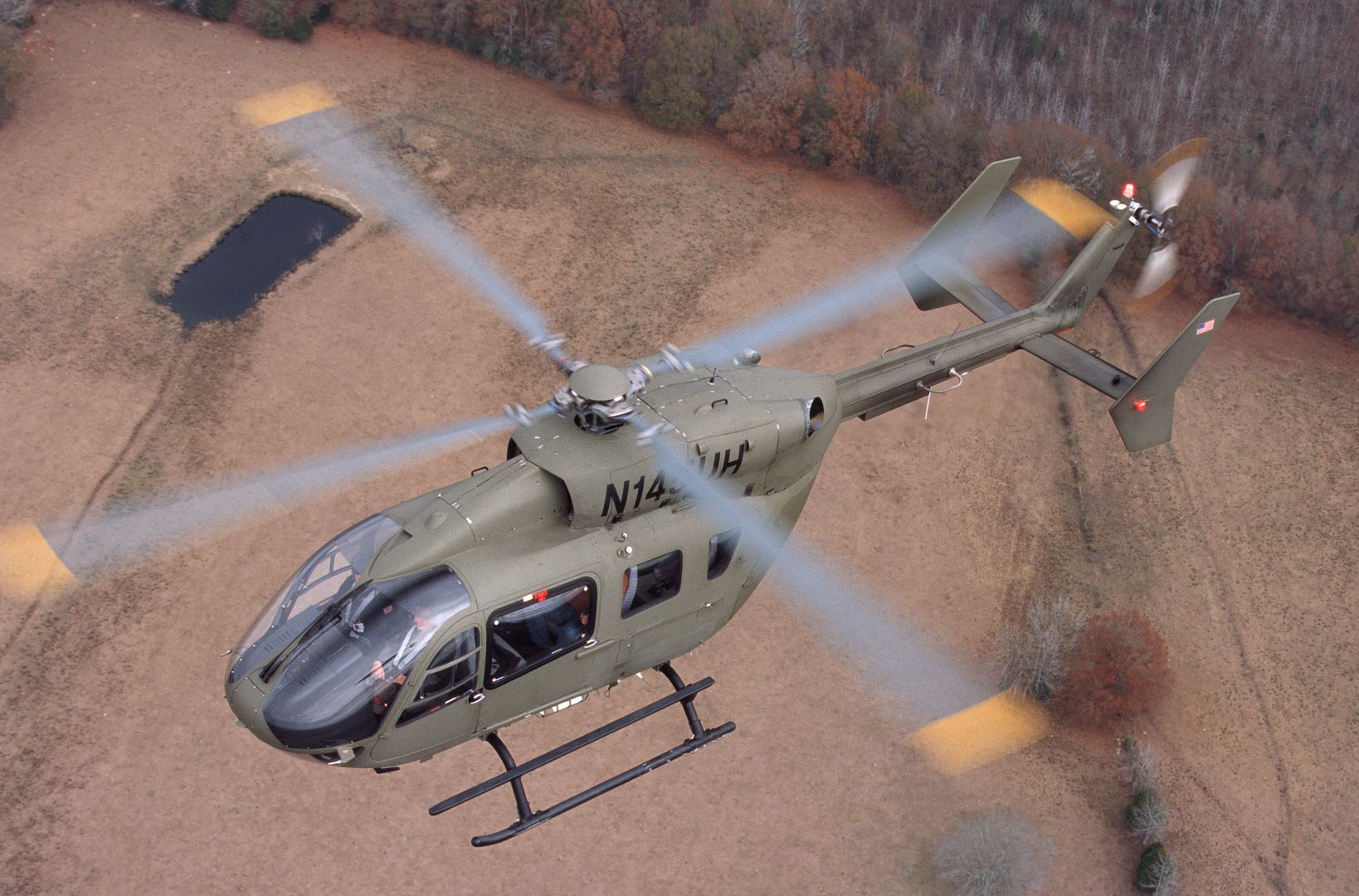
-
 Main AdminA pair of U.S. Army MH-60M Blackhawks assigned to Marine Corps Aviation Weapons and Tactics Squadron One (MAWTS-1) prepare to conduct an aerial refueling exercise in support of Weapons and Tactics Instructor course (WTI) 1-18 in Yuma, Ariz., Oct. 6, 2017. WTI is a seven-week training event hosted by MAWTS-1 cadre which emphasizes operational integration of the six functions of Marine Corps Aviation in support of a Marine Air Ground Task Force. MAWTS-1 provides standardized advanced tactical training and certification of unit instructor qualifications to support Marine Aviation Training and Readiness and assists in developing and employing aviation weapons and tactics. (U.S. Marine Corps photo by Sgt. Allison Lotz)
Main AdminA pair of U.S. Army MH-60M Blackhawks assigned to Marine Corps Aviation Weapons and Tactics Squadron One (MAWTS-1) prepare to conduct an aerial refueling exercise in support of Weapons and Tactics Instructor course (WTI) 1-18 in Yuma, Ariz., Oct. 6, 2017. WTI is a seven-week training event hosted by MAWTS-1 cadre which emphasizes operational integration of the six functions of Marine Corps Aviation in support of a Marine Air Ground Task Force. MAWTS-1 provides standardized advanced tactical training and certification of unit instructor qualifications to support Marine Aviation Training and Readiness and assists in developing and employing aviation weapons and tactics. (U.S. Marine Corps photo by Sgt. Allison Lotz)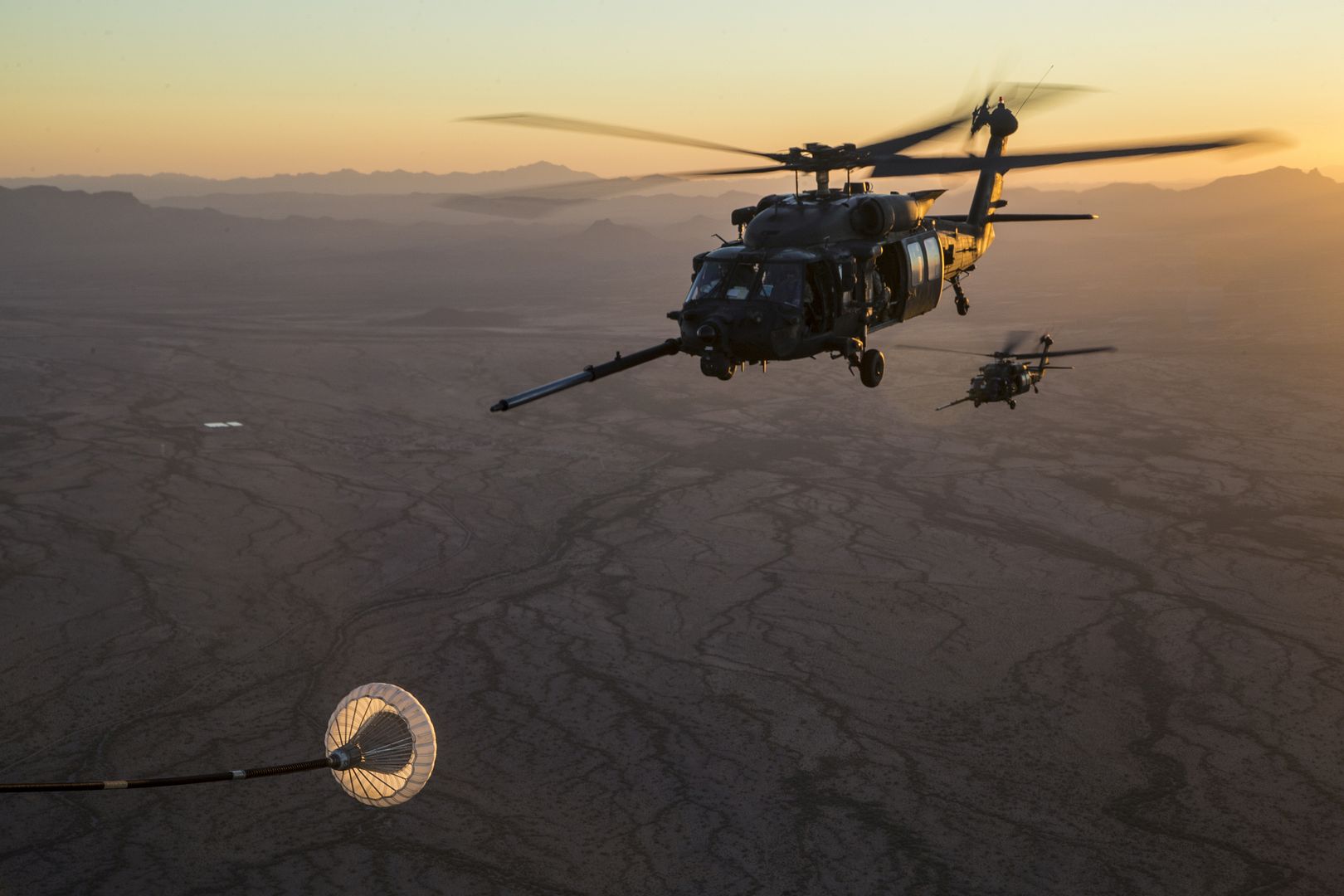
A U.S. Marine Corps CH-53E Super Stallion and U.S. Army MH-60M Blackhawks assigned to Marine Corps Aviation Weapons and Tactics Squadron One (MAWTS-1) conduct an aerial refueling exercise in support of Weapons and Tactics Instructor course (WTI) 1-18 in Yuma, Ariz., Oct. 6, 2017. WTI is a seven-week training event hosted by MAWTS-1 cadre which emphasizes operational integration of the six functions of Marine Corps Aviation in support of a Marine Air Ground Task Force. MAWTS-1 provides standardized advanced tactical training and certification of unit instructor qualifications to support Marine Aviation Training and Readiness and assists in developing and employing aviation weapons and tactics. (U.S. Marine Corps photo by Sgt. Allison Lotz)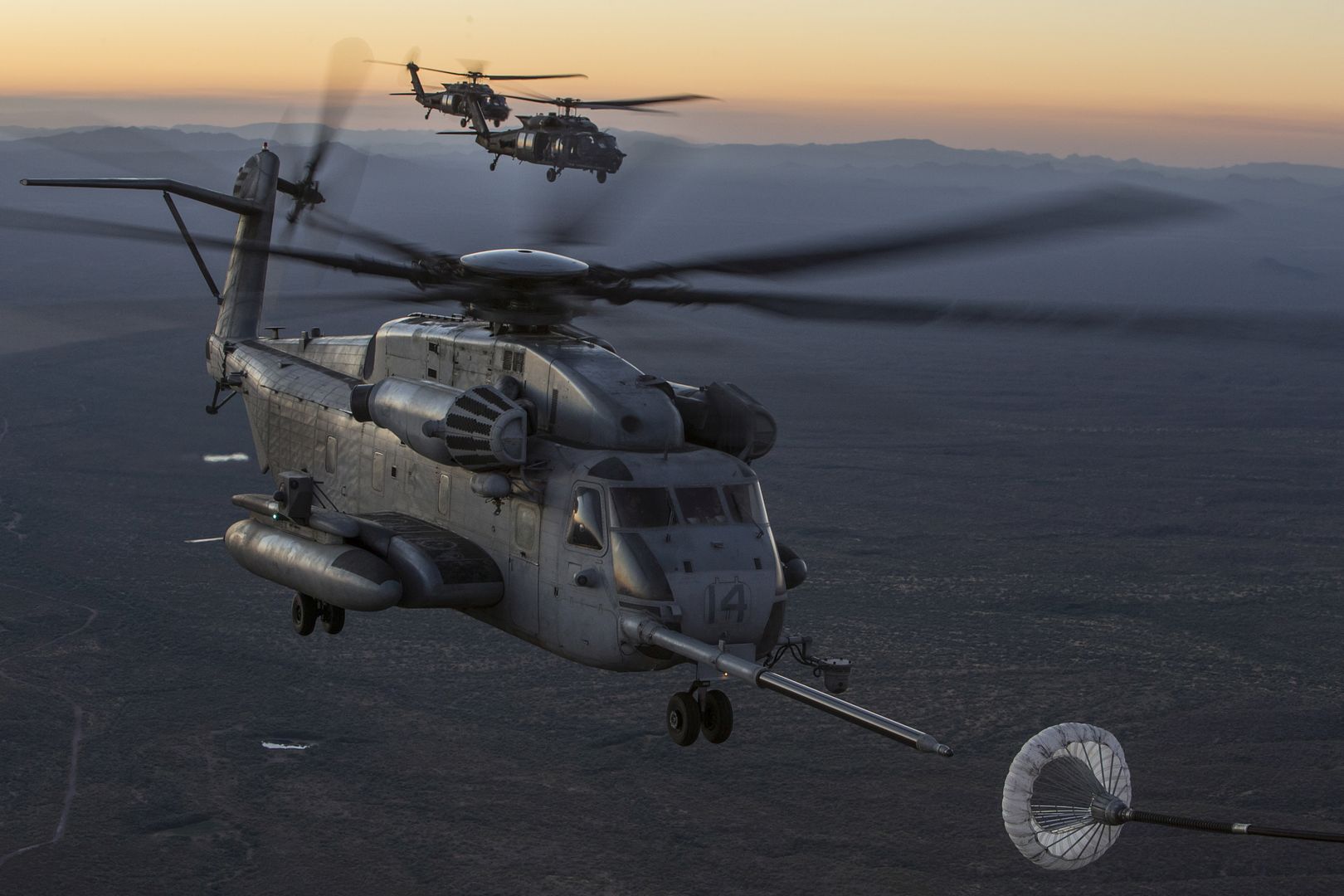
A CH-47 ?Chinook? helicopter from the Pennsylvania Army National Guard emplaces a large sand bag in the spillway of the Guajataca Dam on Oct. 9, 2017. The Soldiers are working to stabilize the dam?s spillway in conjunction with the U.S. Army Corps of Engineers and the Puerto Rico Army National Guard in response to the effects of Hurricane Maria. (36th Infantry Division photo by SSG Mark Scovell)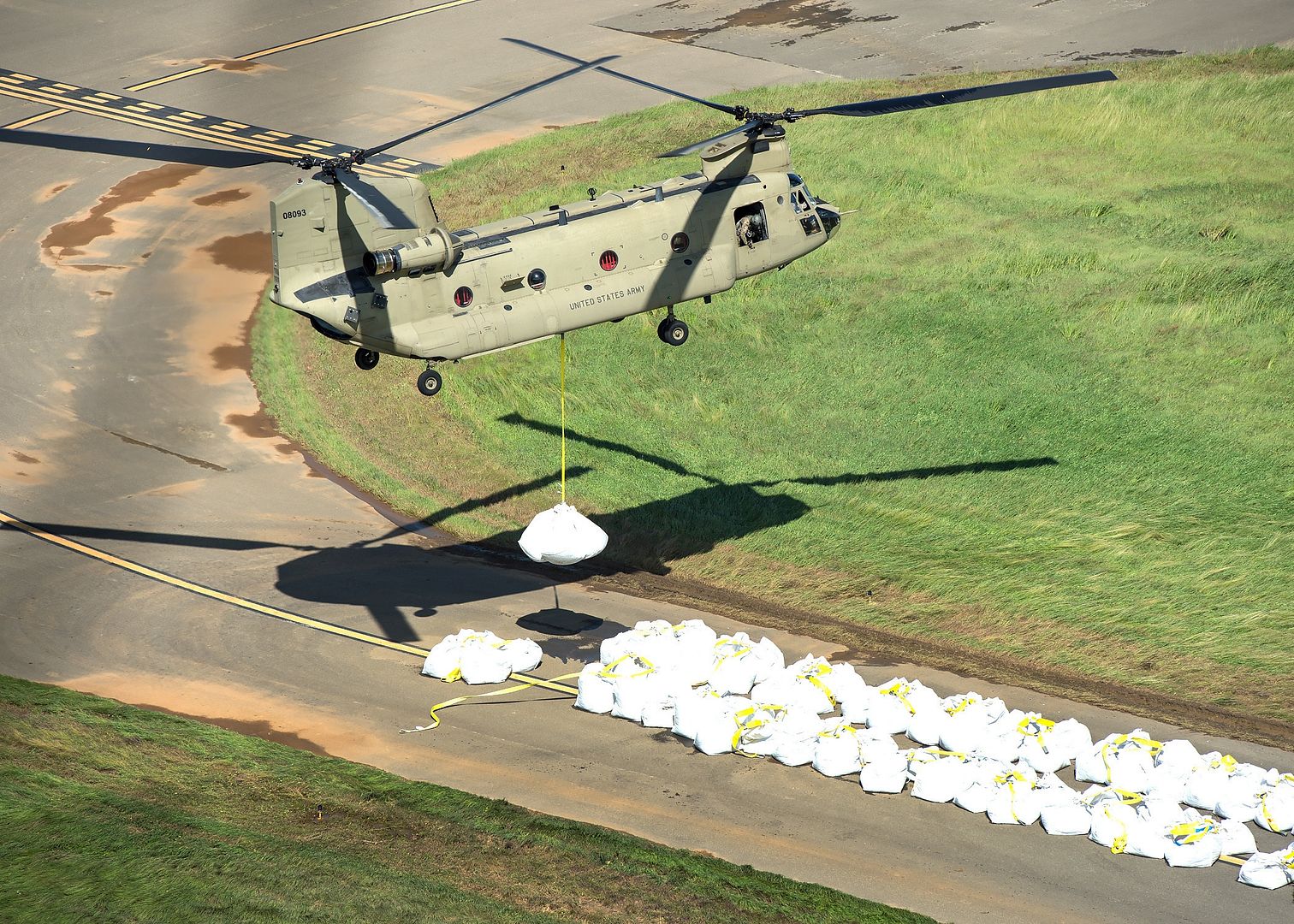
Philippine Marines load onto an MV-22B Osprey tiltrotor aircraft during exercise KAMANDAG at Colonel Ernesto P. Ravina Air Base, Philippines, Oct. 8, 2017. Bilateral exercises such as KAMANDAG increase the ability of the United States and the Philippines to rapidly respond and work together during real world terrorist or humanitarian crises, in order to accomplish the mission, support the local population and help mitigate human suffering.(U.S. Marine Corps Photo by Cpl. Stormy Mendez)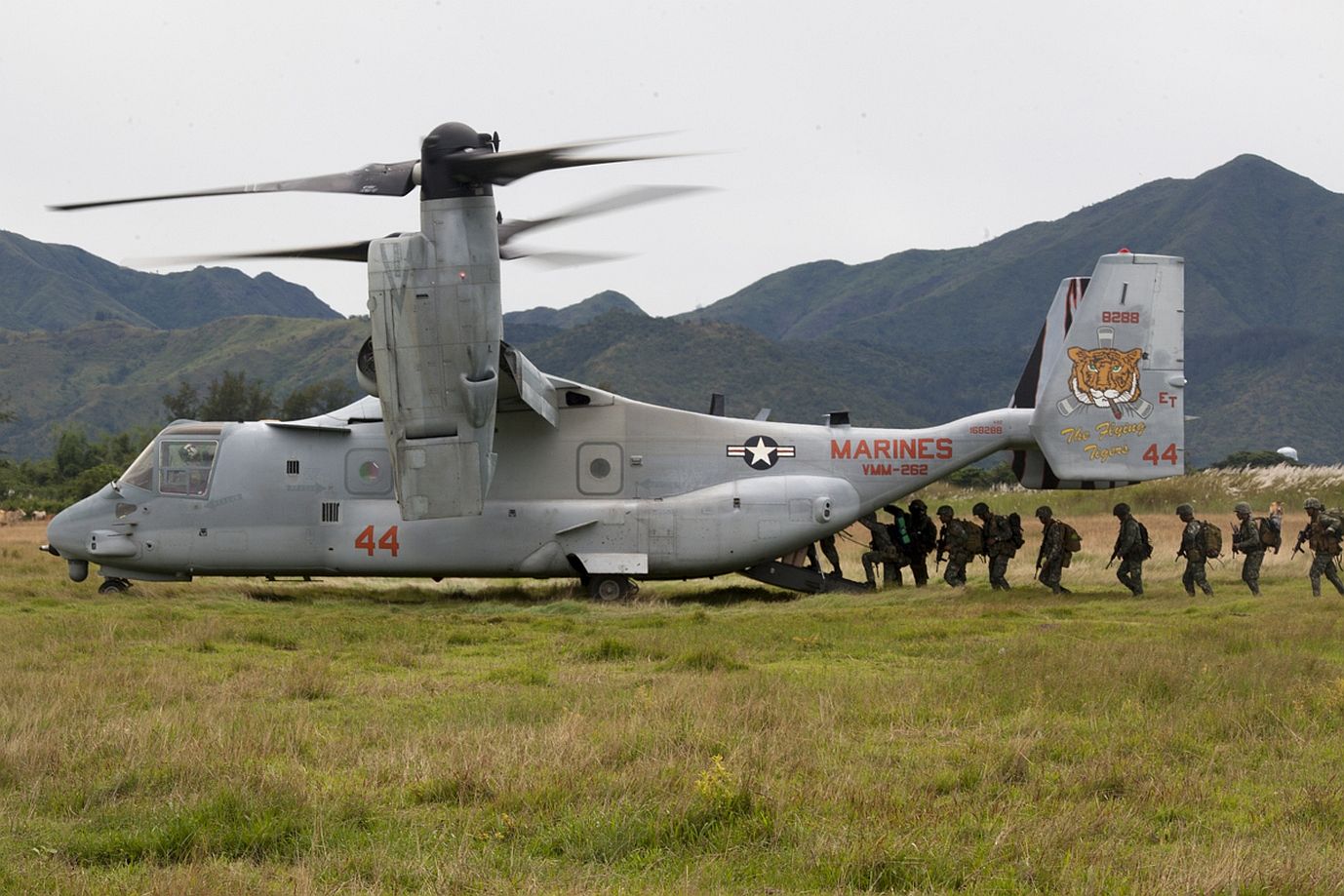
Boeing [NYSE: BA] Business Jets announced today at the National Business Aviation Conference and Exhibition it booked 14 new orders in the last year.
The orders include one 737, four BBJs, three BBJ MAXs, one BBJ 787-8, two BBJ 777-300ERs and three BBJ 747-8s.
?It has been a really strong year for us at Boeing Business Jets,? said Greg Laxton, Head of Boeing Business Jets. ?Our customers are seeing the value our products provide across our entire portfolio, from the current generation BBJ, to the future BBJ MAX, all the way up to the BBJ 747-8.?
Boeing Business Jets also unveiled a new interior design concept for the BBJ MAX 7. Created by renowned Paris based design firm, Alberto Pinto, it features a design customized to the BBJ MAX 7?s spacious interior.
?At BBJ, we are always innovating our products and that includes the cabin interior,? said Laxton. ?What really sets Boeing Business Jets apart from our competition is that we offer our customers incredible range and incredible cabin space. Our customers can take advantage of multiple living areas, a full bedroom and full size bathrooms and the new design beautifully highlights these advantages.?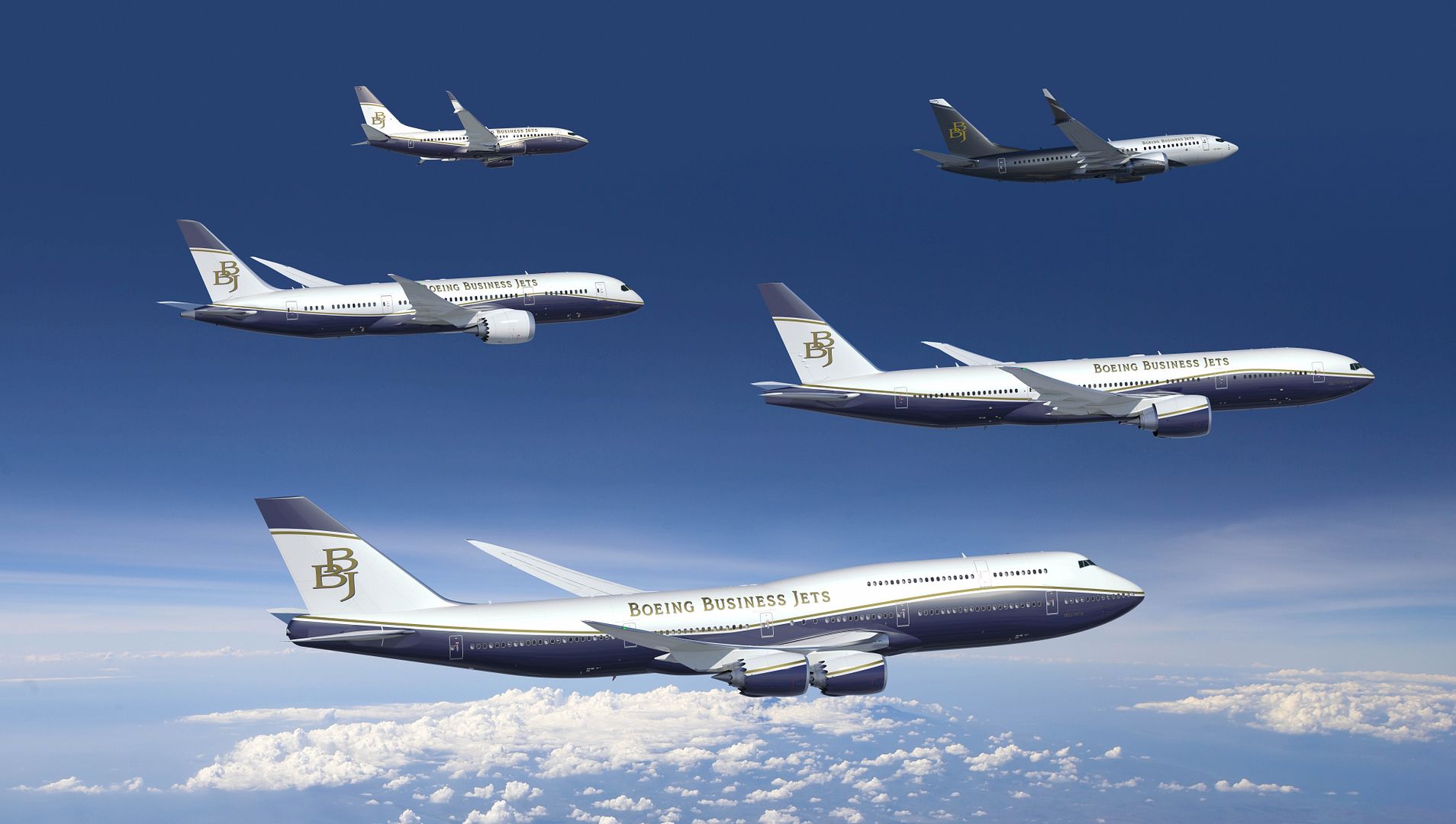
Boeing Business Jets offers a complete portfolio of ultra-large-cabin, long-range airplanes perfectly suited for Government and Head of State operations. The product line includes the BBJ MAX family,? high-performance derivatives of the commercially successful 737 MAX airplane family? as well as Boeing twin-aisle airplanes including the 777, 747-8 and 787 Dreamliner.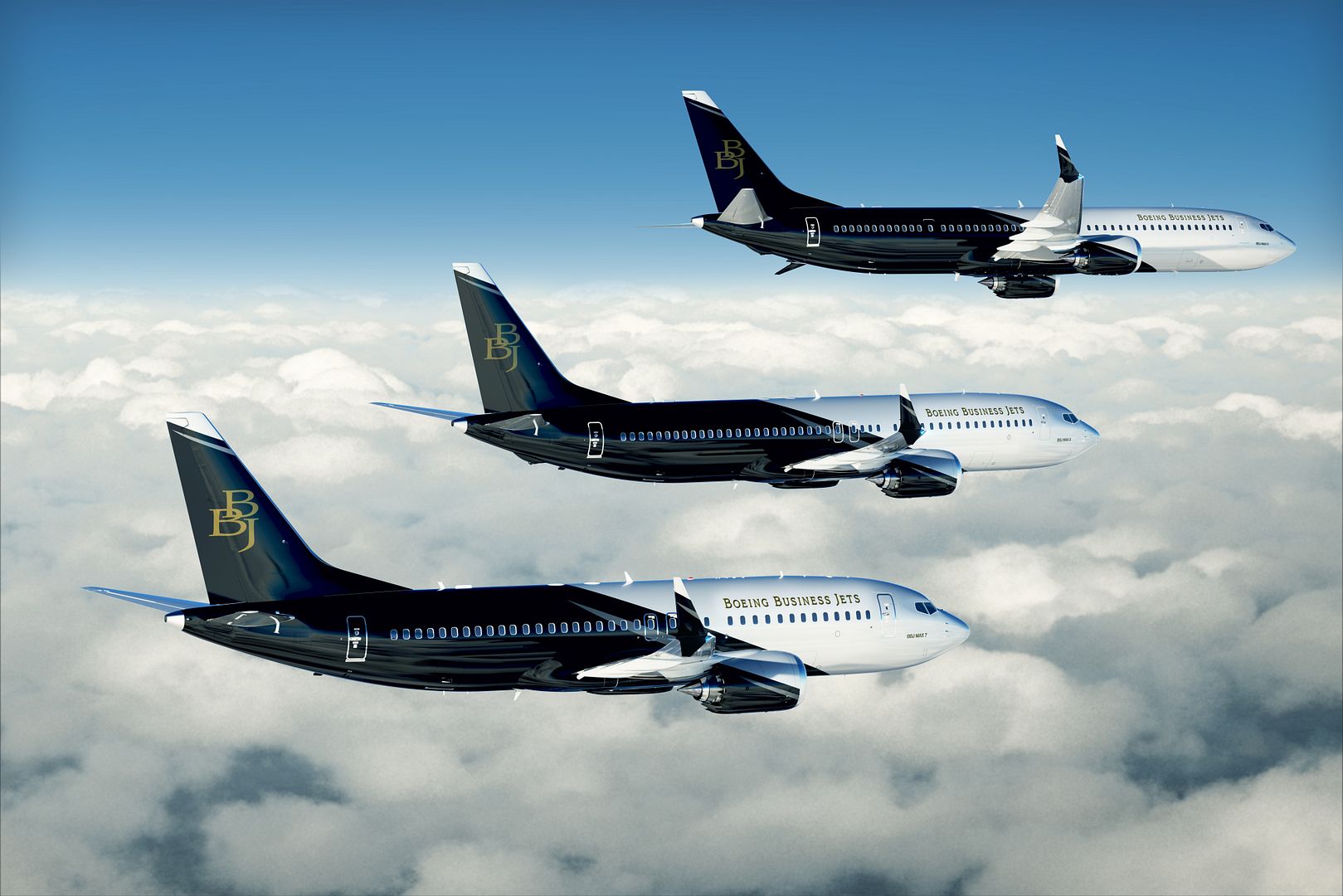
-
 Main AdminAn MV-22B Osprey tiltrotor aircraft with Marine Medium Tiltrotor Squadron 262 takes off from a flight line in Casiguran, Aurora, Philippines, Oct. 10, 2017. Bilateral exercises such as KAMANDAG increase the ability of the United States and the Philippines to rapidly respond and work together during real world terrorist or humanitarian crises, in order to accomplish the mission, support the local population and help mitigate human suffering. (U.S. Marine Corps photo by Sgt. Matthew J. Bragg)
Main AdminAn MV-22B Osprey tiltrotor aircraft with Marine Medium Tiltrotor Squadron 262 takes off from a flight line in Casiguran, Aurora, Philippines, Oct. 10, 2017. Bilateral exercises such as KAMANDAG increase the ability of the United States and the Philippines to rapidly respond and work together during real world terrorist or humanitarian crises, in order to accomplish the mission, support the local population and help mitigate human suffering. (U.S. Marine Corps photo by Sgt. Matthew J. Bragg)
A French CN-235 conducts a heavy equipment drop during Exercise Swift Response 17 Phase II at the Joint Multinational Readiness Center Hohenfels, Germany, Oct. 10, 2017. Swift Response 17, Phase II is an annual, U.S. Army Europe-led exercise focused on allied airborne forces? ability to quickly and effectively respond to crisis situations as an interoperable multi-national team. The exercise takes place at the Joint Multinational Readiness Center in Hohenfels, Germany, Oct. 2-20, 2017 and includes more than 7,000 participants from Bosnia-Herzegovina, France, Germany, Italy, Lithuania, Netherlands, Poland, Spain, the United Kingdom and the United States. (U.S. Army photo by Gertrud Zach)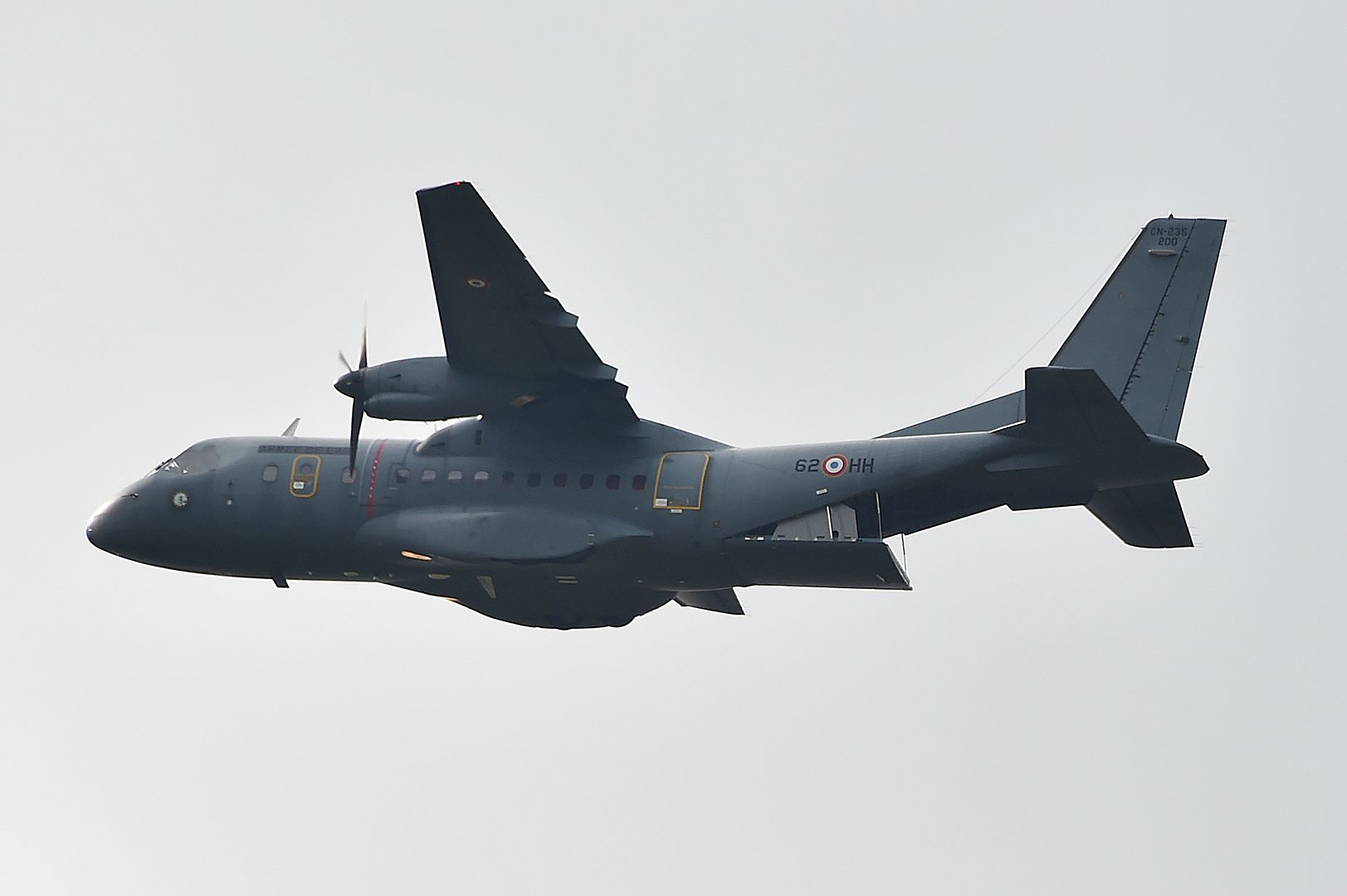
A Spanish Air Force C-130 Hercules from the ALA 31st, takes off from Aviano Air Base, in Pordenone, Italy Oct. 10, 2017 for airborne operations onto Hohenburg Drop Zone, Germany during Exercise Swift Response 2017. Swift Response links to Exercise Saber Guardian 17, a U.S. Army Europe-led, multinational exercise that spans across Bulgaria, Hungary, and Romania with more than 25,000 service members from 22 allied and partner nations. (U.S. Army Photos by Visual Information Specialist Paolo Bovo/Released)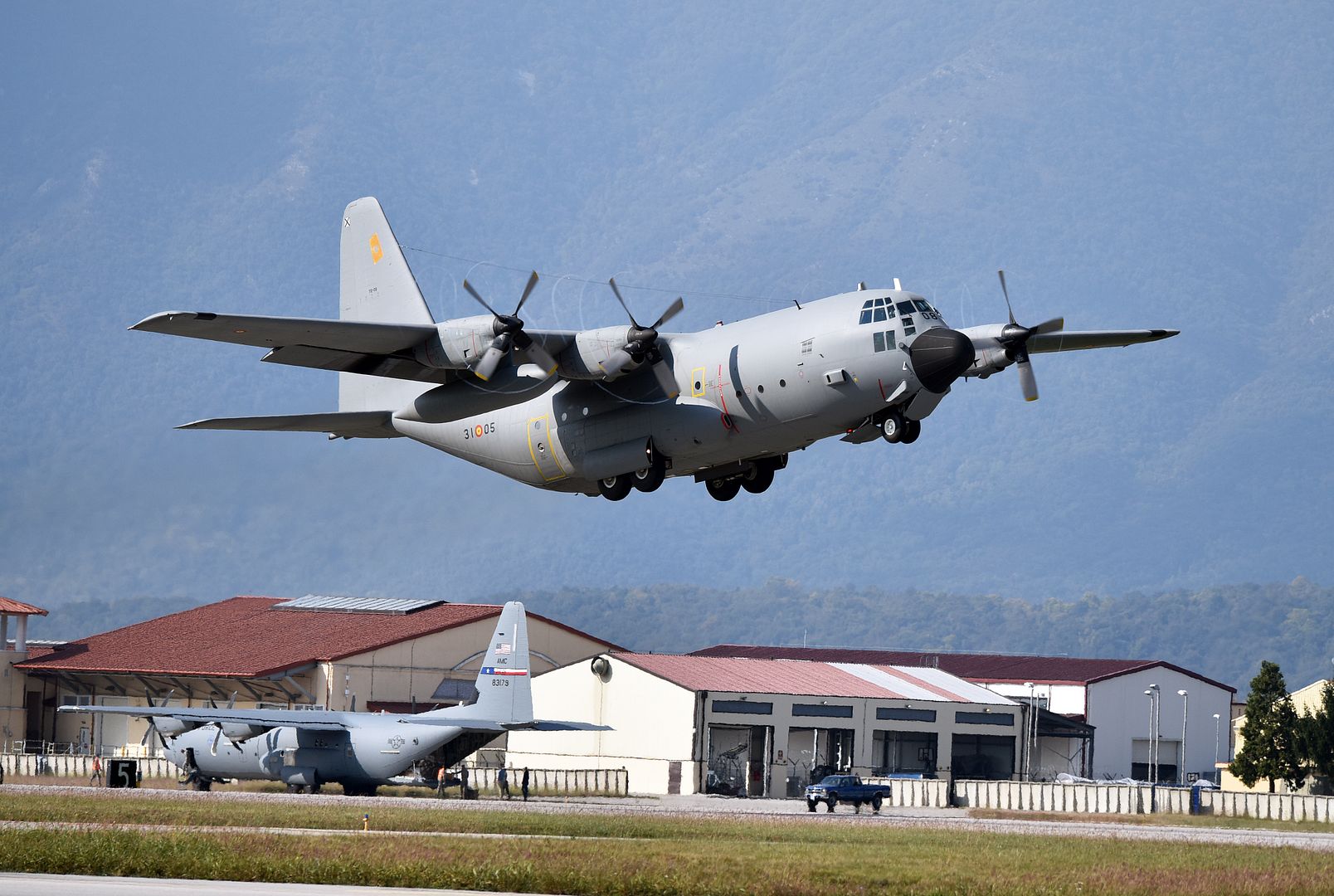
A Polish Air Force C-130 Hercules from the 33rd ATB, takes off from Aviano Air Base, in Pordenone, Italy Oct. 10, 2017 for airborne operations onto Hohenburg Drop Zone, Germany during Exercise Swift Response 2017. Swift Response links to Exercise Saber Guardian 17, a U.S. Army Europe-led, multinational exercise that spans across Bulgaria, Hungary, and Romania with more than 25,000 service members from 22 allied and partner nations. (U.S. Army Photos by Visual Information Specialist Paolo Bovo/Released)
A US Air Force C-130 Hercules from California National Guard ANG, takes off from Aviano Air Base, in Pordenone, Italy Oct. 10, 2017 for airborne operations onto Hohenburg Drop Zone, Germany during Exercise Swift Response 2017. Swift Response links to Exercise Saber Guardian 17, a U.S. Army Europe-led, multinational exercise that spans across Bulgaria, Hungary, and Romania with more than 25,000 service members from 22 allied and partner nations. (U.S. Army Photos by Visual Information Specialist Paolo Bovo/Released)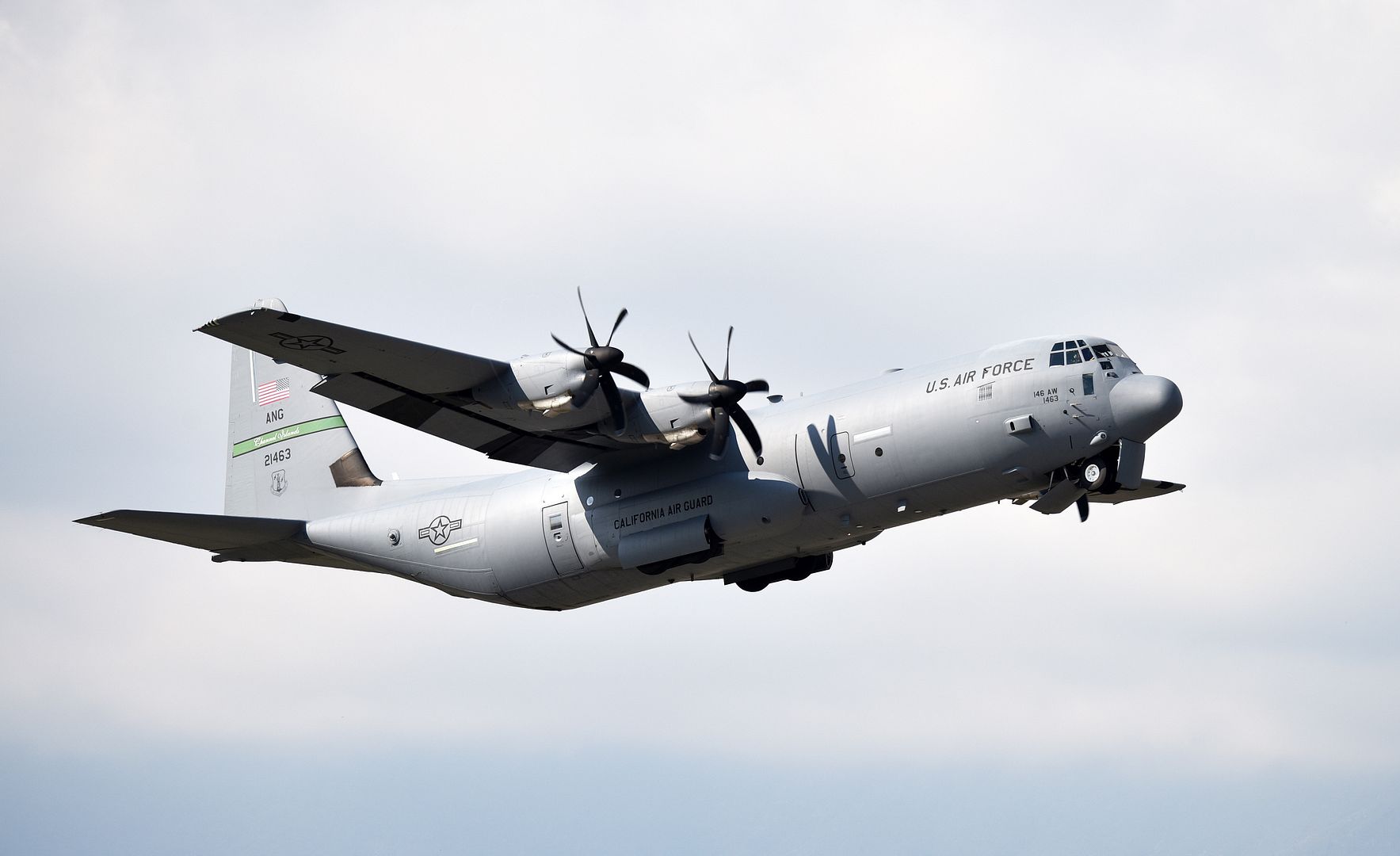
A Italian Air Force C-130 Hercules from the 46th BA, takes off from Aviano Air Base, in Pordenone, Italy Oct. 10, 2017 for airborne operations onto Hohenburg Drop Zone, Germany during Exercise Swift Response 2017. Swift Response links to Exercise Saber Guardian 17, a U.S. Army Europe-led, multinational exercise that spans across Bulgaria, Hungary, and Romania with more than 25,000 service members from 22 allied and partner nations. (U.S. Army Photos by Visual Information Specialist Paolo Bovo/Released)
A C-17 from the 105th Airlift Wing (AW) arrives to pick-up the second Disaster Relief Bedgown System (DRBS) the 200th RED HORSE Squadron (RHS) has sent in hurricane relief efforts October 10, 2017 at the 179th (AW) in Mansfield, Ohio. The 200th RHS is sending this DRBS to Puerto Rico. With the unique capabilities and assets the 200th RHS has as a self-sustaining unit that can deploy anywhere in the world within 72 hours, the unit is able to utilize its assets to support first responders and aid workers in the aftermath of the hurricane. The DRBS is a kit which provides basic life necessities such as shelter, latrines and showers and can support up to 300 people. The Ohio Air National Guard unit is always ready to respond with a team of trusted Airmen for state and federal missions. (U.S. Air National Guard photo by 1st Lt. Paul Stennett/Released)
TSUIKI AIR BASE, Japan -- More than 100 members from various 35th Fighter Wing units forward-deployed alongside six F-16 Fighting Falcons to Tsuiki Air Base, Japan, Oct. 2 to 6 for an aviation training relocation.
The ATR allowed Airmen to practice deployed contingency operations and execute bilateral training exercises in a geographically different environment, side-by-side with the Japan Air Self-Defense Force 8th Air Wing Mitsubishi F-2s.
?Anytime we can train with our JASDF partners is beneficial to our working relationship and the overall U.S.-Japan alliance," said U.S. Air Force Capt. Nicolas De Wulf, the 13th Fighter Squadron readiness flight commander. "I am confident both countries walked away with a better understanding of each other?s tactics and capabilities, along with goals for improvement."
Throughout the duration of the exercise, both teams of pilots conducted 27 sorties, focusing on specialized training consisting of bilateral basic fighting maneuvers, air combat maneuvers, defensive counter air and suppression of enemy air defense.
While basic fighting and air combat tactics hone core concepts of maneuverability and weapon employment as partners, defensive counter air and SEAD reflect pilots skills in real-world combat scenarios.
?The training between our two nations will help interoperability and also help enhance JASDF?s readiness and capabilities,? said JASDF Lt. Col. Ryoji Kando, the 8th Tactical Fighter Squadron commander. ?I am most excited about my pilots learning SEAD because it is not something they are familiar with.?
Immediately following long days of flying, U.S. and Japan pilots collaborated during debriefs and discussed challenges that arose before, during and after flights. Additionally, JASDF pilots were given an in-depth academic SEAD brief, giving them insight on the 35th FW?s primary mission set.
?When we simulate strike missions, we are unable to get close to the target because of the danger,? said JASDF Capt. Nobuyuki Ariga, an 8th Tactical Fighter Squadron F-2 pilot. ?Learning in person how SEAD can support and protect JASDF pilots during contingency operations was incredible.?
With the challenging environment the Indo-Asia-Pacific region brings, the understanding and alliance between the U.S. and Japan is more crucial than ever.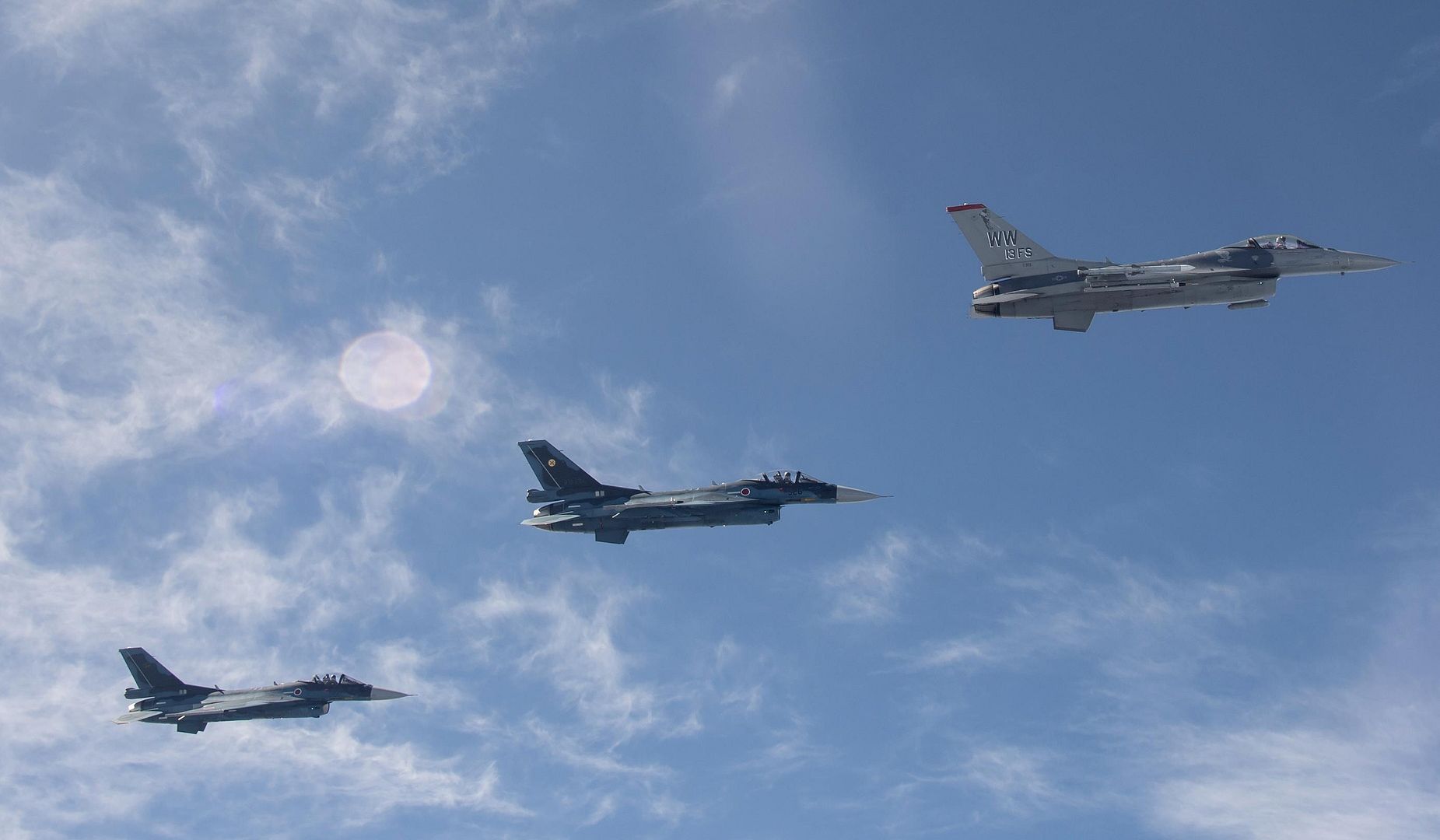
"Flying with the F-16s improved our ability to fly against different weapons systems and opposing strategies, providing a realistic training environment," said Kondo. ?Our strategic alliance is indispensable to security within this region.?
De Wulf continued by expressing many thanks to several units across the Pacific Air Forces? which made this ATR possible. Each challenge was met with dedicated effort and in some cases, unconventional solutions, which resulted in an absolute success.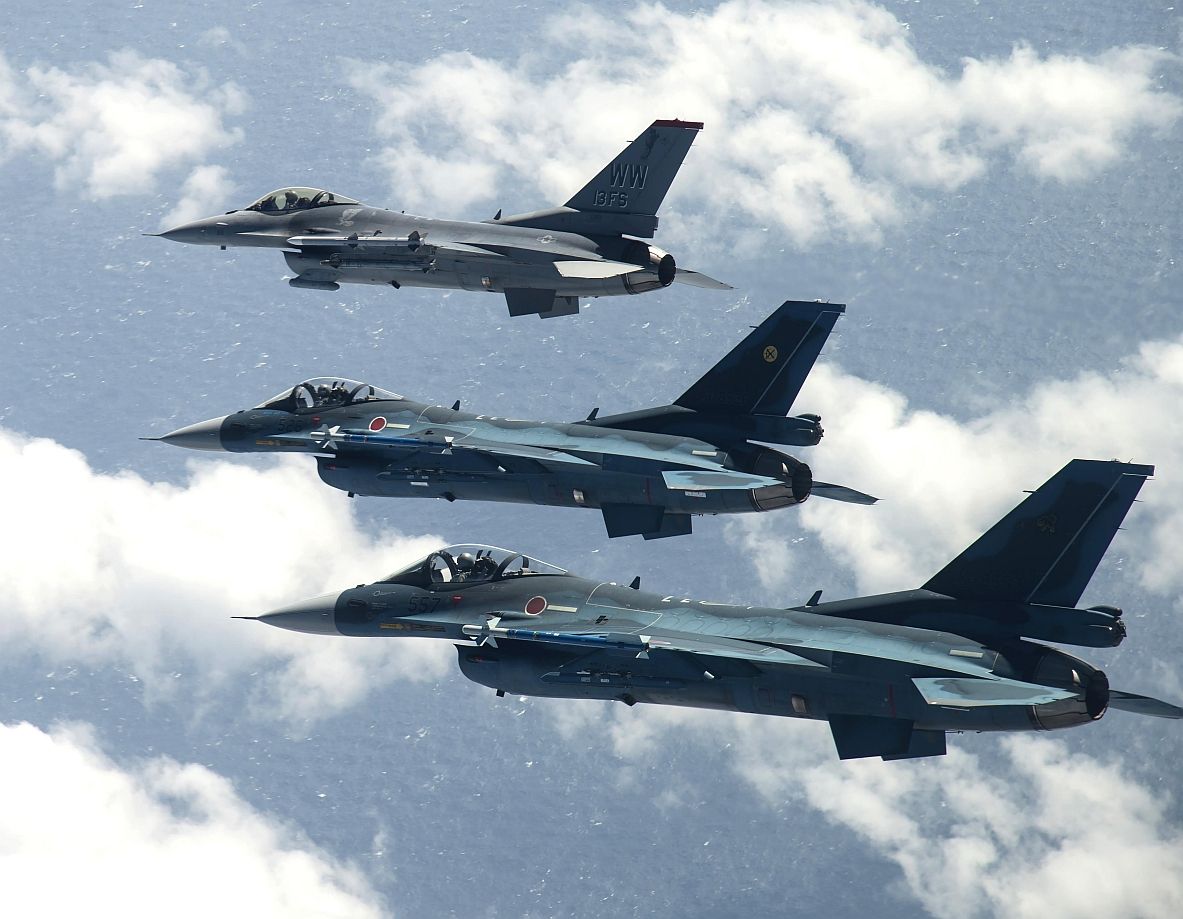
An F/A-18E Super Hornet assigned to the Stingers of Strike Fighter Squadron (VFA) 113 lands on the flight deck of the aircraft carrier USS Theodore Roosevelt (CVN 71). Theodore Roosevelt departed San Diego for a scheduled deployment Oct. 6, 2017 to the U.S. 7th and 5th Fleet areas of responsibility in support of maritime security operations and theater security cooperation efforts. U.S. Navy photo by Mass Communication Specialist 3rd Class Spencer Roberts (Released)
EVERETT, Wash., Oct. 11, 2017 ? A Boeing [NYSE: BA]-U.S. Air Force test team recently refueled a KC-46A tanker from another KC-46A tanker for the first time.
During the four-hour flight, the two aircraft successfully refueled each other and achieved the maximum fuel offload rate of 1,200 gallons per minute. The program?s first and second tankers transferred a total of 38,100 pounds of fuel over the course of the flight. Both aircraft took off and landed at Boeing Field, south of Seattle.
The milestone flight helps pave the way for the next phases of certification and specification compliance testing.
The KC-46 will refuel U.S., allied and coalition military aircraft using both its boom and hose and drogue systems. The boom allows the tanker to transfer up to 1,200 gallons of fuel per minute, while the plane?s hose and drogue systems, located on both the plane?s wing and centerline, enables the KC-46 to refuel smaller aircraft with up to 400 gallons of fuel per minute.
To date, the program?s test aircraft have completed 2,000 flight hours and more than 1,300 contacts during refueling flights with F-16, F/A-18, AV-8B, C-17, A-10 and KC-10 aircraft.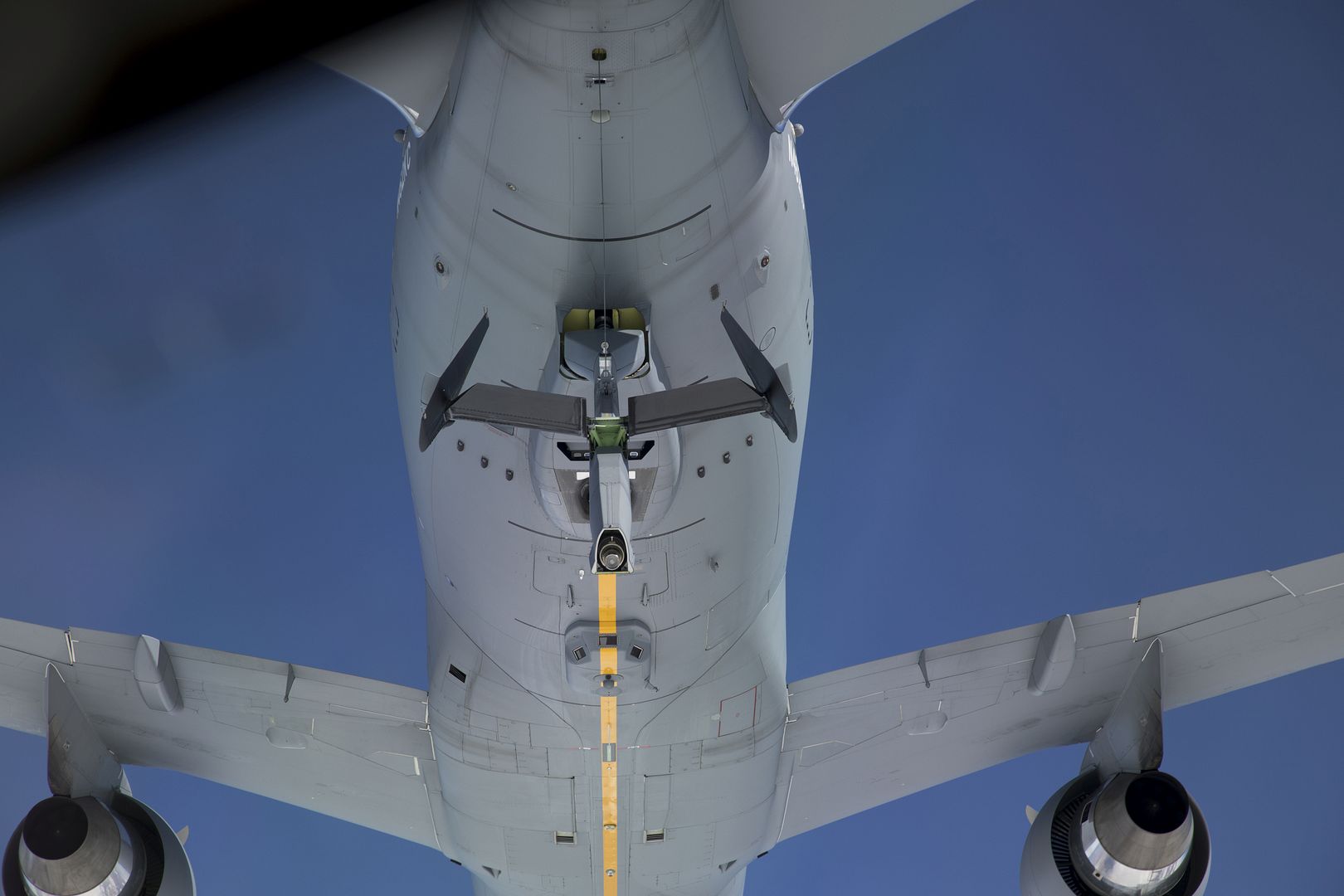
Aircalin, the Noumea based carrier in the French territory of New Caledonia has firmed up its order for two A320neos single-aisle and two A330-900 wide-body aircraft.
The A320neo powered by Pratt & Whitney engines and equipped with 168 seats will be deployed on regional routes to Australia, New Zealand and the Pacific Islands. The A330neo, powered by the latest generation Rolls-Royce Trent 7000 engines will feature 26 seats in Business, 21 in Premium and 244 in Economy Class. Aircalin plans to deploy the aircraft on commercial services to Japan for onward connections.
?Investing in our new fleet of modern efficient aircraft reduces our environmental impact thanks to lower fuel burn and allows Aircalin to reduce operating costs too. Equipped with the latest technology the aircraft will drive Aircalin?s strategy forward in Asia Pacific as well as its ambition to promote the development of tourism in New Caledonia?, said Didier Tappero, Aircalin CEO.
?It is a pleasure to see Aircalin modernising its fleet with our latest generation single-aisle and twin-aisle aircraft. The A330neo and A320neo will enable Aircalin to offer its customers unprecedented levels of comfort,? said John Leahy, Chief Operating Officer- Customers, Airbus Commercial Aircraft. ?Aircalin will benefit from the unique commonality between all variants of the Airbus Family and enjoy efficiencies throughout its existing fleet.
The A330neo has latest generation Rolls-Royce Trent 7000 engines, new wings and a new cabin. It benefits from the versatility and high reliability of the A330 but reduces fuel consumption by 14% making it the most cost efficient small to mid-size widebody aircraft on the market.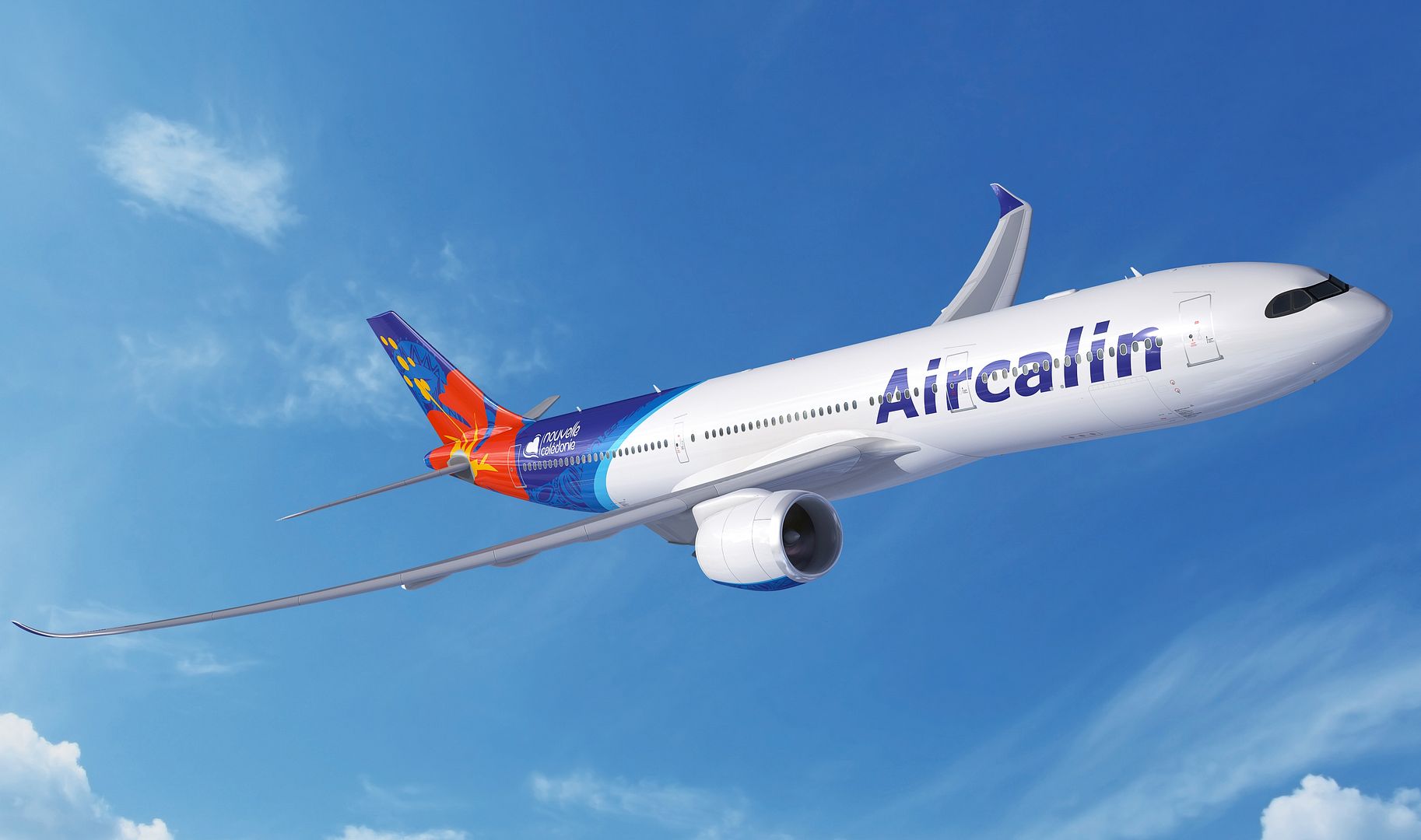
The A320neo Family incorporates the very latest technologies including new generation engines and Sharklets, which together deliver at least 15 percent fuel savings at delivery and 20 percent by 2020. With more than 5,200 orders received from 95 customers since its launch in 2010, the A320neo Family has captured some 60 percent share of the market.
10 October 2017
On 23 September a pair of Typhoons flew for eight hours and 36 minutes on a mission which saw them attack and destroy a weapons cache before conducting a simultaneous strike against four truck bombs.
?Whilst this sortie was the longest flown by RAF Typhoons to date the nature of the mission was no different to those flown day in day out over the past three years of this operation by both Typhoon and Tornado aircrew. These sorties would not be possible without the tireless support of our ground crew and of the air-air refuelling team who enable us to remain on station for such long periods of time.?
During the sortie, which was mostly conducted at night, the Typhoons refuelled on a number of occasions from RAF and Coalition air-air refuelling aircraft. After scanning the areas around the targets to ensure no civilians were present the targets were struck with a total of six Paveway IV precision guided munitions. Flt Lt Tom:
?Sitting in the confines of a fast jet cockpit for such a long time can be tiring, particularly at night, but assisting the Coalition forces fighting Da?esh on the ground is extremely rewarding and more than enough to keep us focussed. By destroying vehicle borne IEDs and weapons caches we not only save the lives of troops but also civilians; Da?esh have shown no hesitation in the past in detonating these huge bombs close to civilians.?
The Typhoon pair were not the only aircraft in operations that day. Over northern Iraq RAF Typhoons destroyed a truck bomb, a terrorist-held building and a mortar team firing on Iraqi forces. RAF Tornado aircraft also destroyed five truck bombs, an armed truck, a Da?esh building and command post on a day which saw the RAF destroy a total of17 terrorist targets.
The RAF has played an essential role to allies, helping Syrian Democratic Forces engaged in ground close combat and the Iraqi Security Forces who continue their advance having liberated Mosul and Ninewah province. The RAF recently marked the third anniversary of operations against Da?esh which also involves Reaper remotely piloted aircraft, air-air refuelling tankers and surveillance aircraft. More than 5.5 million people have been freed from Daesh?s rule and over two million displaced Iraqi civilians have returned to their homes. In Mosul alone, it is estimated that over 265,000 people have returned.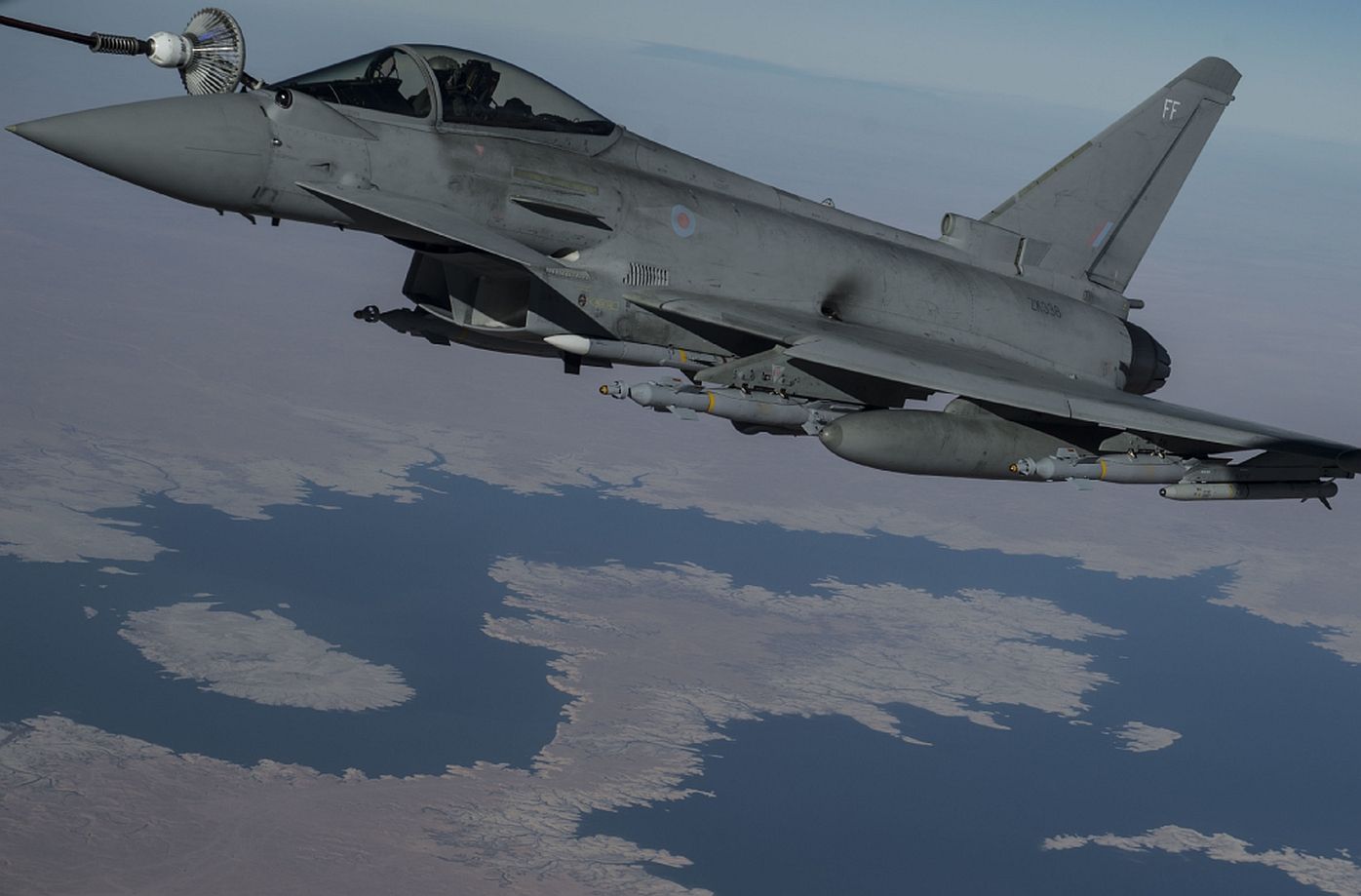
-
 Main AdminPACIFIC OCEAN (Oct. 10, 2017) An F/A-18C Hornet, assigned to the Checkerboards of Marine Strike Fighter Attack Squadron (VMFA) 312, lands on the flight deck of the aircraft carrier USS Theodore Roosevelt (CVN 71). Theodore Roosevelt departed San Diego for a regularly scheduled deployment, Oct. 6, to the U.S. 7th and 5th Fleet areas of responsibility in support of maritime security operations and theater security cooperation efforts. (U.S. Navy photo by Mass Communication Specialist 3rd Class Spencer Roberts/Released)
Main AdminPACIFIC OCEAN (Oct. 10, 2017) An F/A-18C Hornet, assigned to the Checkerboards of Marine Strike Fighter Attack Squadron (VMFA) 312, lands on the flight deck of the aircraft carrier USS Theodore Roosevelt (CVN 71). Theodore Roosevelt departed San Diego for a regularly scheduled deployment, Oct. 6, to the U.S. 7th and 5th Fleet areas of responsibility in support of maritime security operations and theater security cooperation efforts. (U.S. Navy photo by Mass Communication Specialist 3rd Class Spencer Roberts/Released)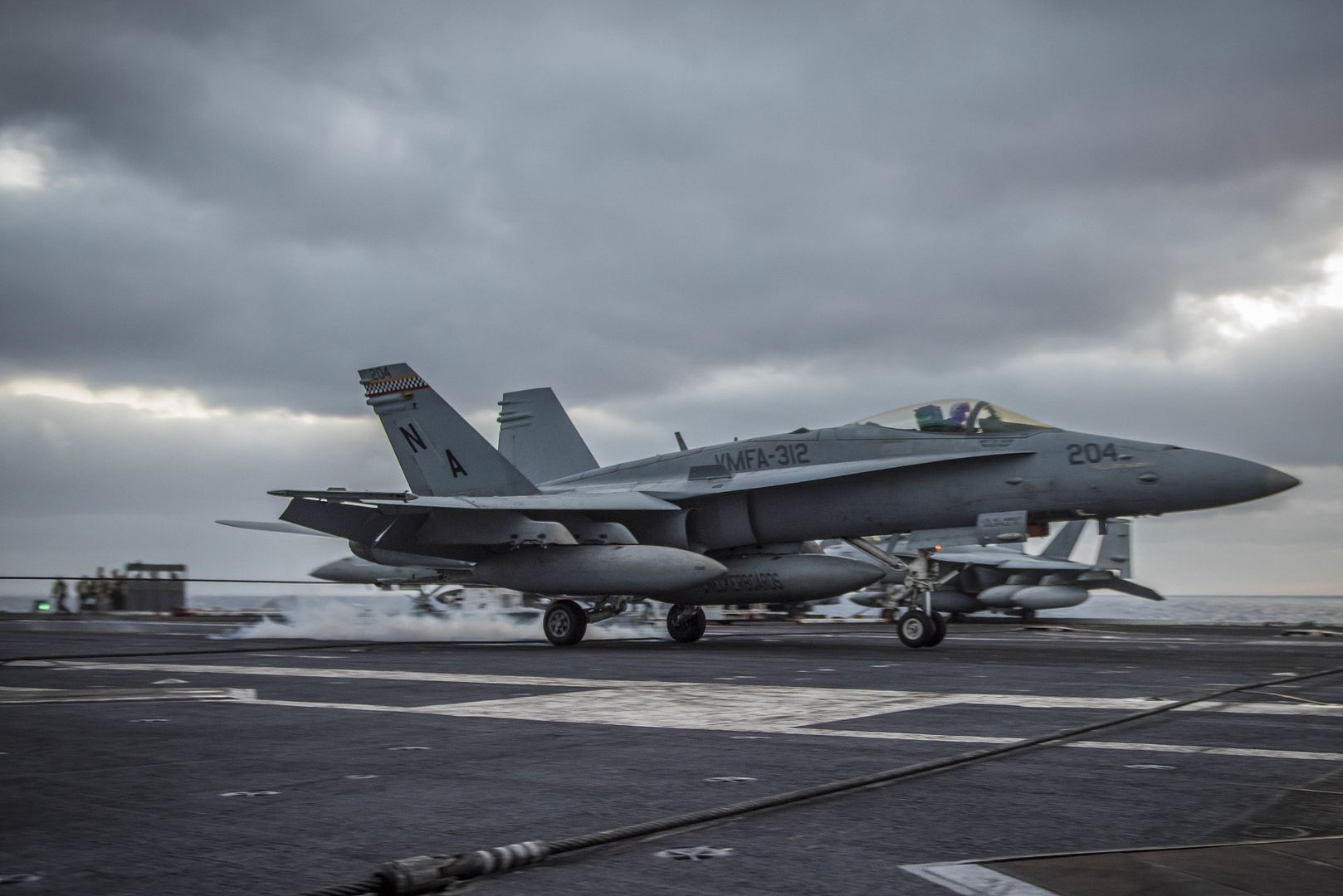
ATLANTIC OCEAN (Oct. 10, 2017) An F/A-18E Super Hornet, assigned to the ?Knighthawks? of Strike Fighter Squadron (VFA) 136, lands on the flight deck aboard USS Harry S. Truman (CVN 75). Truman is currently underway conducting Tailored Shipboard Test Availability and Final Evaluation Problem (TSTA/FEP) in preparation for future operations. (U.S. Navy photo by Mass Communication Specialist Seaman Rebekah A. Watkins/Released)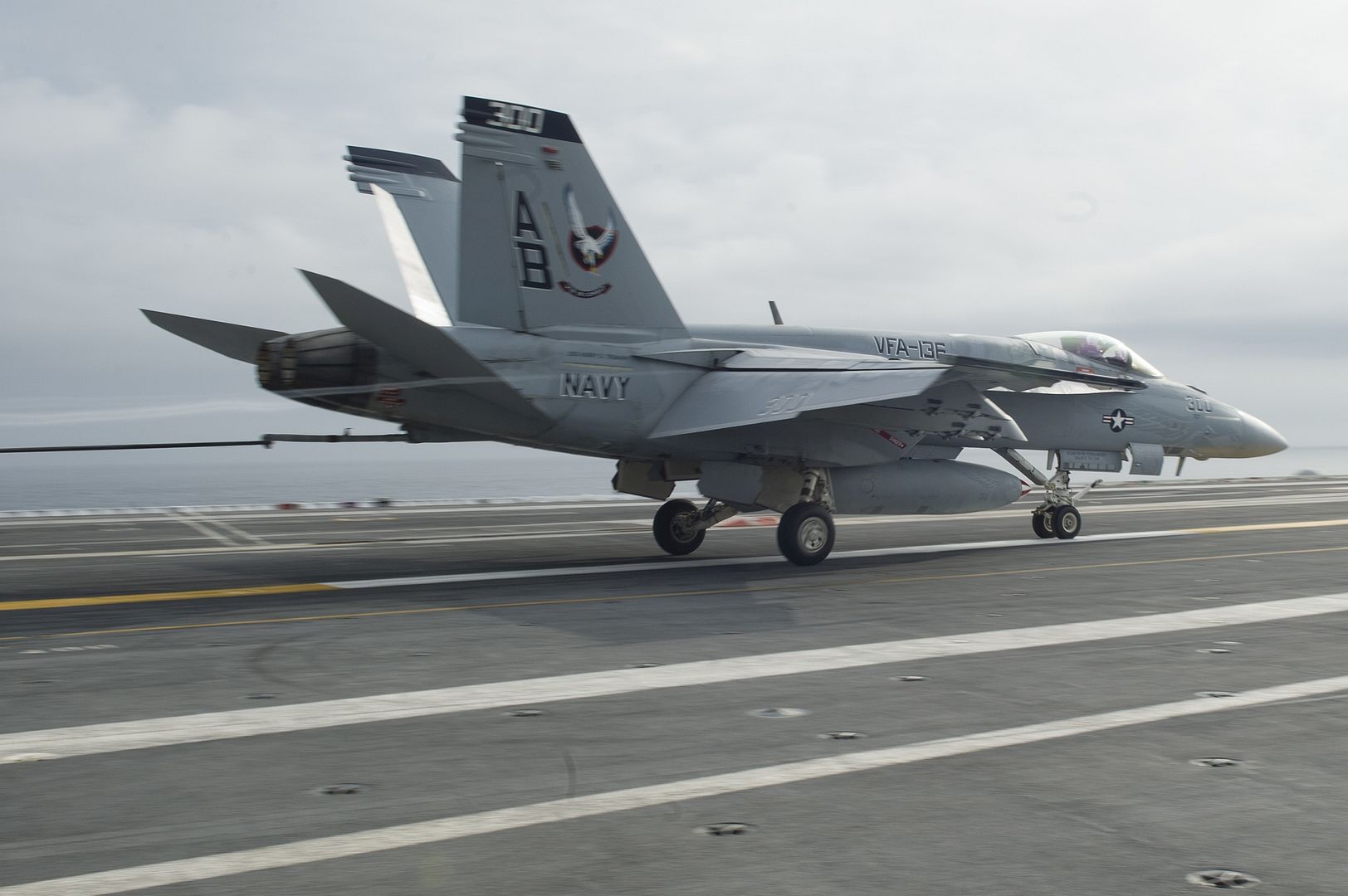
PACIFIC OCEAN (Oct. 10, 2017) An F/A-18F Super Hornet, assigned to the Redcocks of Strike Fighter Attack Squadron (VFA) 22, lands on the flight deck of the aircraft carrier USS Theodore Roosevelt (CVN 71). Theodore Roosevelt departed San Diego for a regularly scheduled deployment, Oct. 6, to the U.S. 7th and 5th Fleet areas of responsibility in support of maritime security operations and theater security cooperation efforts. (U.S. Navy photo by Mass Communication Specialist 3rd Class Spencer Roberts/Released)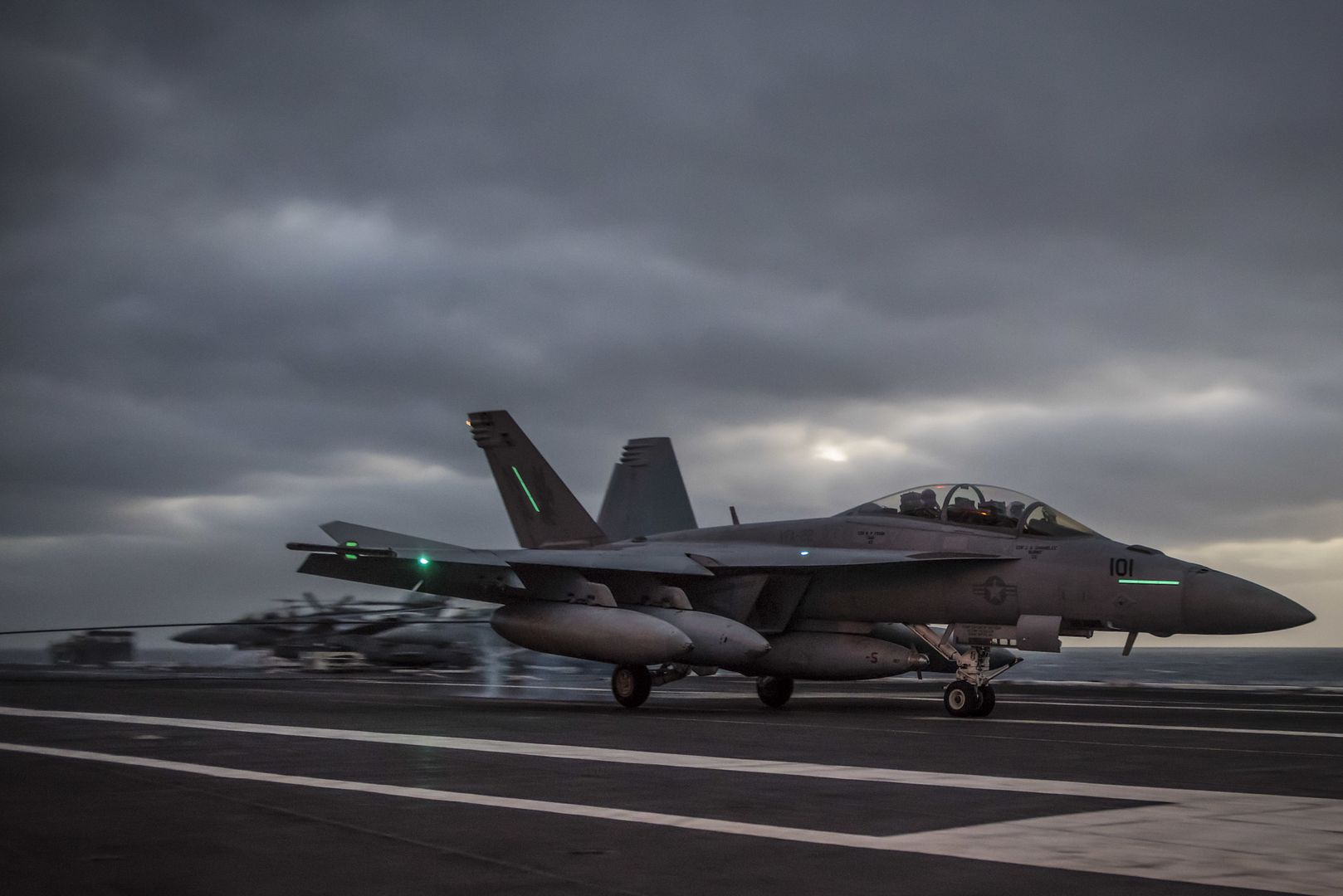
ATLANTIC OCEAN (Oct. 10, 2017) Aviation Boatswain's Mate (Handling) 1st Class Roy Jackson directs an EA-18G Growler, assigned to the ?Rooks? of Electronic Attack Squadron (VAQ) 137, on the flight deck aboard USS Harry S. Truman (CVN 75). Truman is currently underway conducting Tailored Shipboard Test Availability and Final Evaluation Problem (TSTA/FEP) in preparation for future operations. (U.S. Navy photo by Mass Communication Specialist Seaman Rebekah A. Watkins/Released)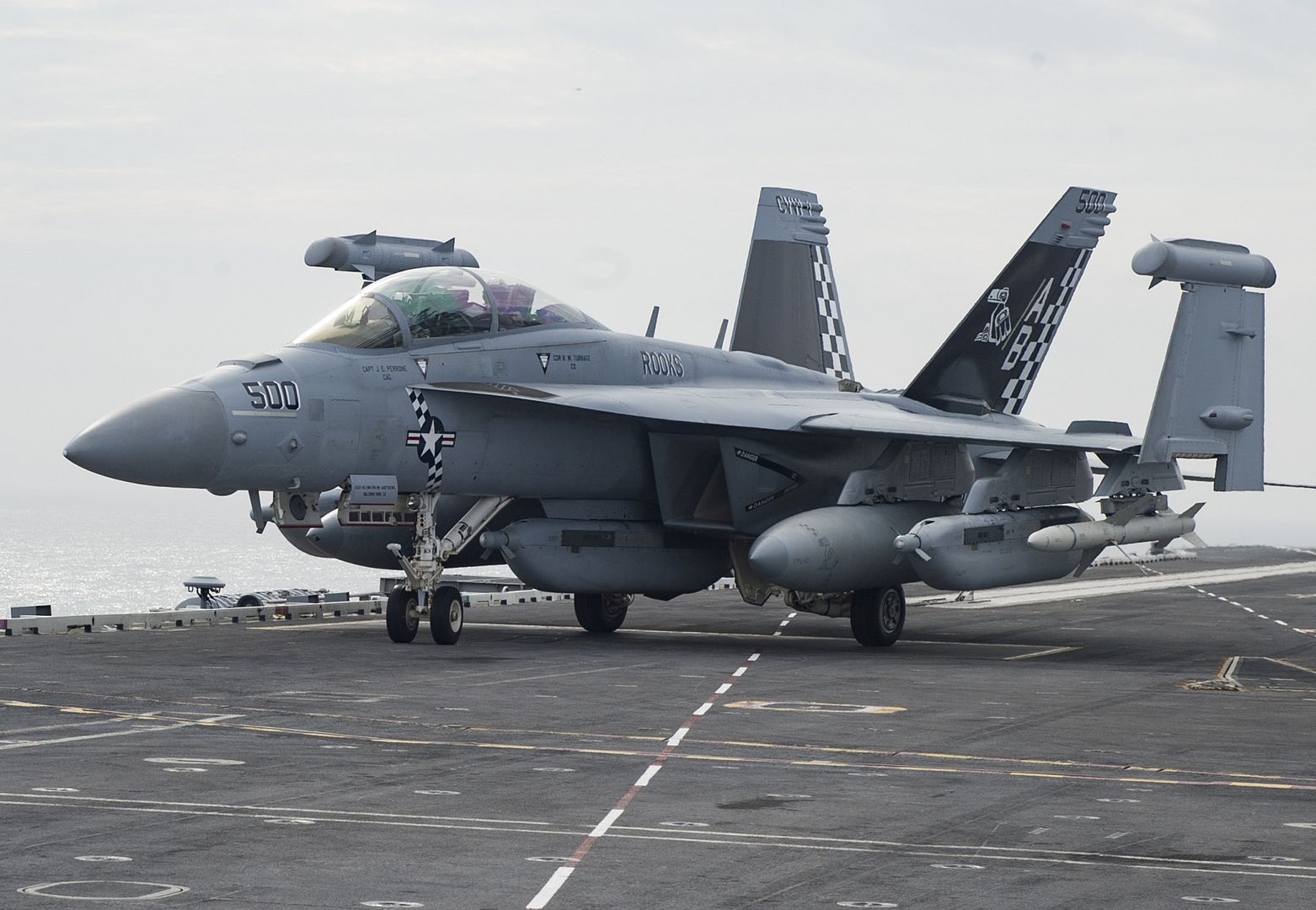
One High Mobility Multipurpose Wheeled Vehicle from 2nd Battalion, 503rd Infantry Regiment, 173rd Airborne Brigade, gets loaded into a Polish Air Force C-130 Hercules from 33rd ATB at Aviano Air Base, Italy, Oct. 11, 2017 during Exercise Swift Response 2017, Phase 2. Swift Response 2017 links to Exercise Saber Guardian 17, a U.S. Army Europe-led, multinational exercise that spans across Bulgaria, Hungary, and Romania with more than 25,000 service members from 22 allied and partner nations. (U.S. Army Photos by Visual Information Specialist Paolo Bovo/Released)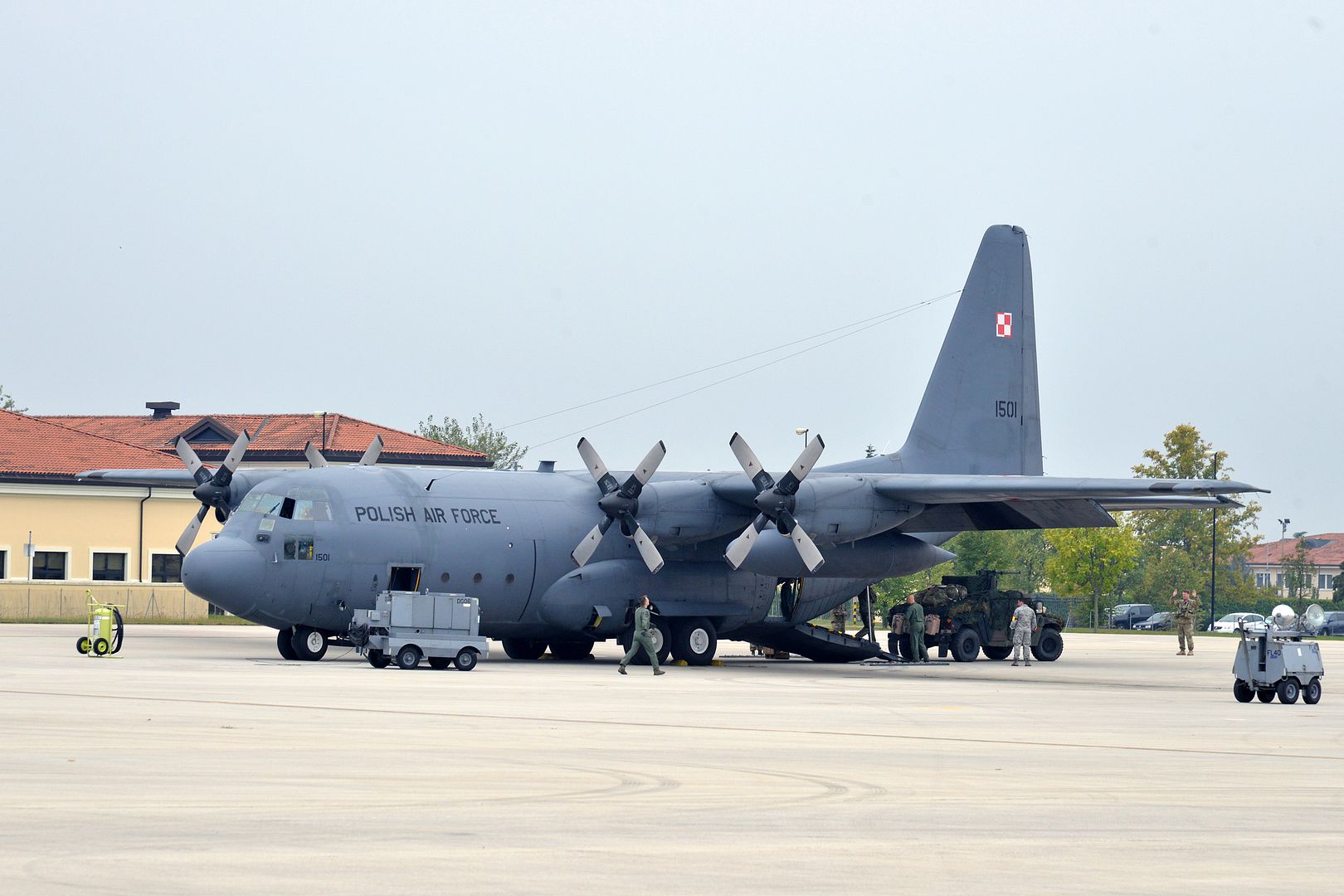
EVERETT, Wash., Oct. 11, 2017 /PRNewswire/ -- Boeing (NYSE: BA) and Air India celebrated today the delivery of the airline's 125th airplane from Boeing. The airplane is the 27th 787-8 Dreamliner for the national carrier.
"Boeing airplanes are, and always have been, the foundation of Air India's fleet, providing us with the very best in economics, fuel efficiency, flexibility and passenger comfort," said Rajiv Bansal, Chairman and Managing Director, Air India. "Taking delivery of our 125th Boeing airplane and 27th 787 Dreamliner marks an important day for Air India. The 787 has been integral to our expansion and competiveness, enabling us to open numerous new and nonstop routes and provide our customers with an unrivalled flying experience."
Air India was an original member of the 787 Dreamliner launch group and took delivery of its first 787-8 in 2012. In all, the airline now operates 27 787-8 Dreamliners, along with 777-200LRs (Longer Range), 777-300ER (Extended Range), and 747-400s.
"Boeing and Air India have been strong partners in aviation for more than 70 years and it is a proud moment in our shared partnership to deliver their 125th airplane," said Dinesh Keskar, senior vice president, Asia Pacific and India Sales, Boeing Commercial Airplanes.
The Air India 787 Dreamliners offer a host of passengers-pleasing features such as large overhead bins, comfortable reclining seats, LED lighting, cleaner air, larger dimmable windows and an exclusive in-flight entertainment experience to passengers.
Air India operates the 787 Dreamliner to all its destinations in Europe and to other cities in the Gulf, Asia and Australia. The non-stop, direct operations of Air India with the state-of-the-art Dreamliner airplane - to both its international and domestic network - have become very popular to passengers in India and abroad.
The 787 Dreamliner family is the most innovative and efficient airplane family flying today. Since entering service in 2011, the 787 family has flown more than 196 million people on more than 560 unique routes around the world, saving an estimated 18 billion pounds of fuel.
About Air India:
Air India occupies a special place in the global and Indian aviation scenario. It pioneered the aviation in India and its history is synonymous with the history of civil aviation in India. Air India is not a mere airline that transports passengers, baggage and cargo. It is a multi-faceted organization. The aviation infrastructure it has created over the years is a testimony of its contribution. Apart from servicing of all its aircraft in-house with its own engineering facilities, Air India also undertakes ground handling services of many airlines in many cities in India. Air India has grown to become a mega international airline with a network of 44 destinations across the USA, Europe, Far-East and South-East Asia and the Gulf. The airline's domestic network covers over 72 destinations, including far-flung areas of the North-East, Ladakh, Andaman and Nicobar Islands. Air India, today, flies one of the youngest, state-of-the-art, fleet of aircraft comprising a mix of the wide-body Boeing B777s, B747s, its latest acquisition- the B787 Dreamliner and the narrow body Airbus A321s, A320s and A319 aircraft. For additional information visit airindia.in and/or follow us on Facebook/airindia and on Twitter @airindiain.
About Star Alliance:
The Star Alliance network was established in 1997 as the first truly global airline alliance to offer worldwide reach, recognition and seamless service to the international traveller. Its acceptance by the market has been recognized by numerous awards, including the Air Transport World Market Leadership Award and Best Airline Alliance by both Business Traveller Magazine and Skytrax. The member airlines are: Adria Airways, Aegean Airlines, Air Canada, Air China, Air India, Air New Zealand, ANA, Asiana Airlines, Austrian, Avianca, AviancaBrasil, Brussels Airlines, Copa Airlines, Croatia Airlines, EGYPTAIR, Ethiopian Airlines, EVA Air, LOT Polish Airlines, Lufthansa, Scandinavian Airlines, Shenzhen Airlines, Singapore Airlines, South African Airways, SWISS, TAP Portugal, Turkish Airlines, THAI and United. Overall, the Star Alliance network currently offers more than 18,500 daily flights to 1,330 airports in 192 countries.
-
 Main AdminA T-6A Texan II flying past Randolph High School at Joint Base San Antonio-Randolph, Texas Oct. 10, 2017. The crew is a pilot instructor training student and instructor pilot with the 559th Flying Training Squadron under the 12th Flying Training Wing at JBSA-Randolph.
Main AdminA T-6A Texan II flying past Randolph High School at Joint Base San Antonio-Randolph, Texas Oct. 10, 2017. The crew is a pilot instructor training student and instructor pilot with the 559th Flying Training Squadron under the 12th Flying Training Wing at JBSA-Randolph.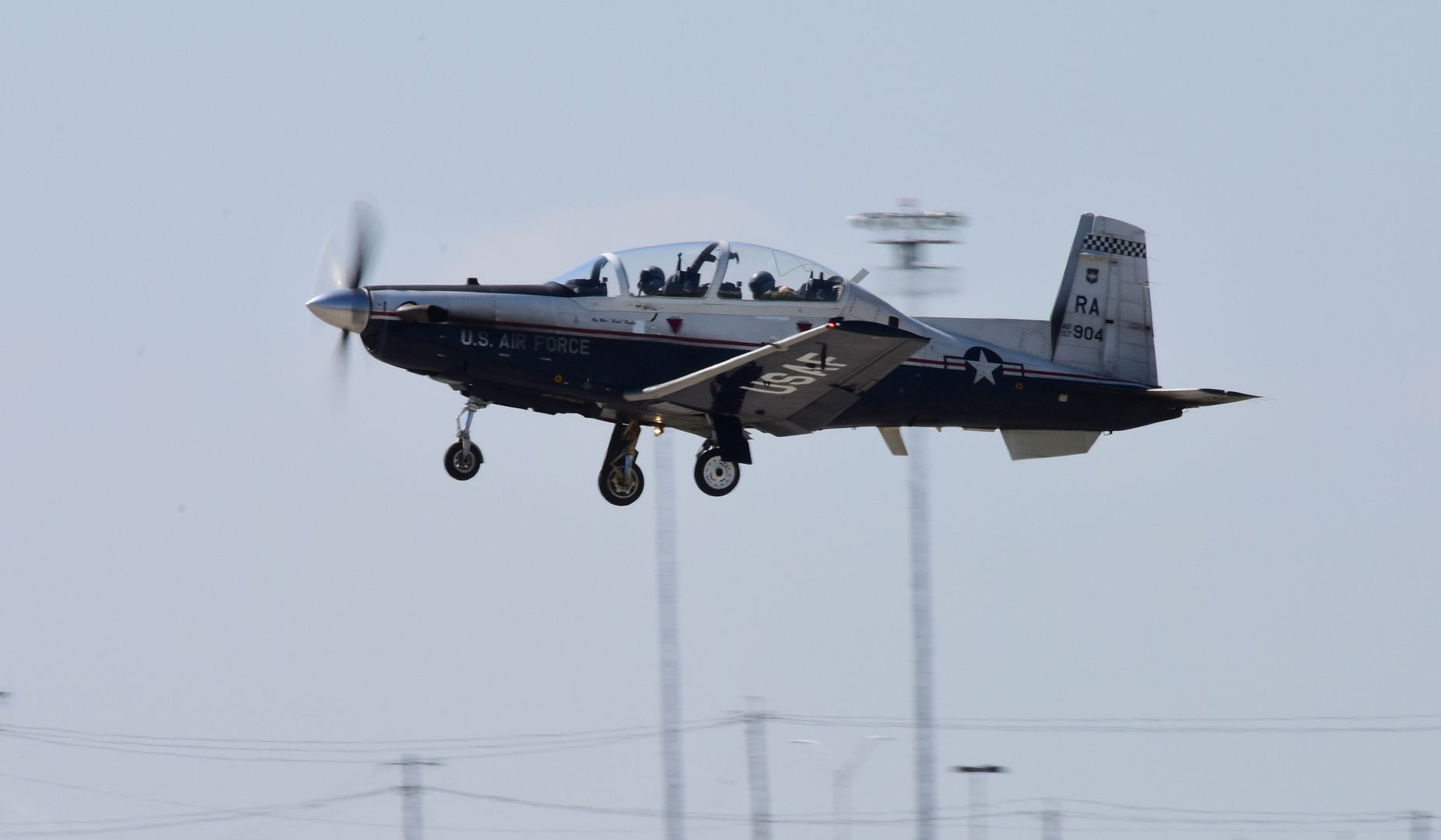
MARINE CORPS AIR STATION MIRAMAR, Calif.- An F-35B Lightning II assigned to Marine Fighter Attack Squadron (VMFA) 211, Marine Aircraft Group (MAG) 13, 3rd Marine Aircraft Wing (MAW), refuels in flight with Marine Aerial Refueler Transport Squadron (VMGR) 352 while conducting flight operations above Marine Corps Air Ground Combat Center Twentynine Palms, Calif., Oct. 4. The ability to refuel in flight is critical for the supportability and the sustainability of the F-35B during missions. (U.S. Marine Corps photo by Lance Cpl. Becky Calhoun/Released)
A U.S. Air Force F-15 Eagle from the 67th Fighter Squadron takes off from the runway Oct. 12, 2017, at Kadena Air Base, Japan. The F-15 can be operated by one or two pilots at a time, enabling top performance in any scenario. (U.S. Air Force photo by Senior Airman Quay Drawdy)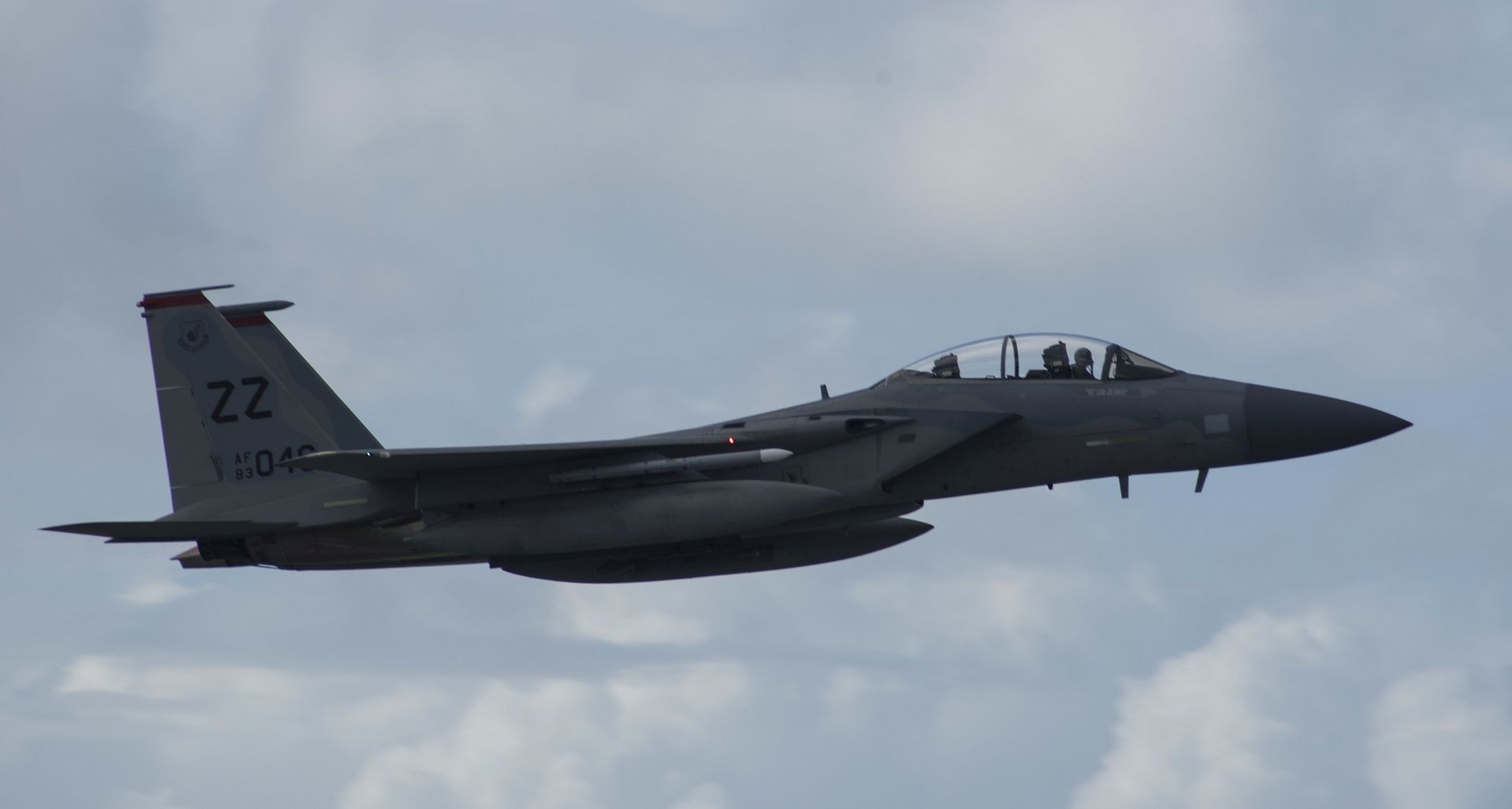
12 October 2017
Royal Air Force personnel have been put through testing training over Oman since the beginning of October as 6 Squadron from RAF Lossiemouth conduct exercises with the Royal Air Force of Oman (RAFO).
Nearly 250 personnel comprising RAF regular, reserve and civilian contractors serving alongside the Royal Air Force of Oman have come together on Exercise Magic Carpet 17. The Detachment Commander, Wing Commander Billy Cooper said: ?In two weeks of flying we have flown 102 sorties. The Typhoons have performed exceptionally well with first class maintenance from our engineers.?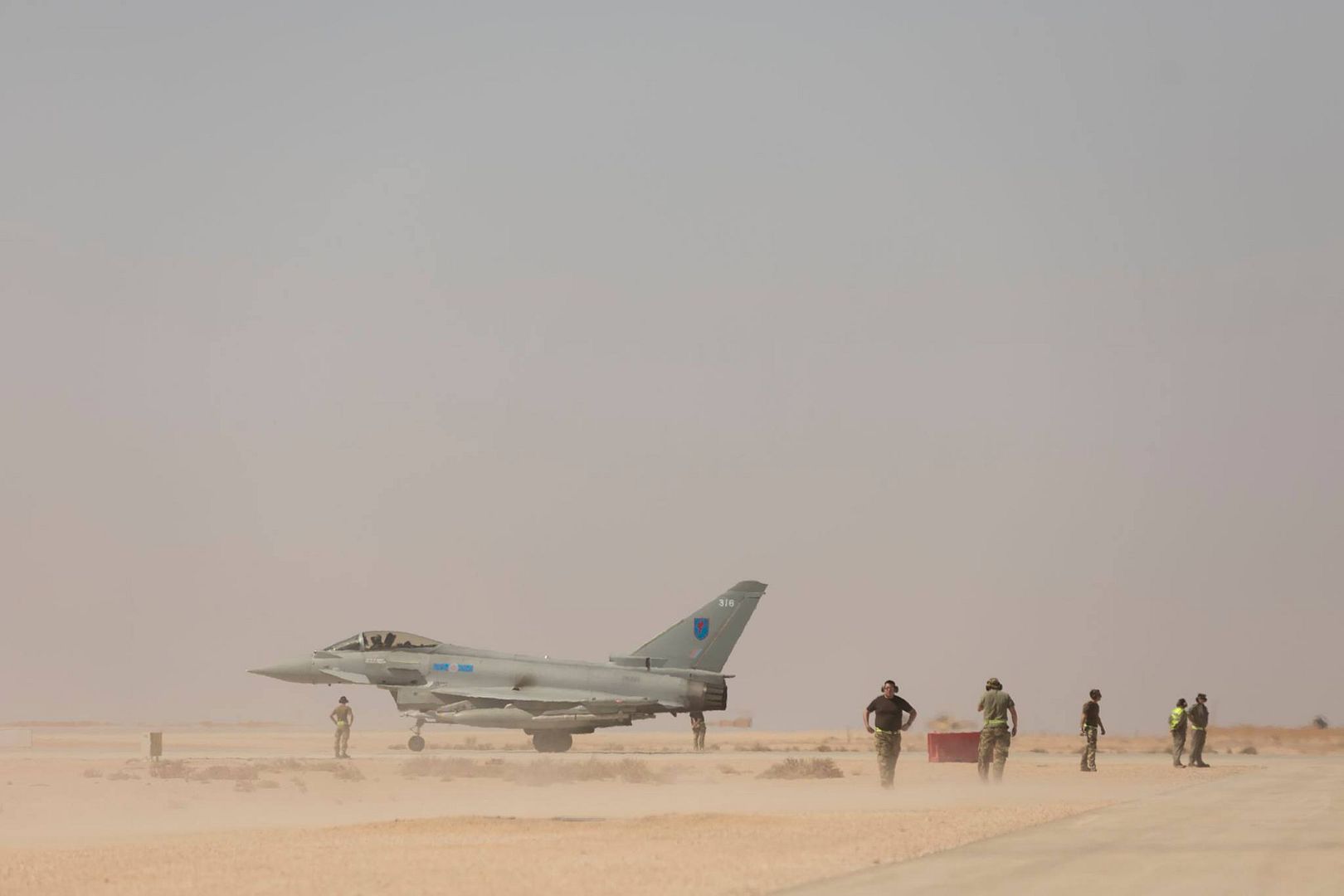
He added: ?Not only have my pilots been able to practice all the skills they need. But it has been a fantastic opportunity to work in testing conditions for everyone from our field caterers to armourers and the forward air controllers who call in airpower.?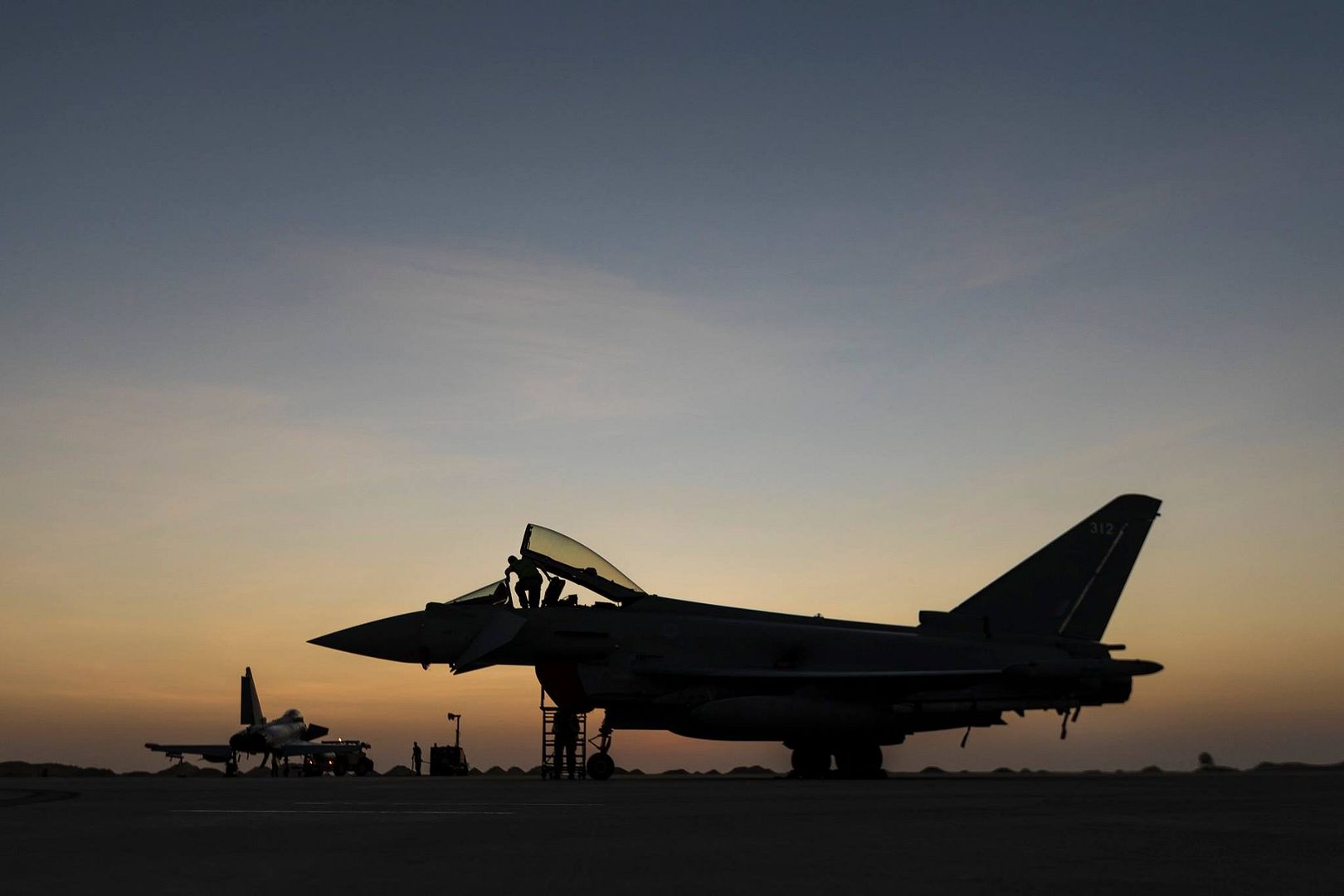
The RAF has been hosted by the Royal Air Force of Oman who have provided extensive training facilities. Wg Cdr Cooper said: ?From the military perspective we have had excellent access to ranges to drop precision guided bombs and to use Typhoon?s 27 mm cannon as well as practising air defence alongside the RAFO F-16 jets.? He added, ?But for me, and I know I can speak for the whole detachment, I?ve particularly enjoyed the opportunity to meet our hosts, experience the professionalism of RAFO and see what Oman has to offer.?
Being in Oman has provided training representative of the weather and flying conditions expected on operations. The two weeks of flying have also enabled many personnel in the air and on the ground to be efficiently qualified in delivering live munitions.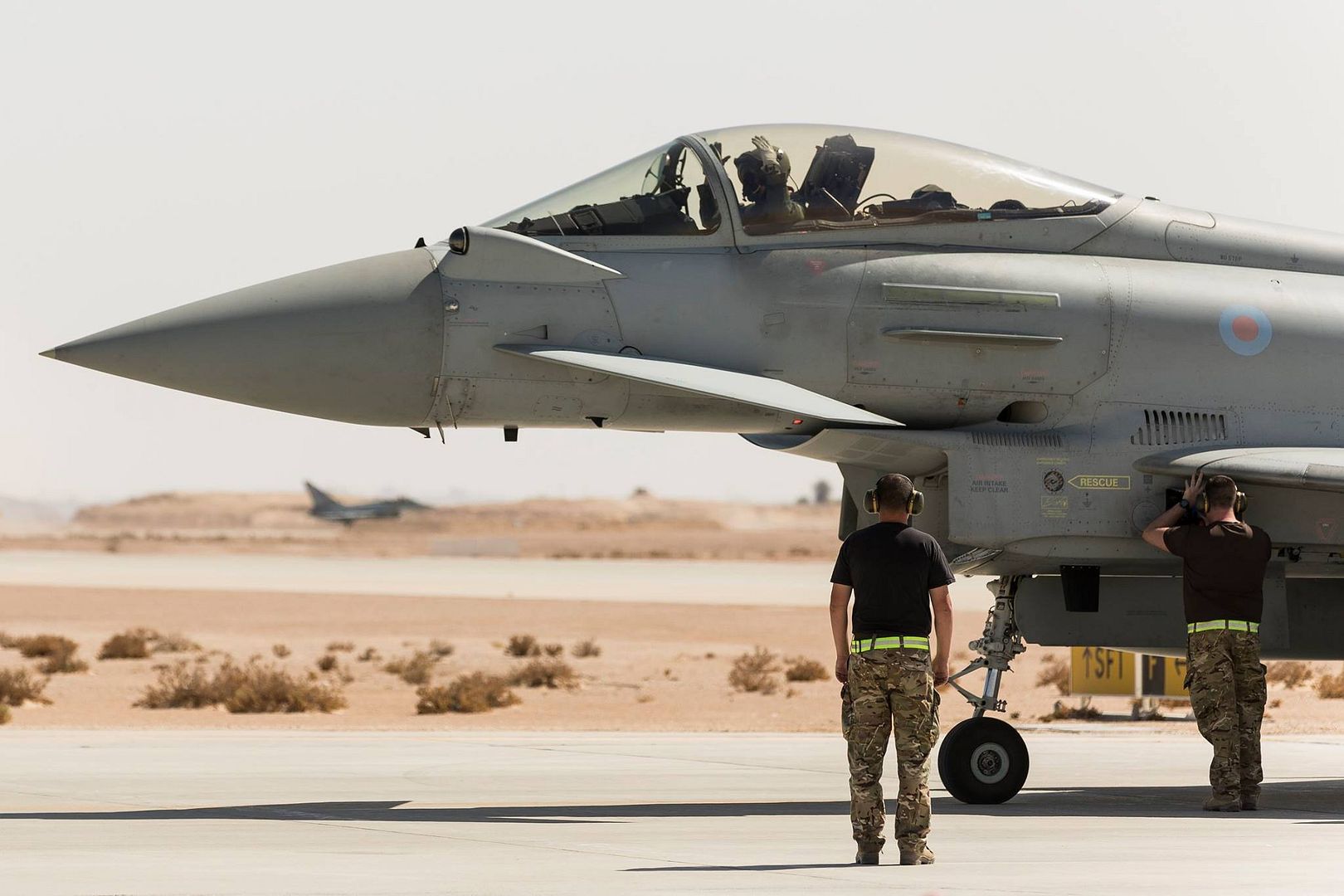
-
 Main AdminA U.S. Air Force C-17 Globemaster III from the 105th Airlift Wing, New York National Guard, lands at the Burlington International Airport, South Burlington, Vt., Oct. 13, 2017. The aircraft transported Vermont National Guardsmen and their equipment home, after deploying to the U.S. Virgin Islands in support of recovery efforts following both Hurricanes Irma and Maria. (U.S. Air National Guard photo's by Tech. Sgt. Sarah Mattison)
Main AdminA U.S. Air Force C-17 Globemaster III from the 105th Airlift Wing, New York National Guard, lands at the Burlington International Airport, South Burlington, Vt., Oct. 13, 2017. The aircraft transported Vermont National Guardsmen and their equipment home, after deploying to the U.S. Virgin Islands in support of recovery efforts following both Hurricanes Irma and Maria. (U.S. Air National Guard photo's by Tech. Sgt. Sarah Mattison)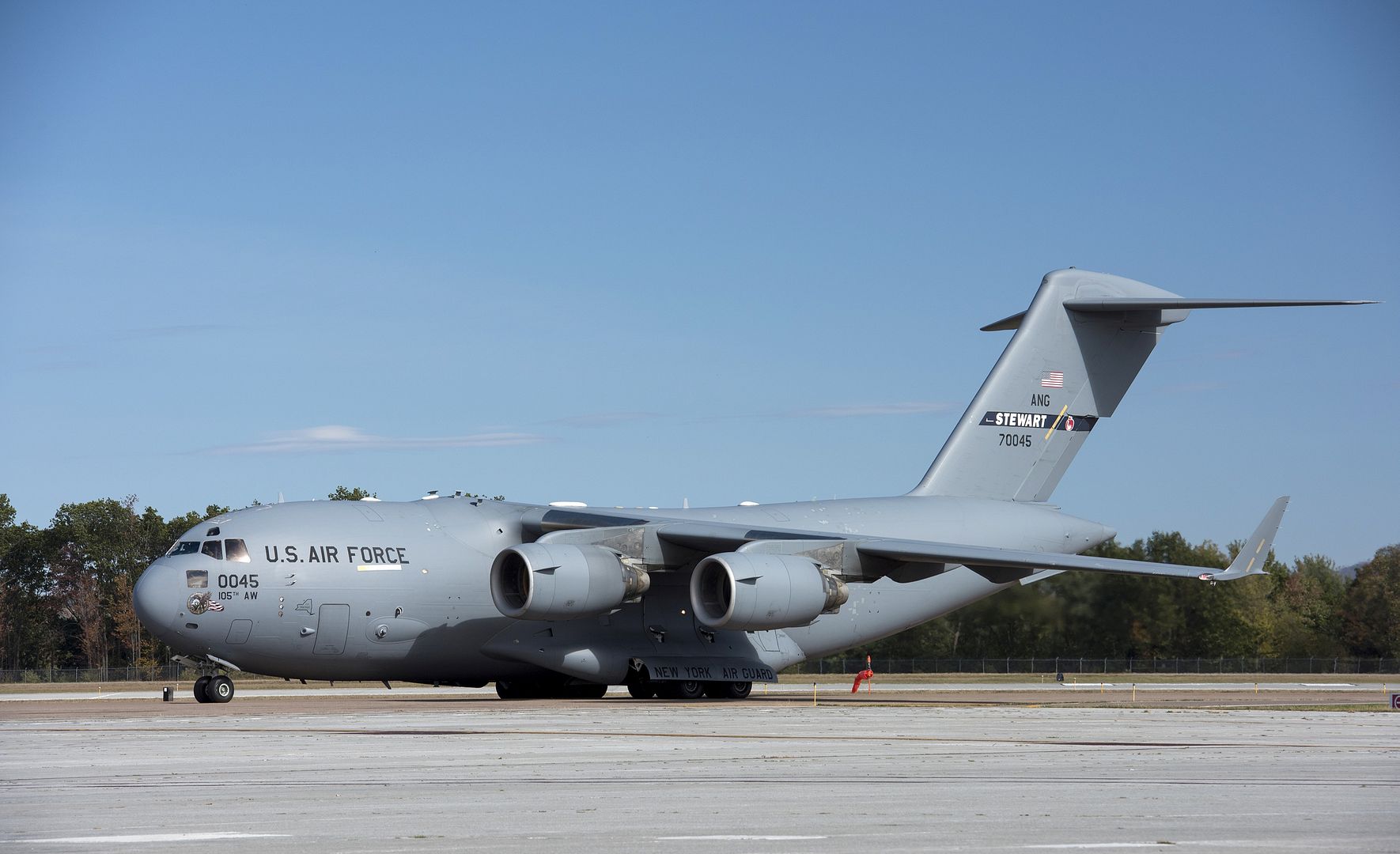
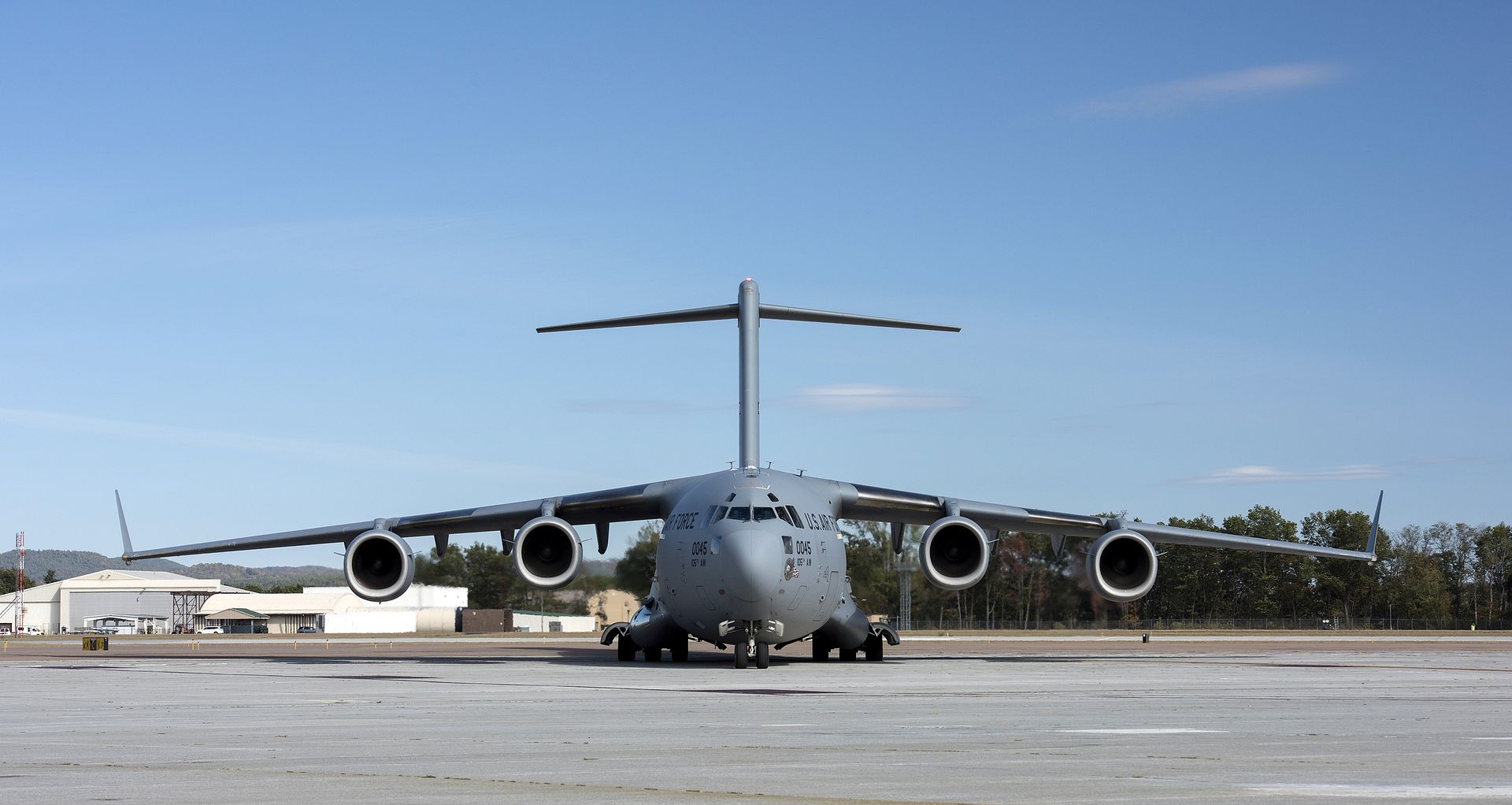
An F-22 Raptor from the 1st Fighter Wing, Joint Base Langley-Eustis, Va., takes off at RAF Lakenheath, England, Oct. 12, 2017. The Air Force has deployed F-22s, Airmen and associated equipment to RAF Lakenheath, for a flying training deployment to conduct air training with other Europe-based U.S. aircraft and NATO allies. (U.S. Air Force photo by Senior Airman Malcolm Mayfield)
An F-22 Raptor assigned to the 1st Fighter Wing, Joint Base Langley-Eustis, Va., lands at Spangdahlem Air Base, Germany, Oct. 13, 2017. This F-22 flying training deployment is an example of how the U.S. is engaged, postured, and ready with credible force to assure, deter, and defend in an increasingly complex security environment. (U.S. Air Force photo by Staff Sgt. Jonathan Snyder)
An F-22 Raptor assigned to the 1st Fighter Wing, Joint Base Langley-Eustis, Va., taxis while an F-16 Fighting Falcon assigned to the 480th Fighter Squadron lands at Spangdahlem Air Base, Germany, Oct. 13, 2017. This F-22 flying training deployment is an example of how the U.S. is engaged, postured, and ready with credible force to assure, deter, and defend in an increasingly complex security environment. (U.S. Air Force photo by Staff Sgt. Jonathan Snyder)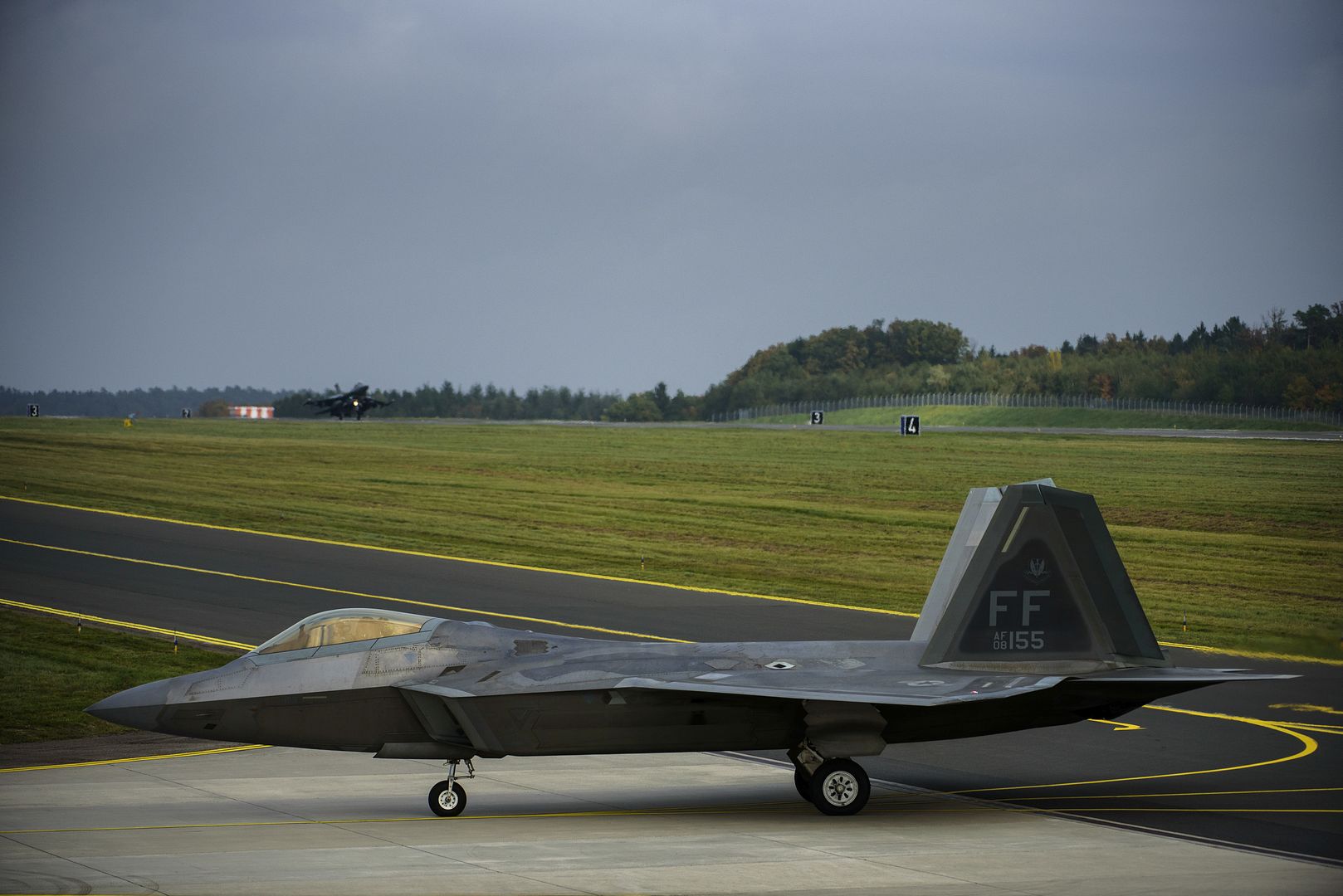
Two F-22 Raptors assigned to the 1st Fighter Wing, Joint Base Langley-Eustis, Va., sit on the flightline at Spangdahlem Air Base, Germany, Oct. 13, 2017. This F-22 flying training deployment is an example of how the U.S. is engaged, postured, and ready with credible force to assure, deter, and defend in an increasingly complex security environment. (U.S. Air Force photo by Staff Sgt. Jonathan Snyder)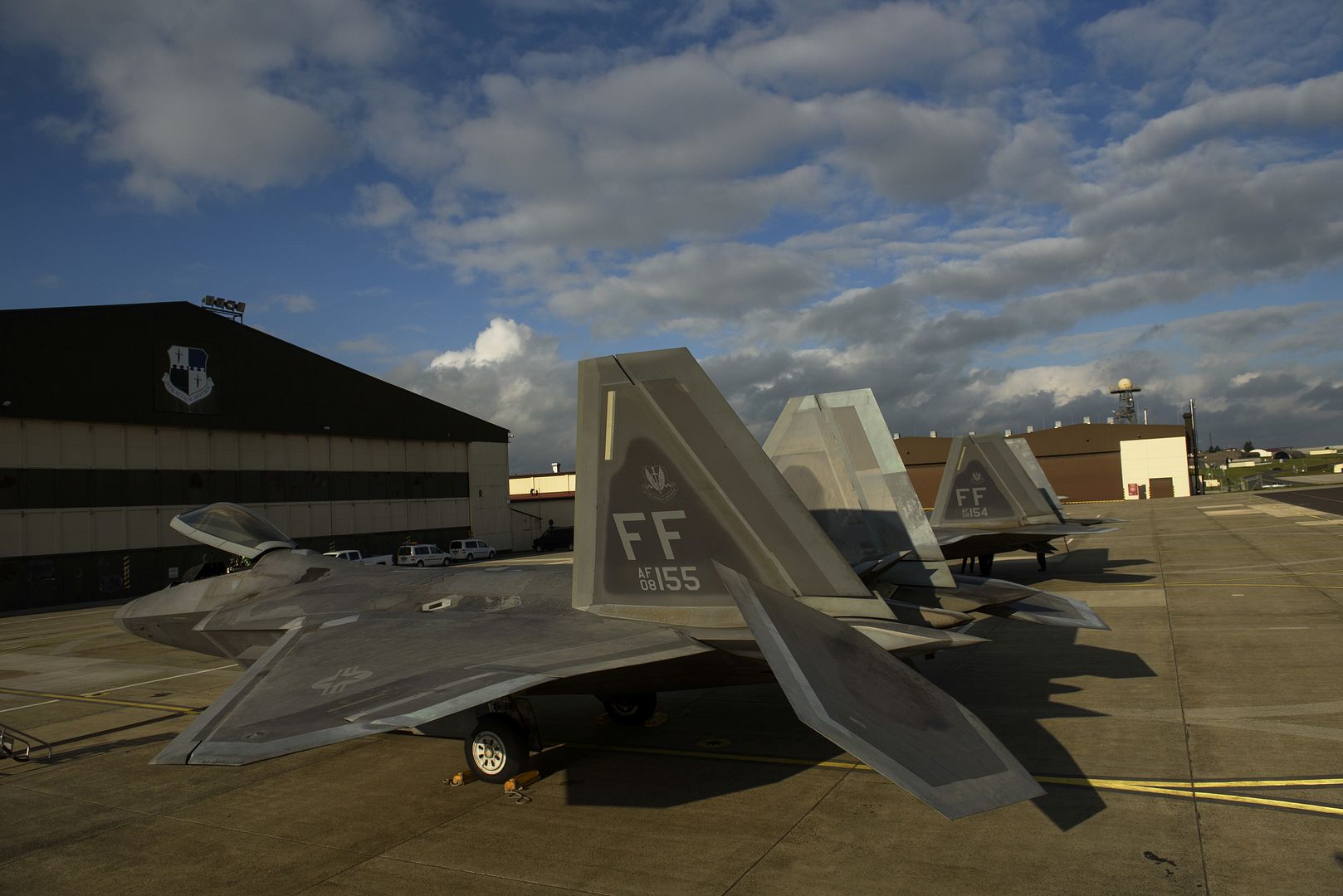
Marignane, 13 October 2017 ? The third H160 prototype (PT3) performed its maiden flight at the company?s headquarters this afternoon. PT3, with its cabin interior configuration similar to that of a serial aircraft, will contribute to certification activities and flight testing to ensure the aircraft?s level of maturity ahead of entry into service in 2019.
?The third prototype incorporates a significant amount of modifications based on feedback resulting from the first two years of testing by development, production and support teams? said Bernard Fujarski, Senior Vice President, Head of H160 programme. ?It plays an essential role in delivering a mature aircraft at entry into service and it is also closer to the serial definition with its interior lining and transport cabin configuration? he added.
The first two prototypes have clocked more than 500 flight hours since the model?s maiden flight in June 2015. In that time, the flight envelope has already been fully tested and the domain has been opened. The remaining development activity, for example complementary hot weather testing, antennas, and optional equipment will be done using all three aircraft.
The helicopter?s final assembly line in Marignane is in the final stages of preparation and will be ready to start serial production shortly. Customer support activities are being prepared in parallel thanks to the extensive involvement of maintenance teams, through the ?operator zero campaign?, using the prototypes and test means to check and improve the maintenance plan, digital work cards and technical documentation, and tooling etc. ahead of actual operations.
The first version to enter service in 2019 will be the passenger transport one ? commercial air transport or Oil and Gas, followed by the emergency medical services (EMS) version.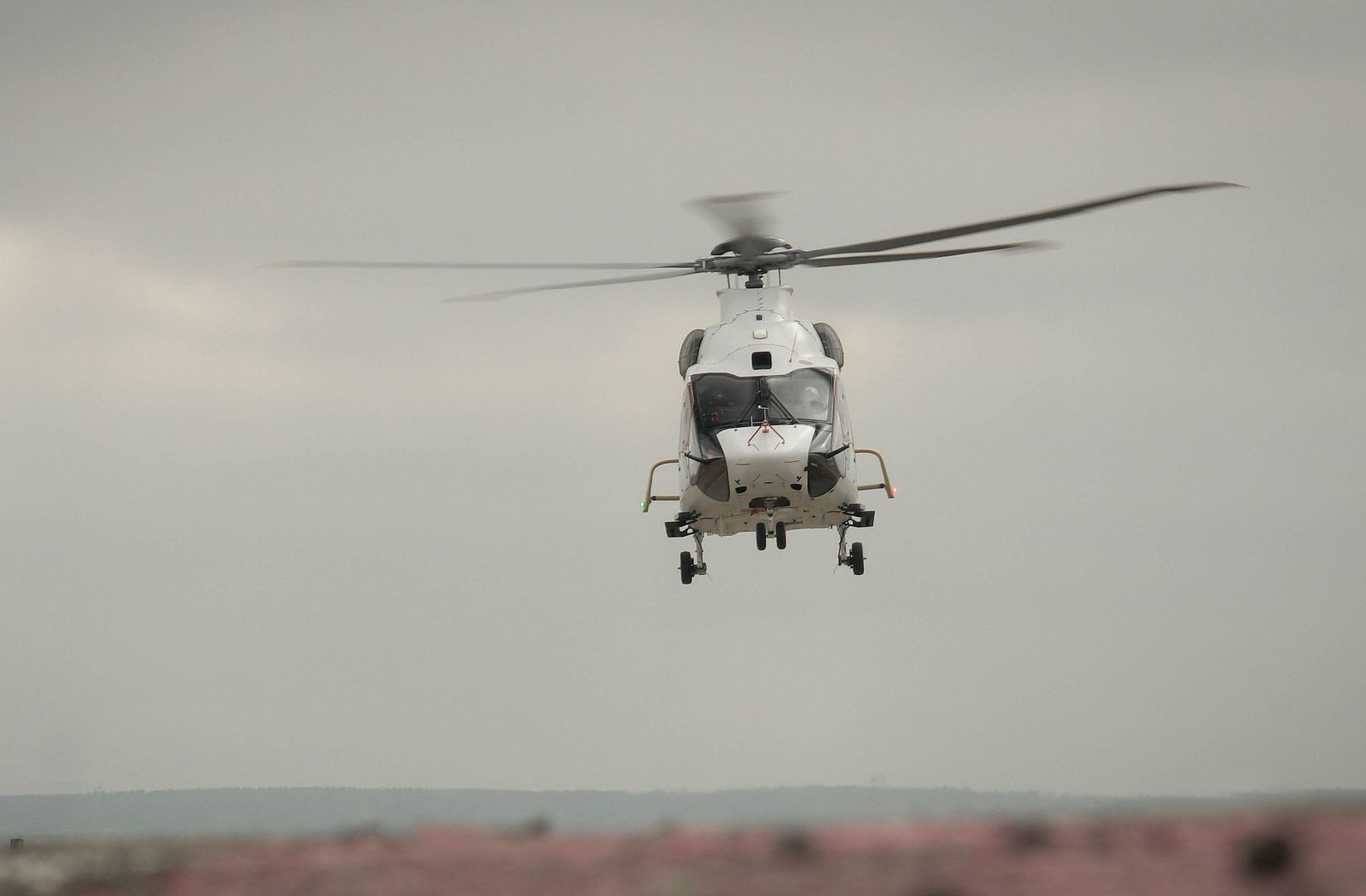
-
 Main AdminFour F-15 Eagles from the 44th and 67th Fighter Squadrons before takeoff during a no-notice exercise Oct. 13, 2017 at Kadena Air Base, Japan. The F-15 Eagle is an all-weather tactical fighter aircraft that is designed to maintain air superiority in any airspace. (U.S. Air Force photo by Senior Airman Omari Bernard)
Main AdminFour F-15 Eagles from the 44th and 67th Fighter Squadrons before takeoff during a no-notice exercise Oct. 13, 2017 at Kadena Air Base, Japan. The F-15 Eagle is an all-weather tactical fighter aircraft that is designed to maintain air superiority in any airspace. (U.S. Air Force photo by Senior Airman Omari Bernard)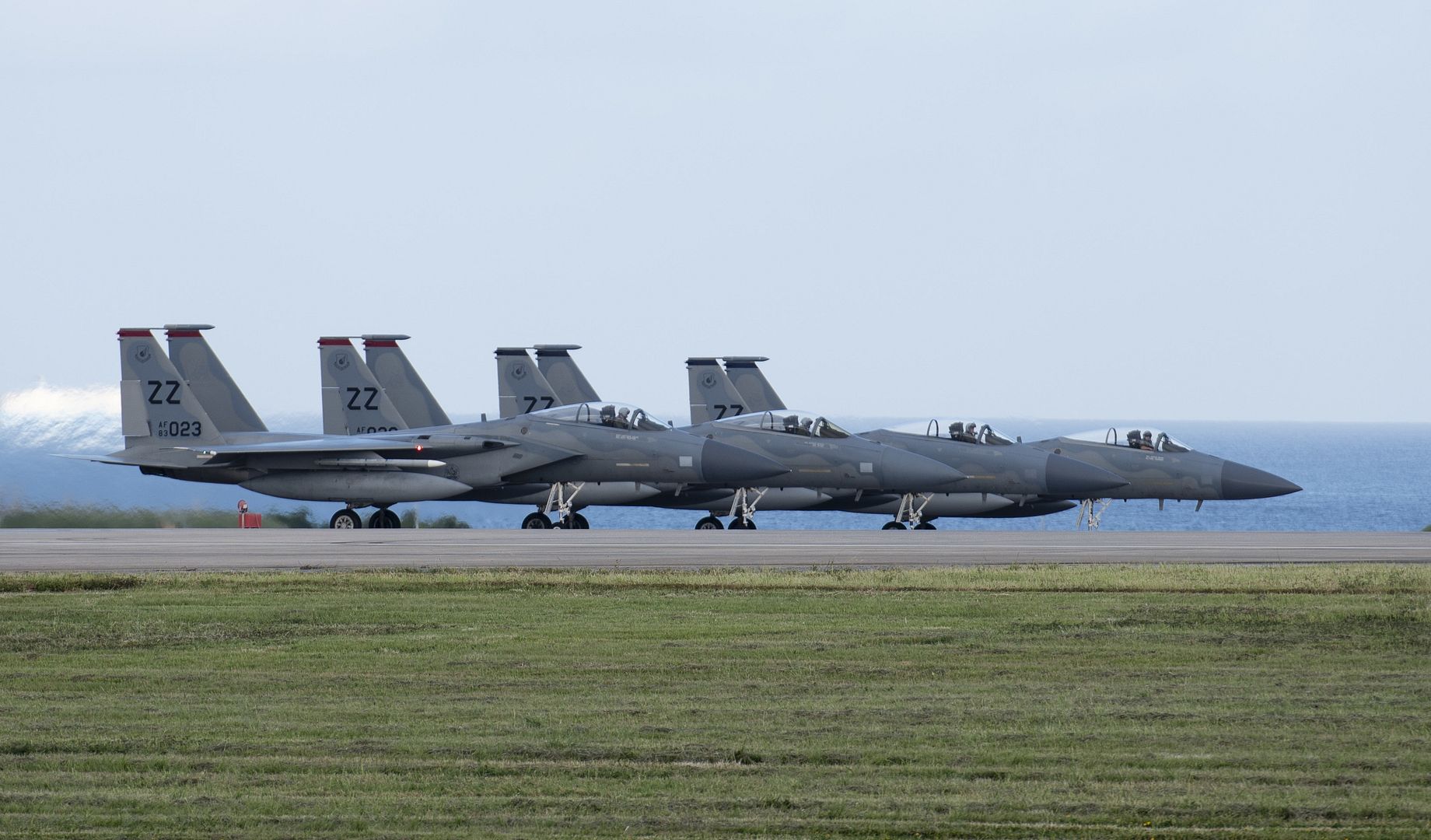
A 67th Fighter Squadron F-15 Eagle takes off from the runway during a no-notice exercise Oct. 13, 2017 at Kadena Air Base, Japan. Kadena AB is home to the U.S. Air Force?s largest combat wing with a fleet of more than 80 combat-ready aircraft to maintain air power, peace, and stability in the Asia-Pacific region. (U.S. Air Force photo by Senior Airman Omari Bernard)
-
 Main AdminATLANTIC OCEAN (Oct. 14, 2017) An EA-18G Growler, assigned to the ?Rooks? of Electronic Attack Squadron (VAQ) 137, prepares to land on the flight deck aboard USS Harry S. Truman (CVN 75). Truman is currently underway conducting Tailored Shipboard Test Availability and Final Evaluation Problem (TSTA/FEP) in preparation for future operations. (U.S. Navy photo by Mass Communication Specialist Seaman Kaysee Lohmann/Released)
Main AdminATLANTIC OCEAN (Oct. 14, 2017) An EA-18G Growler, assigned to the ?Rooks? of Electronic Attack Squadron (VAQ) 137, prepares to land on the flight deck aboard USS Harry S. Truman (CVN 75). Truman is currently underway conducting Tailored Shipboard Test Availability and Final Evaluation Problem (TSTA/FEP) in preparation for future operations. (U.S. Navy photo by Mass Communication Specialist Seaman Kaysee Lohmann/Released)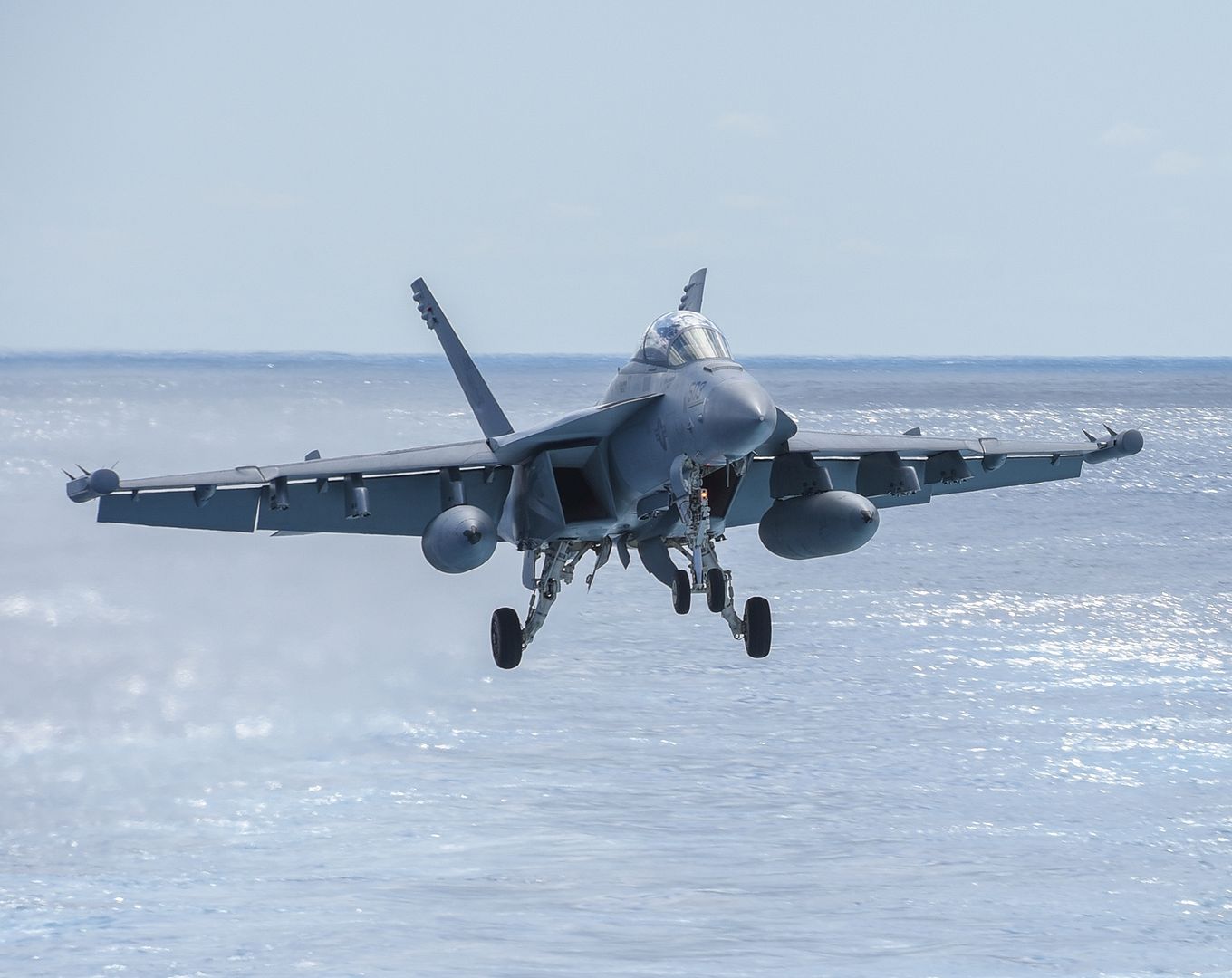
A U.S. Air Force F-22 Raptor flies alongside a U.S. Air Force KC-135 Stratotanker from RAF Mildenhall, England, Oct. 13, 2017, over Germany. The U.S. Air Force deployed 12 F-22 Raptors to RAF Lakenheath, to participate in training exercises with NATO allies. (U.S. Air Force photo by Airman 1st Class Luke Milano)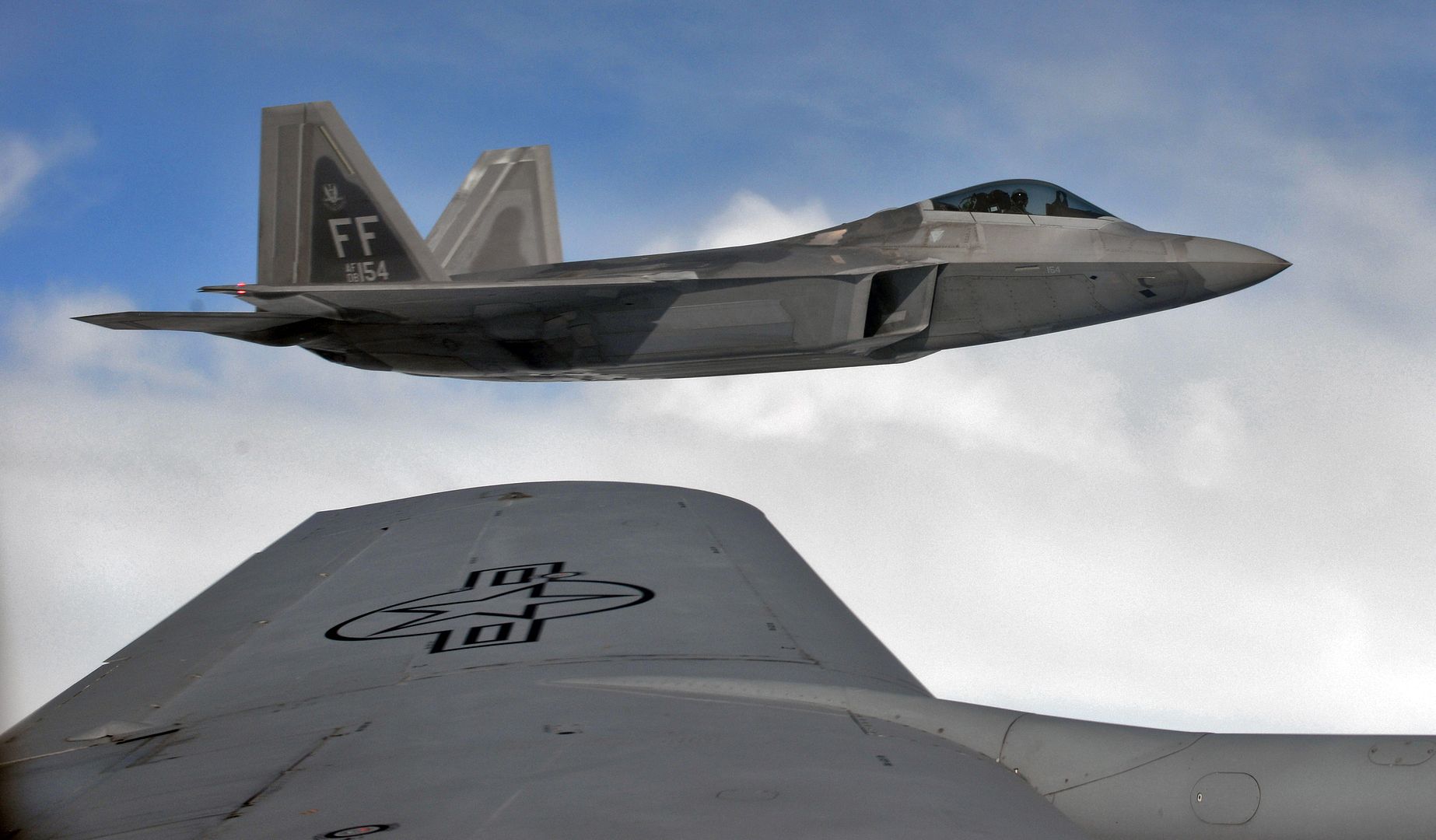
A U.S. Air Force B-1B Lancer assigned to the 28th Bomb Squadron at Dyess Air Force Base, Texas, prepares for landing at RAF Fairford, U.K., Oct. 12, 2017. Bomber missions demonstrate the credibility and flexibility of our forces to address a broad range of global challenges. (Courtesy photo)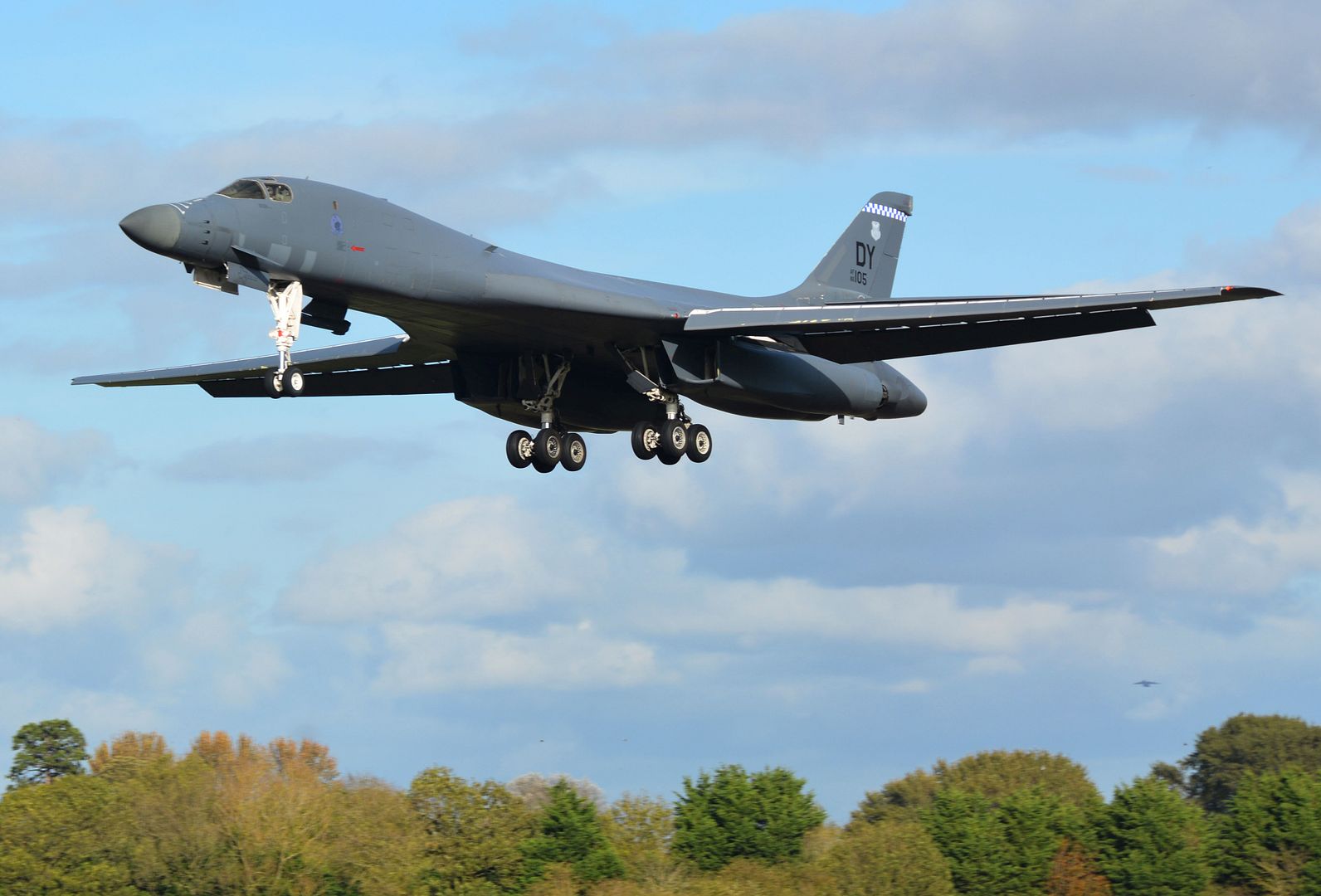
Soldiers from Bravo Company, 3rd General Support Aviation Battalion, 10th Combat Aviation Brigade, 10th Mountain Division (LI), from Fort Drum, New York, conduct maintenance on a CH-47 Chinook helicopter in preparation for redeployment on Oct. 17, 2017, at Katterbach Army Airfield in Ansbach, Bavaria, Germany. (U.S. Army photo by Charles Rosemond)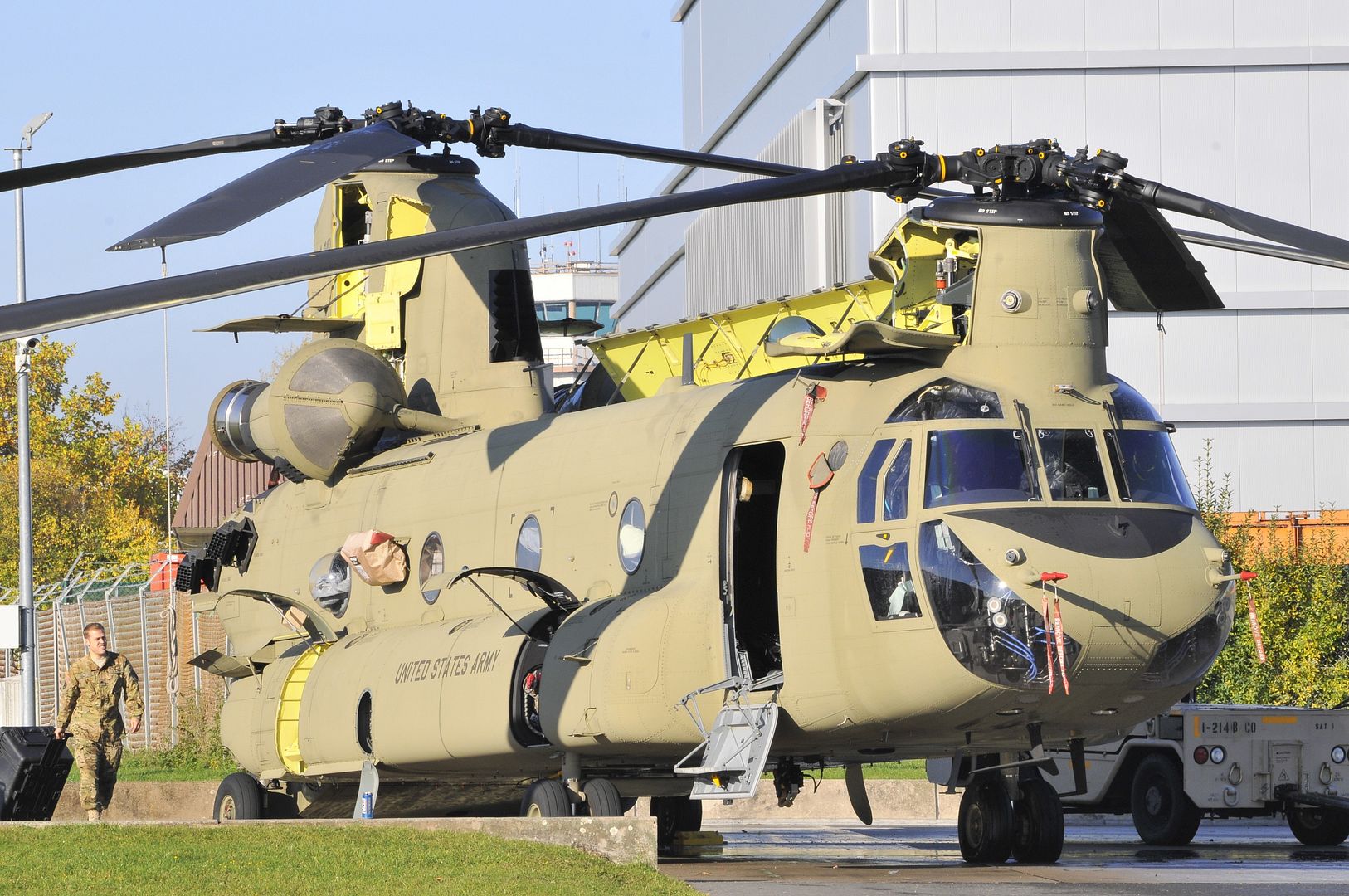
An LC-130 Skibird takes off from Stratton Air National Guard Base, Scotia, N.Y., to begin the journey to McMurdo Station, Antarctica, on Oct. 17, 2017. This is the 30th season that the unit will participate in Operation Deep Freeze, the military component of the U.S. Antarctic Program, which is managed by the National Science Foundation. (U.S. Air National photo by Senior Master Sgt. William Gizara)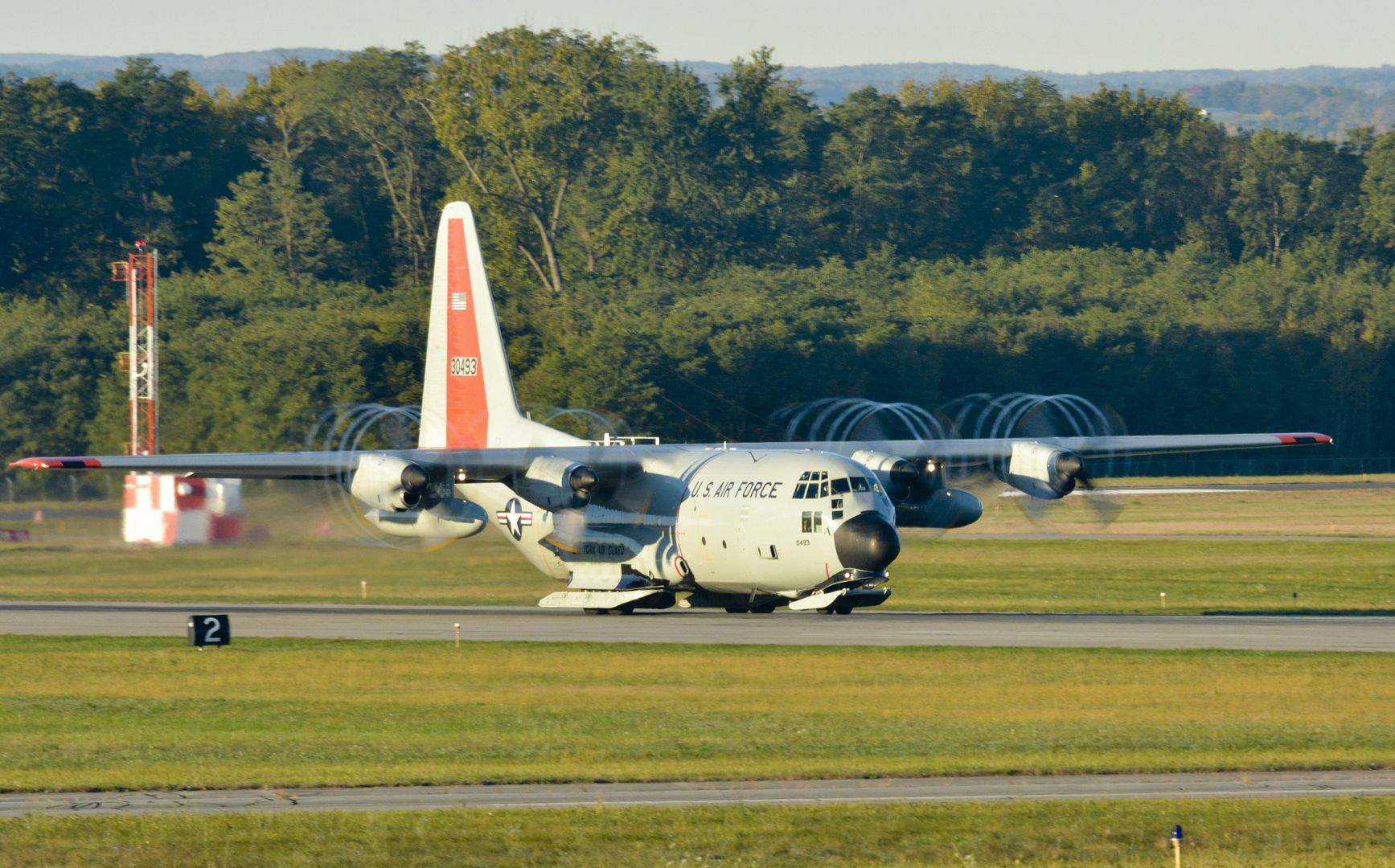
Qantas celebrates its first delivery of the 787 Dreamliner
Qantas has unveiled its first Boeing Dreamliner, the game-changing aircraft that will open up new routes and a new level of comfort for travellers.
The latest flagship of the Qantas fleet, the 787-9 Dreamliner features next generation seating in Economy, Premium Economy and Business Class, with more space and a lower passenger count than most of its competitors.
Other Dreamliner features include larger windows to create a greater sense of space, better air quality to help reduce jetlag and ride dampening technology to minimize the effects of turbulence. It is also quieter, more fuel efficient and generates fewer greenhouse emissions than similarly-sized aircraft
At a ceremony at the Boeing factory in Seattle, Qantas Group CEO Alan Joyce said the first Dreamliner signaled the start of an exciting new era for the national carrier and for the travelling public.
"Taking delivery of a new type of aircraft is always an important milestone for an airline and the 787 is a game-changer. From the distance it's able to fly, to the attention to detail we've put into the cabin design, it will reshape what people come to expect from international travel."
"The Dreamliner makes routes like Perth to London possible, which will be the first direct air link Australia has ever had with Europe. And it means other potential routes are now on the drawing board as well."
"There are lots of elements that combine to make the Qantas Dreamliner special. The seats, the lighting, the entertainment, personal storage, right through to the special crockery that weighs 10 per cent less."
"We're working with sleep specialists at the University of Sydney to see how adjustments to our inflight service can improve wellbeing and help people adjust to new time-zones," added Mr Joyce.
Two Dreamliner routes have been announced so far ? Melbourne to Los Angles starting in December this year and Perth to London starting in March next year. Additional flights from Brisbane have also been flagged.
The name Great Southern Land was chosen for the first aircraft out of 45,000 suggestions from the travelling public. Each Dreamliner will be named after something that is uniquely Australian, including animals, places and literature.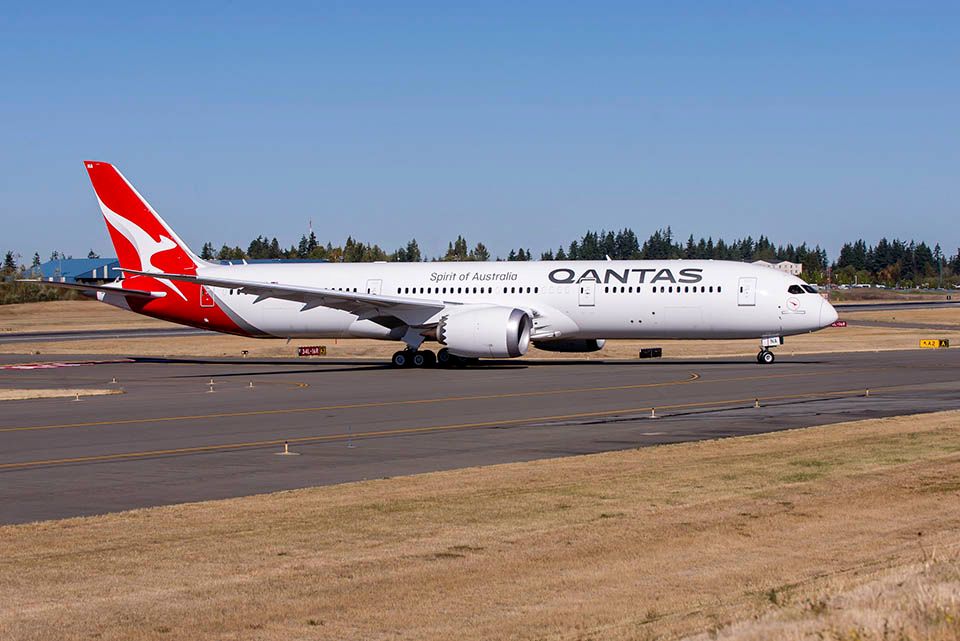
Amsterdam / Montreal, 16 October 2017 ? Airbus SE (EPA: AIR) and Bombardier Inc. (TSX: BBD.B) are to become partners on the C Series aircraft programme. A corresponding agreement was signed today. The agreement brings together Airbus? global reach and scale with Bombardier?s newest, state-of-the-art jet aircraft family, positioning both partners to fully unlock the value of the C Series platform and create significant new value for customers, suppliers, employees and shareholders.
Under the agreement, Airbus will provide procurement, sales and marketing, and customer support expertise to the C Series Aircraft Limited Partnership (CSALP), the entity that manufactures and sells the C Series. At closing, Airbus will acquire a 50.01% interest in CSALP. Bombardier and Investissement Qu?bec (IQ) will own approximately 31% and 19% respectively.
CSALP?s headquarters and primary assembly line and related functions will remain in Qu?bec, with the support of Airbus? global reach and scale. Airbus? global industrial footprint will expand with the Final Assembly Line in Canada and additional C Series production at Airbus? manufacturing site in Alabama, U.S. This strengthening of the programme and global cooperation will have positive effects on Qu?bec and Canadian aerospace operations.
The single aisle market is a key growth driver, representing 70% of the expected global future demand for aircraft. Ranging from 100 to 150 seats, the C Series is highly complementary to Airbus? existing single aisle aircraft portfolio, which focuses on the higher end of the single-aisle business (150-240 seats). The world class sales, marketing and support networks that Airbus brings into the venture are expected to strengthen and accelerate the C Series? commercial momentum. Additionally, Airbus? supply chain expertise is expected to generate significant C Series production cost savings.
Airbus is strongly committed to Canada and its aerospace sector with Canadian suppliers extending their access to Airbus? global supply chain. This new C Series partnership is set to secure jobs in Canada for many years to come.
"This is a win-win for everybody! The C Series, with its state-of-the-art design and great economics, is a great fit with our existing single-aisle aircraft family and rapidly extends our product offering into a fast growing market sector. I have no doubt that our partnership with Bombardier will boost sales and the value of this programme tremendously,? said Airbus Chief Executive Officer Tom Enders. "Not only will this partnership secure the C Series and its industrial operations in Canada, the U.K. and China, but we also bring new jobs to the U.S. Airbus will benefit from strengthening its product portfolio in the high-volume single-aisle market, offering superior value to our airline customers worldwide."
?We are very pleased to welcome Airbus to the C Series programme,? said Alain Bellemare, President and Chief Executive Officer of Bombardier Inc. ?Airbus is the perfect partner for us, Qu?bec and Canada. Their global scale, strong customer relationships and operational expertise are key ingredients for unleashing the full value of the C Series. This partnership should more than double the value of the C Series programme and ensures our remarkable game-changing aircraft realizes its full potential.?
?The arrival of Airbus as a strategic partner today will ensure the sustainability and growth of the C Series programme, as well as consolidating the entire Qu?bec aerospace cluster. In the current context, the partnership with Airbus is, for us, the best solution to ensure the maintenance and creation of jobs in this strategic sector of the Qu?bec economy," said Qu?bec?s Deputy Prime Minister, Minister of Economy, Science and Innovation and Minister responsible for Digital Strategy, Dominique Anglade.
-
 Main AdminATLANTIC OCEAN (Oct. 15, 2017) An F/A-18F Super Hornet, assigned to the "Fighting Checkmates" of Strike Fighter Squadron (VFA) 211, launches from the flight deck aboard USS Harry S. Truman (CVN 75). Truman is currently underway conducting Tailored Shipboard Test Availability and Final Evaluation Problem (TSTA/FEP) in preparation for future operations. (U.S. Navy photo by Mass Communication Specialist Seaman Kaysee Lohmann/Released
Main AdminATLANTIC OCEAN (Oct. 15, 2017) An F/A-18F Super Hornet, assigned to the "Fighting Checkmates" of Strike Fighter Squadron (VFA) 211, launches from the flight deck aboard USS Harry S. Truman (CVN 75). Truman is currently underway conducting Tailored Shipboard Test Availability and Final Evaluation Problem (TSTA/FEP) in preparation for future operations. (U.S. Navy photo by Mass Communication Specialist Seaman Kaysee Lohmann/Released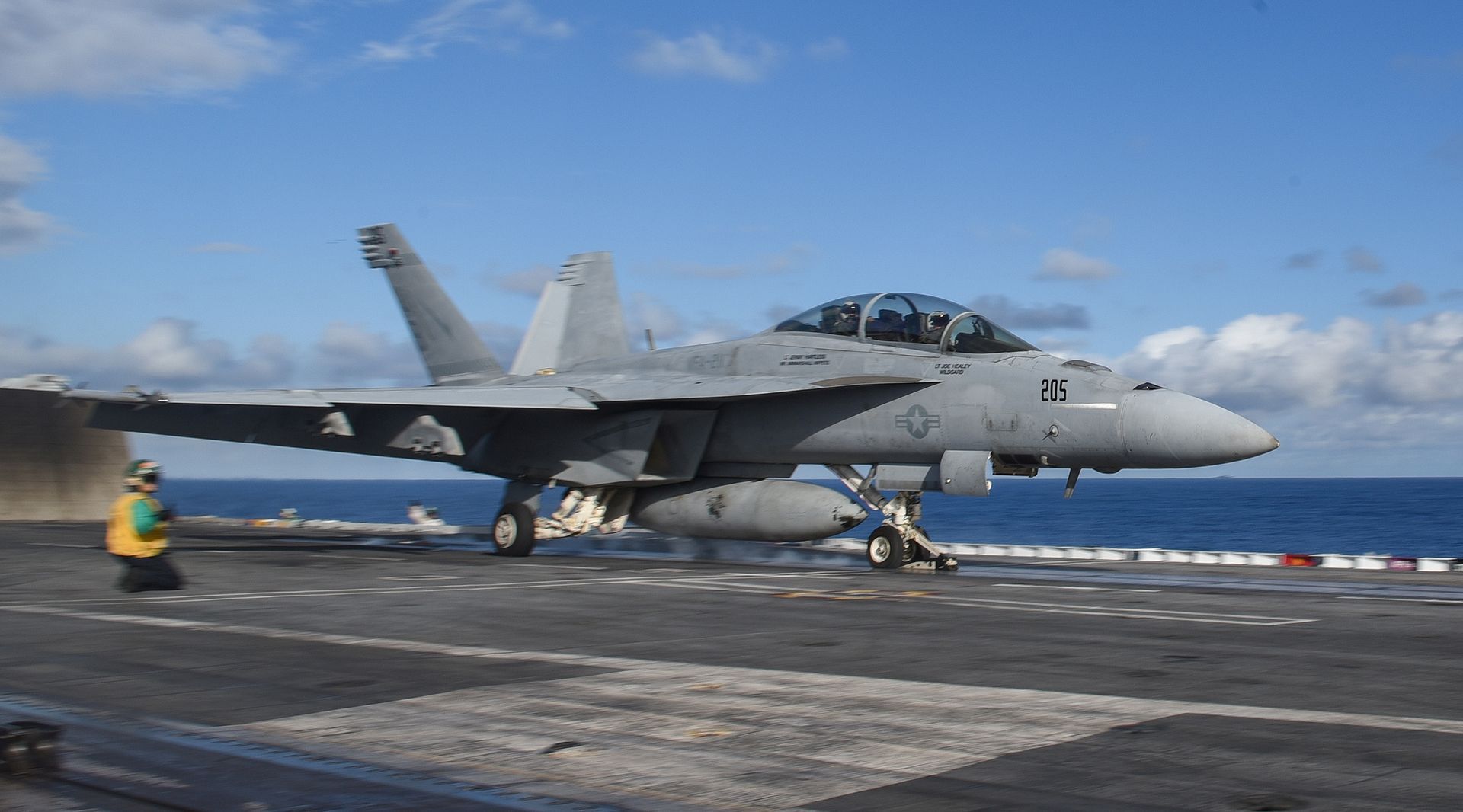
A C-130H Hercules assigned to the 36th Airlift Squadron leaves propeller tip vortices in tis wake as it takes off from Yokota Air Base, Japan, Oct. 16, 2017, during the C-130H farewell ceremony. After completing the ceremony, Yokota sent off its last two C-130Hs. (U.S. Air Force photo by Yasuo Osakabe)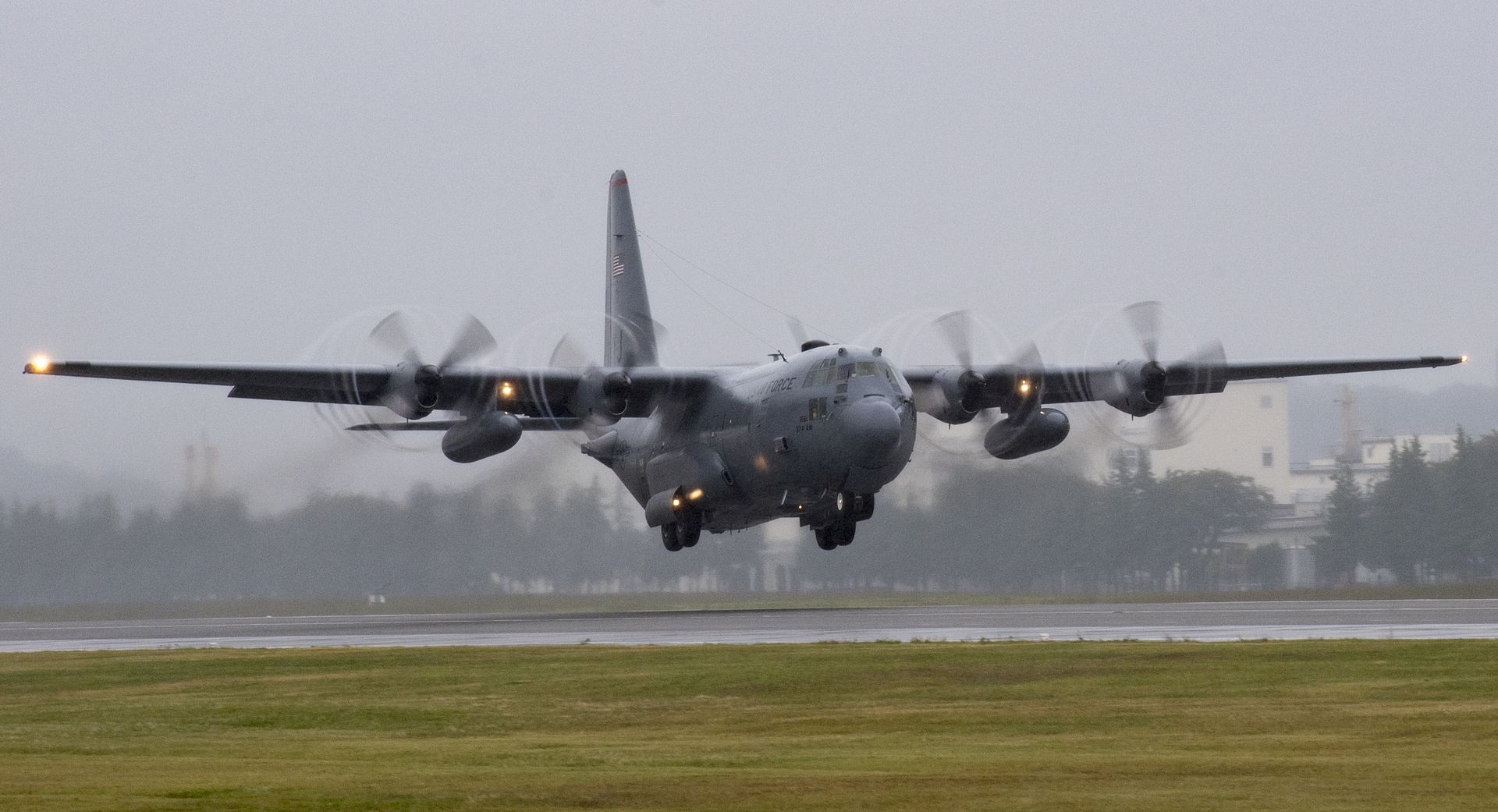
Airbus? latest A330 version prepares for its initial take-off
The new generation of Airbus? popular A330 jetliner family is ready for its maiden flight this week. The A330neo features extensive technology transfers from the A350XWB, including new engines, wings, and systems as well as the signature Airspace cabin. These new features will provide significantly enhanced operating efficiency for airlines, and best-in-class comfort for passengers as well as impeccable environmental characteristics.
Slated for take-off from Toulouse-Blagnac Airport in southwestern France ? home to the A330 final assembly line ? the initial aircraft is one of three jetliners earmarked for flight tests and certification of Airbus? two A330neo variants: the A330-900, and the smaller A330-800.
A330neo attributes: advanced technology, maturity, and commonality
The A330neo integrates many of the technological advances of the A350 XWB while building upon the popularity and maturity of Airbus? A330 airliner family (the world?s most-flown widebody aircraft series: more than 1,360 jetliners delivered; in-service operational reliability of 99.5 percent).
Key features of A330neo new generation technology include Rolls-Royce?s new Trent 7000 turbofan engines, themselves incorporating technology from the Trent XWB that power the A350 and new high-span wings incorporating optimised aerodynamics with new composite Sharklets. The result is new generation efficiency, with the A330neo offering 25% lower fuel burn than previous generation competitors.
In keeping with the Airbus philosophy of commonality across its product lines, pilots will be able to fly the A330neo, A350 XWB and A330 with one single license. And thanks to the Airspace cabin, passengers too will enjoy a seamless experience across the entire Airbus aircraft family.
Performing this week?s maiden flight will be an A330-900 variant, to be joined by one more A330-900 and one A330-800 version. Altogether, they are to accumulate some 1,400 hours of flight time, validating their handling characteristics, system operations, engine performance, cabin functionality and compatibility on airline-type routes.
The A330-900 is planned to receive type certification and enter service with TAP Portugal as the initial airline operator by mid-2018.
Follow live coverage of the A330neo first flight on Twitter and Facebook on October 19 with the hashtag #A330neoFF, starting at approximately 10 a.m. CET, 8 a.m. GMT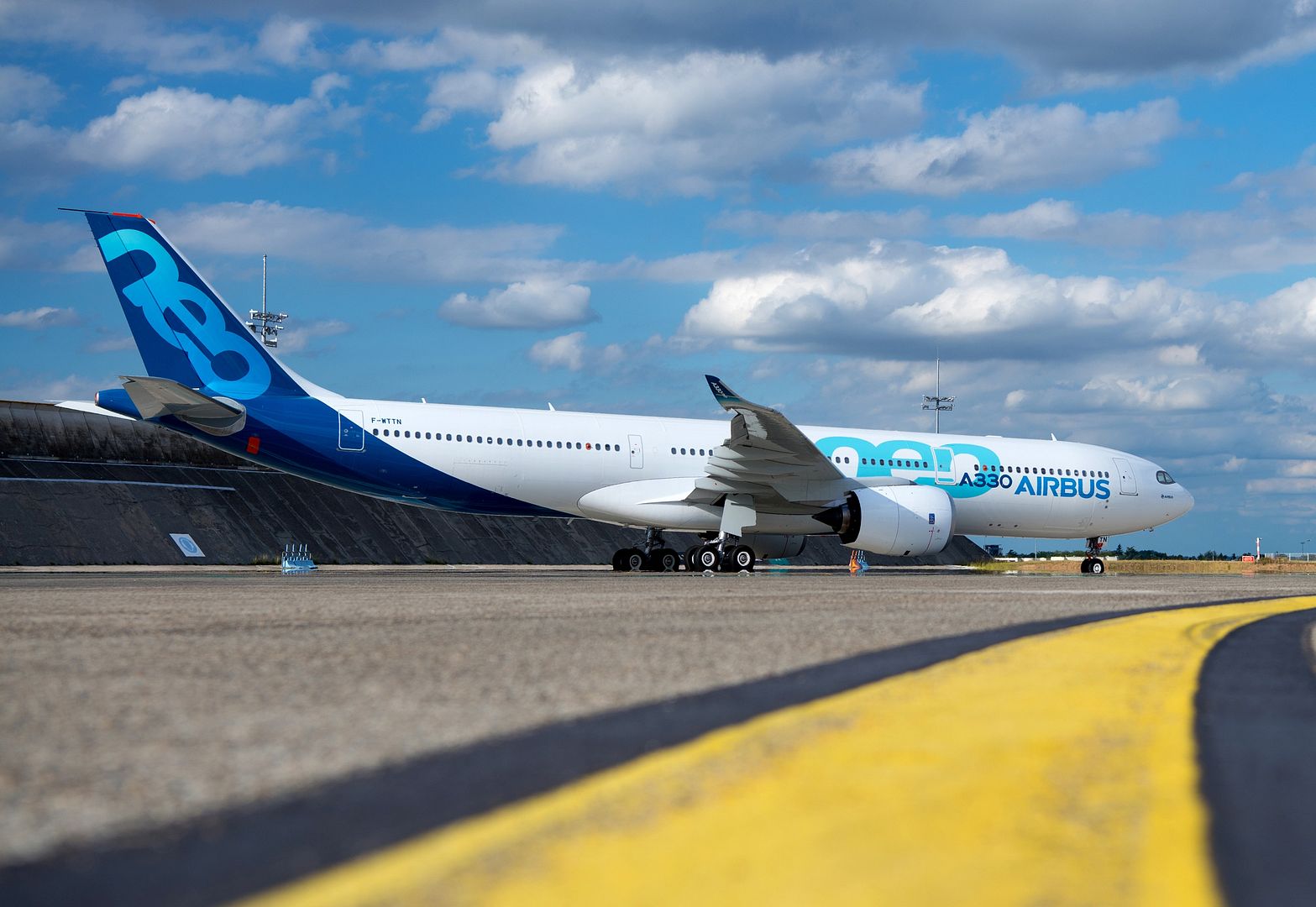
Post a reply
- Go to Previous topic
- Go to Next topic
- Go to Welcome
- Go to Introduce Yourself
- Go to General Discussion
- Go to Screenshots, Images and Videos
- Go to Off topic
- Go to Works in Progress
- Go to Skinning Tips / Tutorials
- Go to Skin Requests
- Go to IJAAF Library
- Go to Luftwaffe Library
- Go to RAF Library
- Go to USAAF / USN Library
- Go to Misc Library
- Go to The Ops Room
- Go to Made in Germany
- Go to Campaigns and Missions
- Go to Works in Progress
- Go to Juri's Air-Raid Shelter
- Go to Campaigns and Missions
- Go to Works in Progress
- Go to Skinpacks
- Go to External Projects Discussion
- Go to Books & Resources
